Embark on an unforgettable 7-day Tokyo itinerary as you uncover the dazzling gems of Japan’s iconic capital city. Having extensively explored Tokyo for months, I’ve crafted the ultimate Tokyo itinerary to help you tailor your journey to perfection. Tokyo, a city that tops many travellers’ must-visit lists, offers a stunning blend of rich history, vibrant culture, and mouthwatering cuisine.
Tokyo, my personal favourite destination, mesmerizes with its electrifying energy, tranquil Zen corners, diverse dining options, and delectable dishes. This comprehensive Tokyo 7 day itinerary transports you through time as you visit historic neighbourhoods, spiritual sites, serene parks, and pulsating districts. So, grab a cup of tea, buckle up, and let’s dive into the best Tokyo has to offer during your 7-day stay.
Buy this Tokyo 7 Day Itinerary as a PDF ebook. It’s a printable itinerary with useful tips and resources that you can take with you on your trip to Japan.
Table of Contents
- Tips for first time visitors
- Useful resources for first timers
- How to get around Tokyo
- Where to stay in Tokyo
- Complete 7 days in Tokyo itinerary
- How to get to Tokyo from Narita airport
- How to get to Tokyo from Haneda airport
- Day 1: Shibuya & Harajuku
- Day 2: Shinjuku
- Day 3: Asakusa and Ueno
- Day 4: Ginza & Central Tokyo
- Day 5: Yanaka Ginza
- Day 6: Aoyama & Roppongi hills
- Day 7: Shibamata
- More things to add to your Tokyo 7 day itinerary
- Day trips from Tokyo
- Final Thoughts
- Frequently Asked Questions
Tips for first time visitors
- Purchase a prepaid Suica or Pasmo card to make commuting via public transportation more convenient. These cards are rechargeable and can be used on trains, buses, and even for purchases at some stores. Get them from any main subway station or the airport.
- To stay connected, rent a pocket Wi-Fi device or buy a prepaid SIM card. This will help you use navigation apps, use a translator, and do some extra research on the go. I recommend ordering it in advance. You can pick it up either at the arrivals at Narita airport or Haneda airport, or have it delivered to the hotel reception if that’s most convenient.
- Tokyo’s public system can be overwhelming, but with the use of Google maps, it’s super easy to get around. The metro lines are colour coded for your ease and Google Maps even tells you in real time the next train, the best car for boarding and where to make connections.
- While cards are widely accepted, many small establishments, particularly in older neighbourhoods, still prefer cash. Take some Japanese yen with you. Major banks in Japan now accept international cards for cash withdrawals, too. Speaking of money, check out how expensive is Japan.
- Be aware of Japanese customs and manners such as removing your shoes before entering someone’s home or specific rooms in restaurants, bowing as a form of greeting, and not tipping at restaurants.
- Knowing a few simple Japanese phrases can go a long way in making your trip more enjoyable. If you’re serious about learning Japanese, I recommend Japanese with Aimee. Use YCTRAVEL when you sign up and get 10% discount on the course. It’s a great deal, right?
- Tokyo is a food lover’s paradise, so research and plan what you’d like to eat in advance. Most popular restaurants will have a long queue, while others will require a reservation in advance.
- Tokyo is a large and awesome city, and you’ll want to do a lot of walking. Wear comfortable travel shoes for your visit. On my last visit to Tokyo, I walked 20 km every single day!
- For those on a budget, visit Japanese convenience stores, or “konbini,” for snacks, drinks, and meals at affordable prices. You can also grab a quick drink or bite from a vending machine.
Buy this Tokyo 7 Day Itinerary as a PDF ebook. It’s a printable itinerary with useful tips and resources that you can take with you on your trip to Japan.
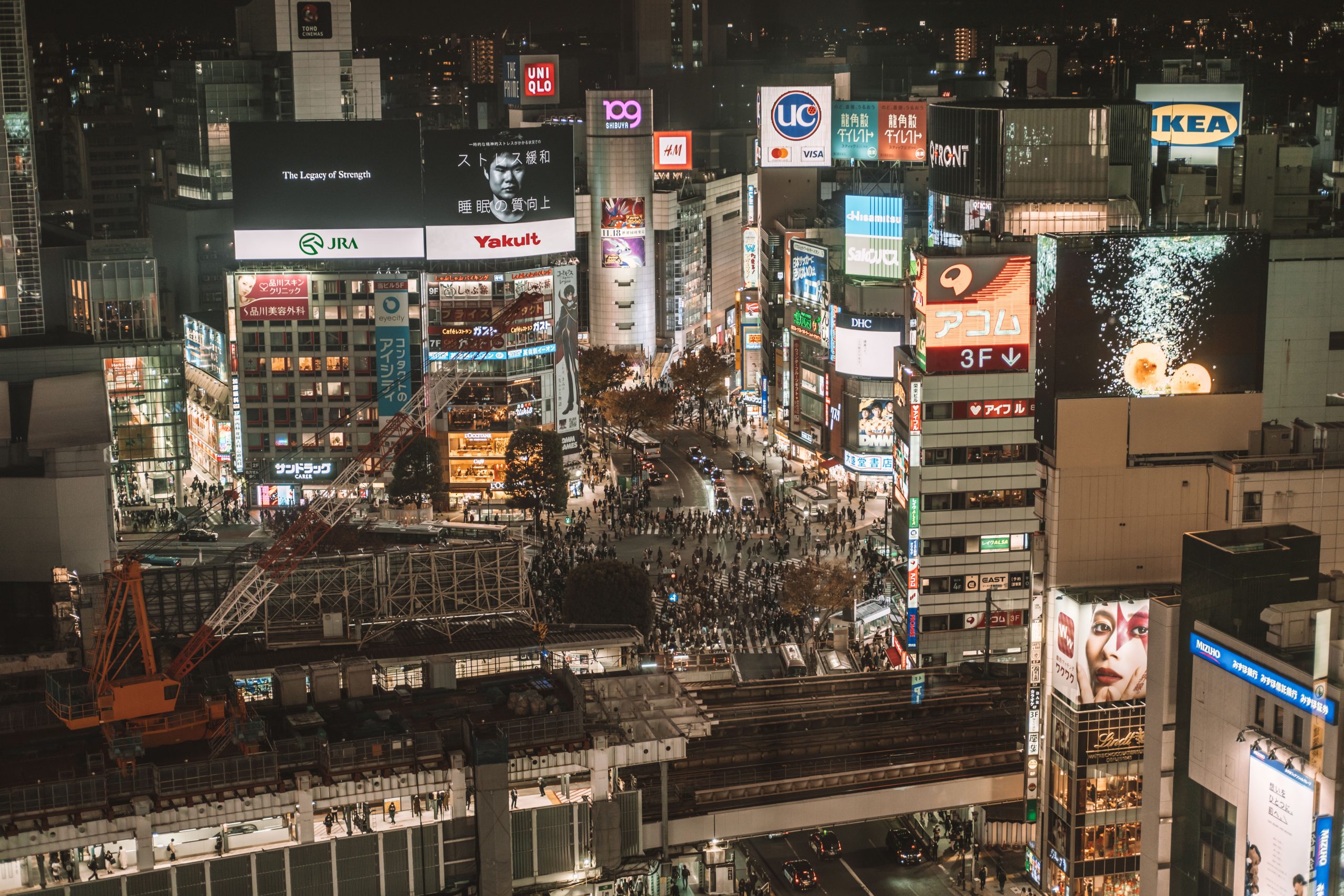
Useful resources for first timers
- Check all the dos and donts for when you are planning your first trip to Japan.
- Learn what to pack for Japan to ensure you have the perfect wardrobe for every season.
- When planning your first trip to Tokyo, it’s a good ideal to check the best time to visit Japan. Remember that cherry blossom season is a lot busier and more expensive.
- I highly recommend booking most of your activities in Tokyo in advance. Popular attractions can book up in advance so it’s always best to have all your tickets ready. This also means less queuing.
- Japanese food is excellent everywhere you go. However, I do recommend a food tour to take advantage of lesser known gems. Locals will take you to some off the beaten path izakayas which may look intimidating to first timers otherwise.
- If you wish to stay a little extra in Japan, make sure to check our Japan itineraries with details on where to go, and how to plan the perfect trip. For this, I recommend that you invest in a JR Pass to save you lots of money.
- When it comes to customs and manners, Japan can be fairly peculiar which is the joy of seeing such different country! I strongly suggest that you get our Japanese customs and manners book with fun Japanese illustrations and crucial information on how you should behave in various scenarios when visiting Tokyo!
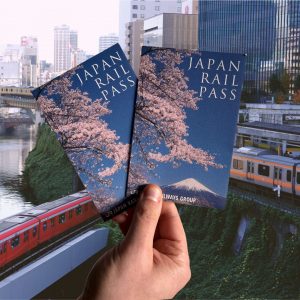
Japan Rail Pass
The optimal way to explore Japan is with a rail pass that is available for durations of 7, 14, or 21 days, offering unlimited travel across the country. Shinkansen included!
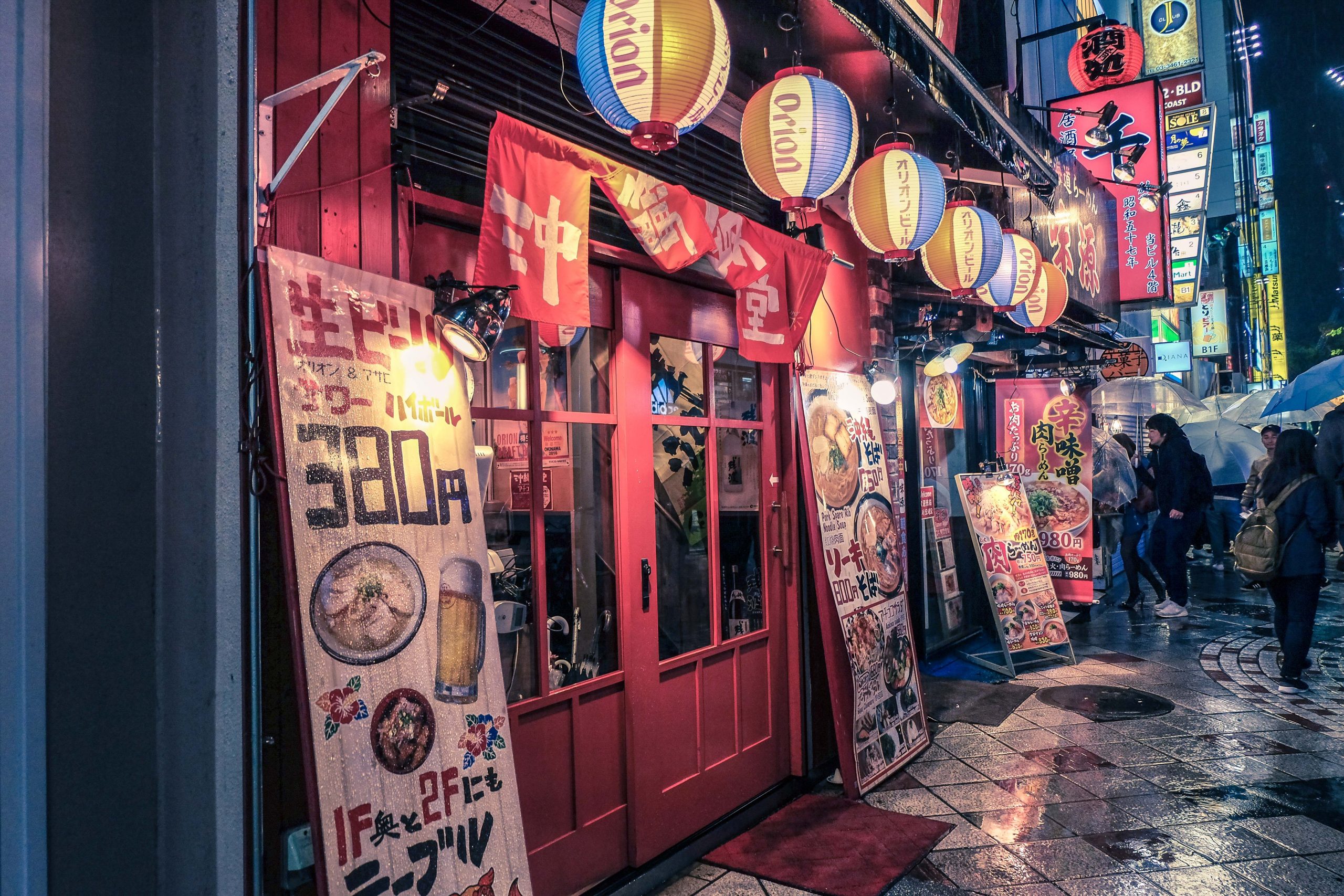
How to get around Tokyo
Tokyo is HUGE. The core of Tokyo with its 23 special wards covers an area of about 621 square kilometres (240 square miles). But Tokyo is also incredibly well-connected, with the most impressive subway and train system.
Every attraction and location in this itinerary can be reached via train or subway, and I will explain exactly how to get there.
Get a prepaid Suica or Pasmo card and simply tap it every time you enter and exit a subway station. You can also use these cards on JR trains, if you intend to use the Yamanote line.
Once you get to your desired neighbourhood, know that many of Tokyo’s neighbourhoods are pedestrian-friendly and best explored on foot.
Tokyo has a growing bike-sharing system, with rental stations located throughout the city. Biking can be a fun and efficient way to explore Tokyo, particularly in areas with less congestion.
Narita and Haneda airports are well-connected to central Tokyo station via trains, buses, and taxis. The Narita Express, Keisei Skyliner, and Tokyo Monorail are popular options for reaching the city from the airports.
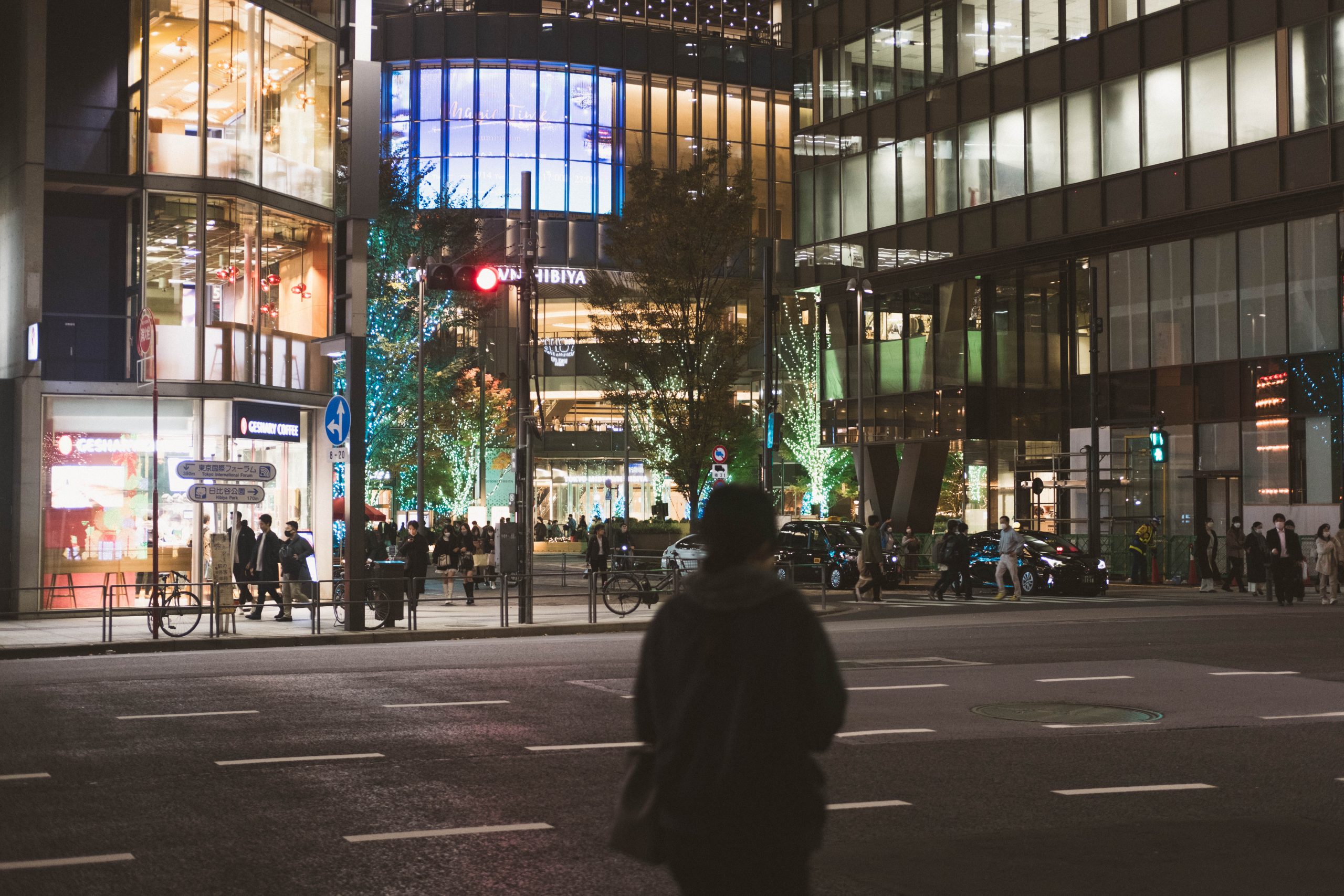
Where to stay in Tokyo
When picking the right accommodation, it’s important to stay somewhere close to a subway station as otherwise, you will end up walking a lot every day. I’ve stayed in many hotels in Tokyo, and my favourites were always in Ginza or Chiyoda area because you have many subways lines to pick from and 3 mayor stations nearby.
For a complete breakdown on all important areas in Tokyo and reviews of my favourite hotels, read my where to stay in Tokyo article. I talk about different areas and why they are most suitable for your type of travel style and budget. I also recommend my favourite hotels in Tokyo, organised by budget.
- Best luxury hotel: Hotel Chinzanso Tokyo
- Best mid-range hotel: The Blossom Hibiya
- Best budget hotel: Tokyu Stay Shinjuku Eastside
For more hotels and reviews, I recommend using Booking.com for accommodation in Tokyo.
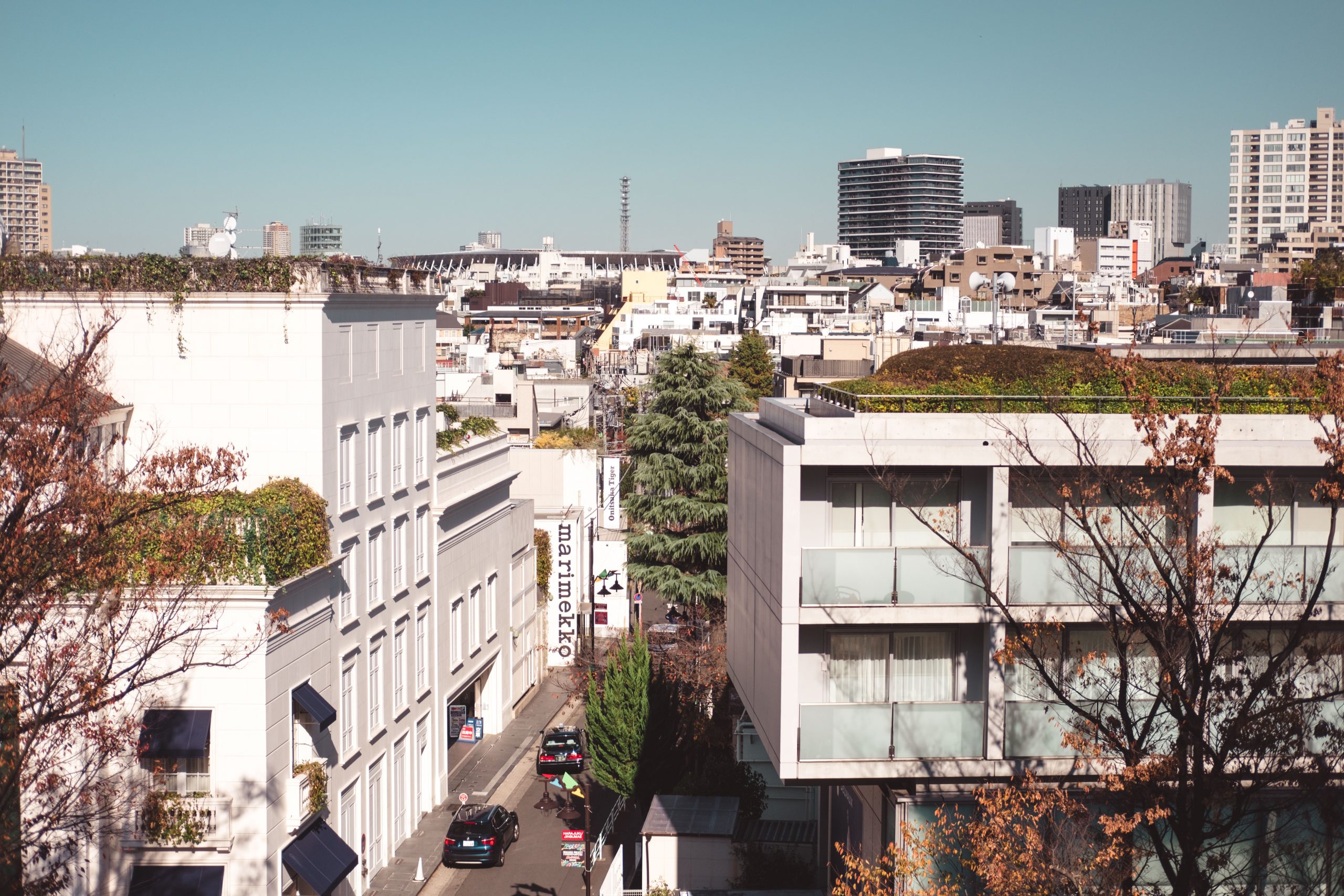
Complete 7 days in Tokyo itinerary
How to get to Tokyo from Narita airport
- Narita Express (My recommended route): The Narita Express is a convenient and comfortable limited express train that connects Narita Airport with major stations in Tokyo, including Tokyo Station, Shinjuku Station, Shibuya Station, and Shinagawa Station. The journey to Tokyo Station takes around 1 hour and costs about 3,070 yen for an ordinary class seat. If you have a JR Pass, you can use it on the Narita Express.
- Keisei Skyliner: The Keisei Skyliner is a high-speed train that connects Narita Airport with Nippori Station and Ueno Station. The trip takes around 45 minutes to Ueno. The fare for a reserved seat is about 2,520 yen. From Ueno Station, you will need to change to a local subway line to get to your final destination in Tokyo.
- Limousine Bus: Airport limousine buses connect Narita Airport with major hotels and train stations in Tokyo. The journey takes around 60-120 minutes, and fares range from 2,800 to 3,100 yen.
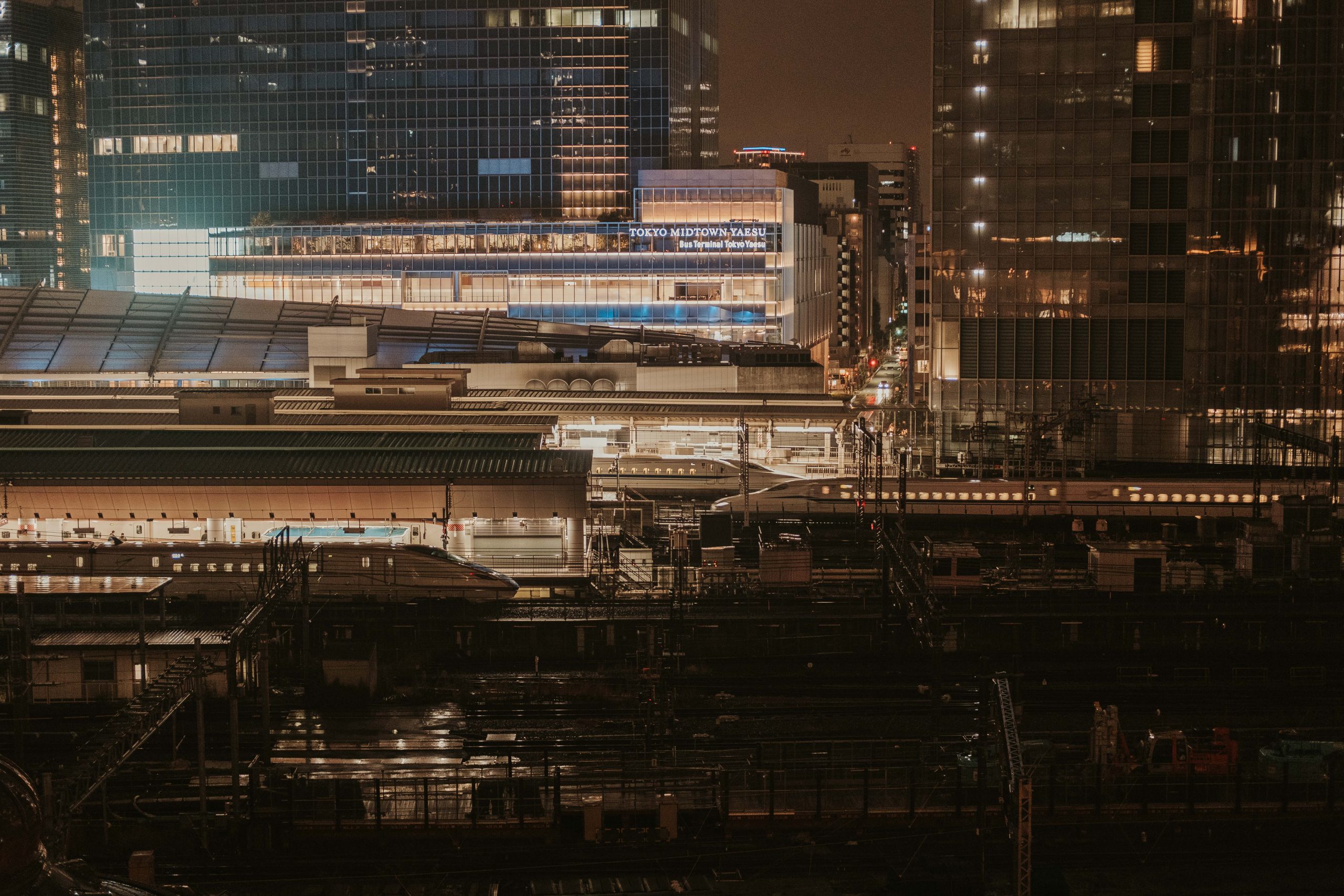
How to get to Tokyo from Haneda airport
- Tokyo Monorail (My recommended route): The Tokyo Monorail connects Haneda Airport with Hamamatsucho Station. Transfer here to the JR Yamanote Line and JR Keihin-Tohoku Line. The trip takes about 13-18 minutes and costs 500 yen. If you have a JR Pass, you can use it on the Tokyo Monorail.
- Keikyu Line: The Keikyu Line connects Haneda Airport with Shinagawa Station, a major hub in Tokyo. The trip takes about 11-14 minutes and costs 300 yen. Change here for the local subway lines.
- Limousine Bus: Airport limousine buses connect Haneda Airport with major hotels and train stations in Tokyo. The journey can take between 30-90 minutes, and fares range from 800 to 1,300 yen.
- Private Car Hire: It’s a bit pricy, but oh-so comfortable. For around $40 per person, the driver will pick you up at Haneda and drop you off at your hotel. Perfect after a 12+ hour flight.
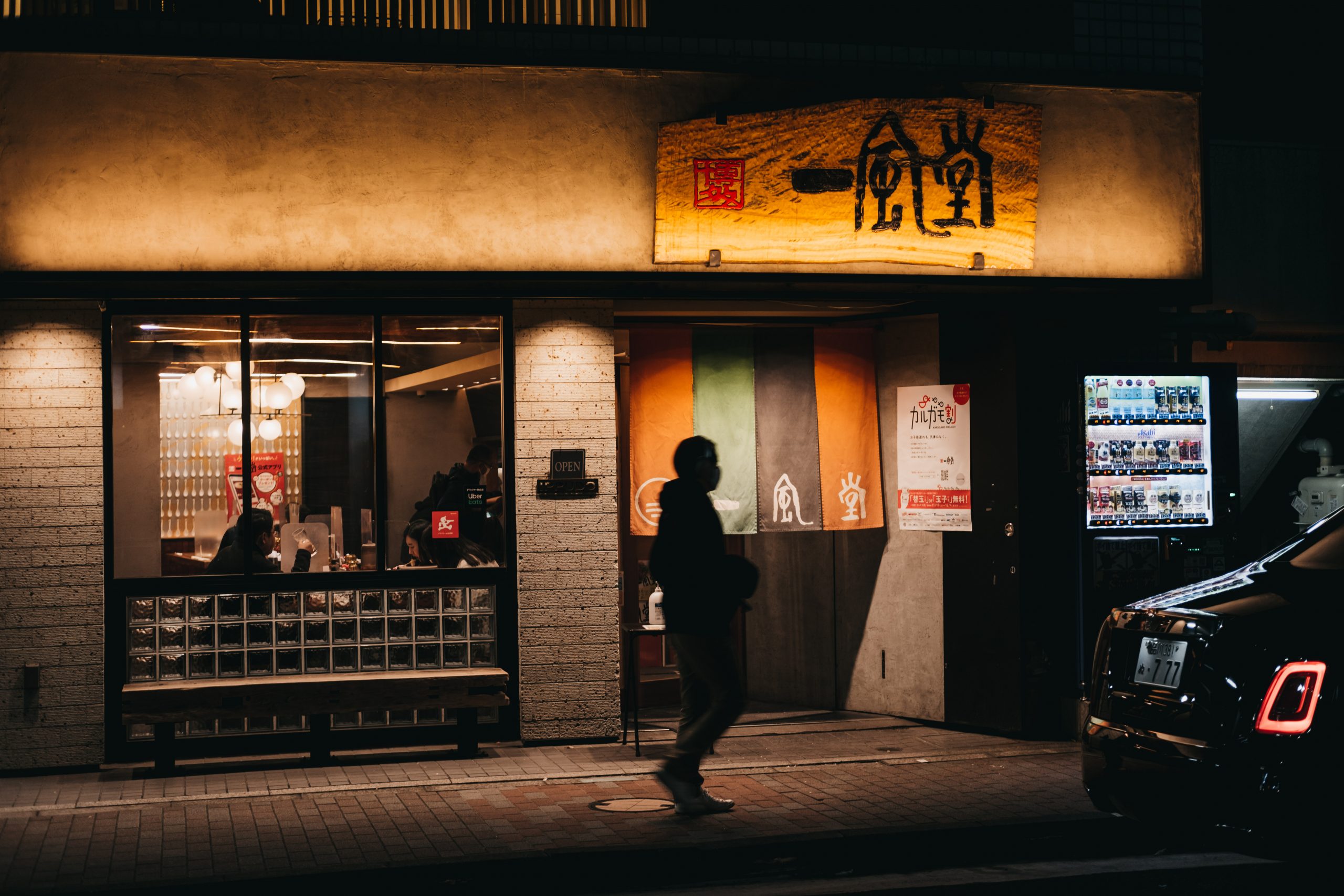
Day 1: Shibuya & Harajuku
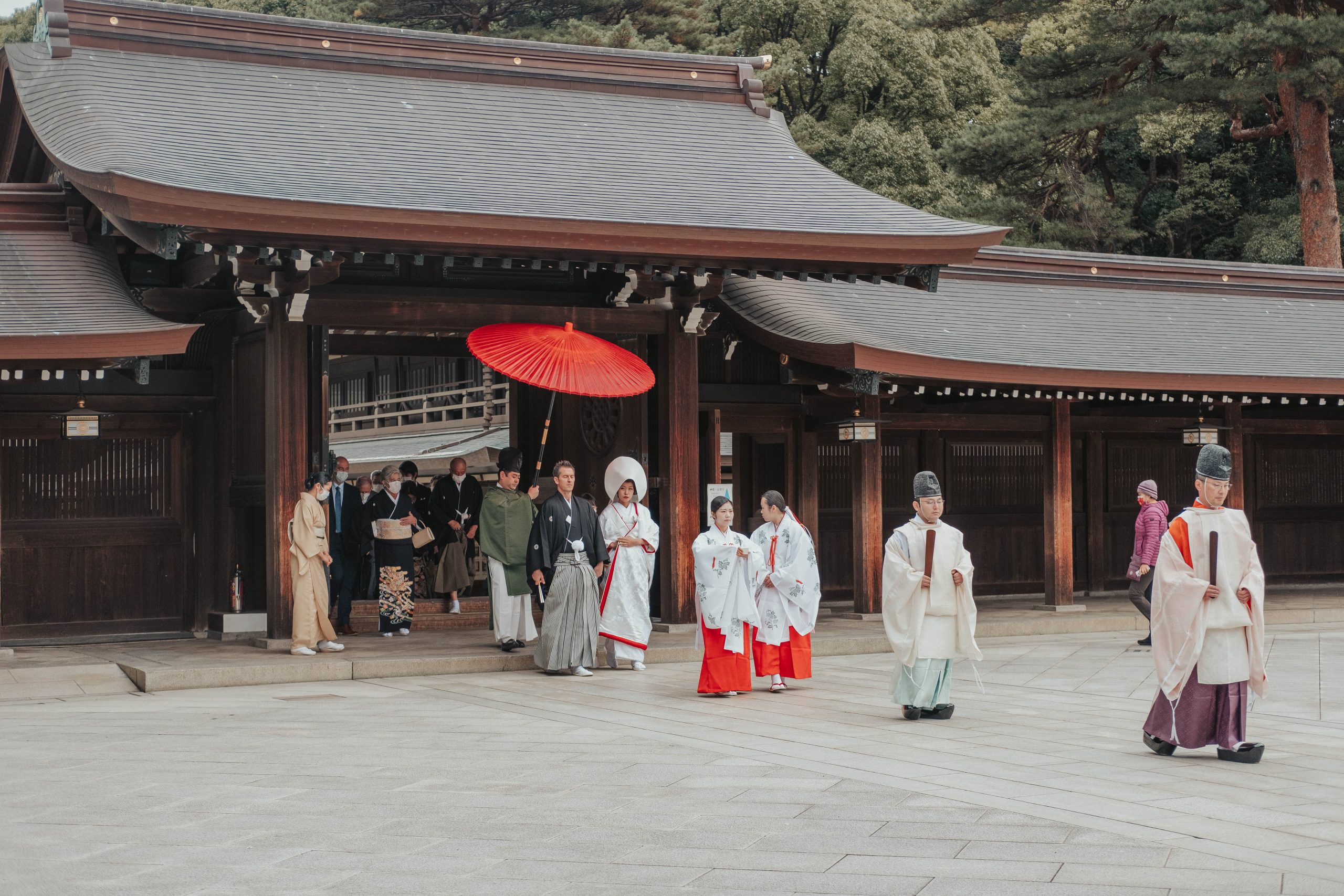
Visit Meiji Shrine – Start your first morning in Tokyo with a visit to Meiji shrine and Yoyogi park. Both are located in the Shibuya district and easily accessible from Harajuku station on the JR Yamanote line. Meiji Shrine (Meiji Jingu) is a famous Shinto shrine dedicated to Emperor Meiji and Empress Shoken. It’s surrounded by a lush forest for the perfect morning tranquillity. To enter the shrine grounds, you’ll pass through a massive torii gate and walk along a peaceful gravel path. It’s not uncommon to see wedding ceremonies held here. Every time I visited, I was fortunate enough to see a traditional Japanese wedding.
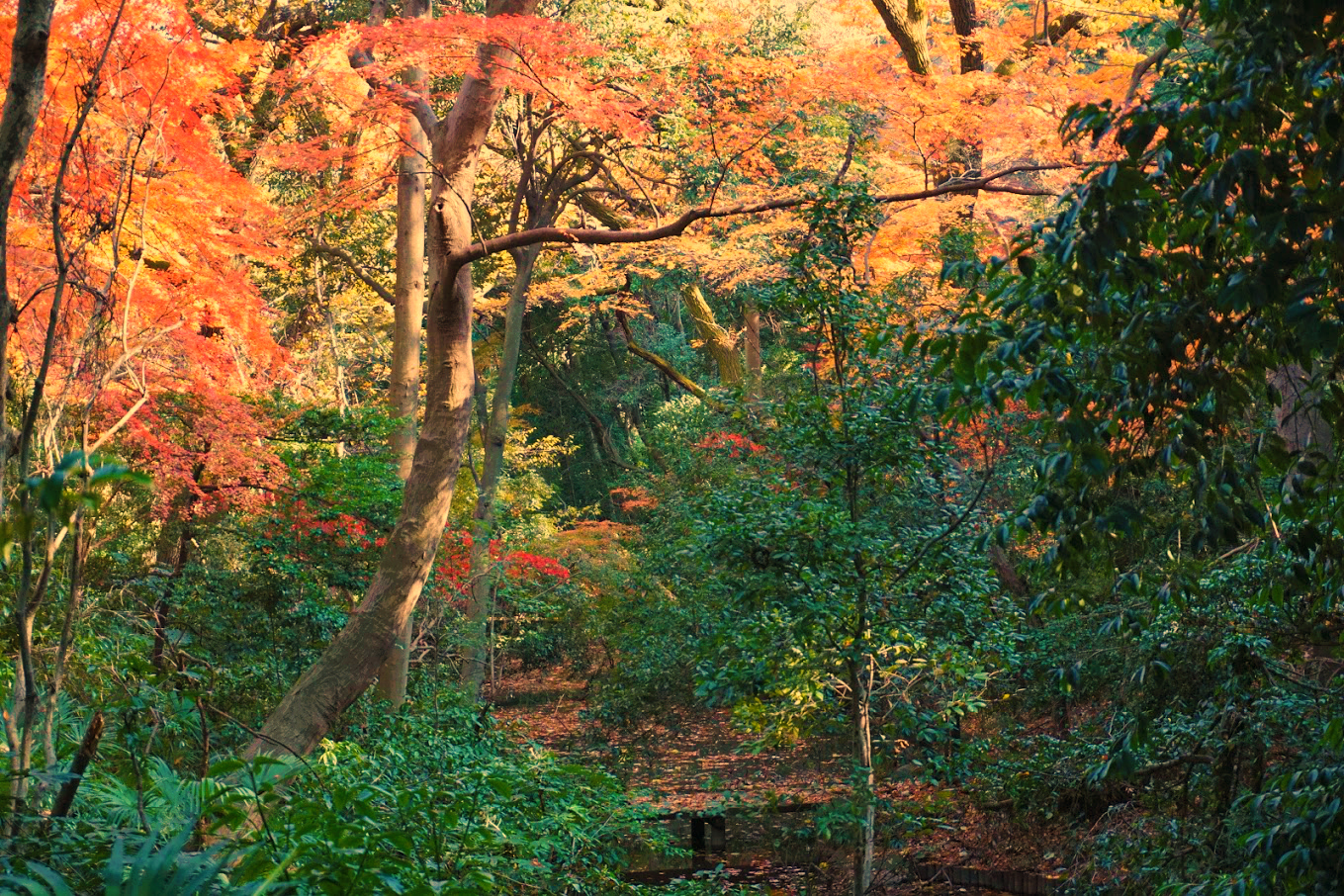
Yoyogi Park – Head over to the adjacent Yoyogi Park, where you’ll find many locals engaging in various activities like jogging, yoga, and dancing. If you visit during the cherry blossom season, you’ll see so many beautiful cherry trees throughout the park. Autumn, for the Koyo festival, is another popular time to admire the park. Don’t miss the ginkgo tree avenue, which turns into a stunning golden colour during the autumn months.
Explore Takeshita Street in Harajuku – Just a short walk from Yoyogi Park, head to Takeshita street, a narrow pedestrian street known for its alternative fashion, unusual shops and youthful atmosphere. Many come here to find unusual fashion boutiques and vintage clothing stores. Even the food is colourful here as you can find various crazy pancakes filled with cream, fruit and cakes, as well as rainbow sandwiches and the most popular, the rainbow candy floss.
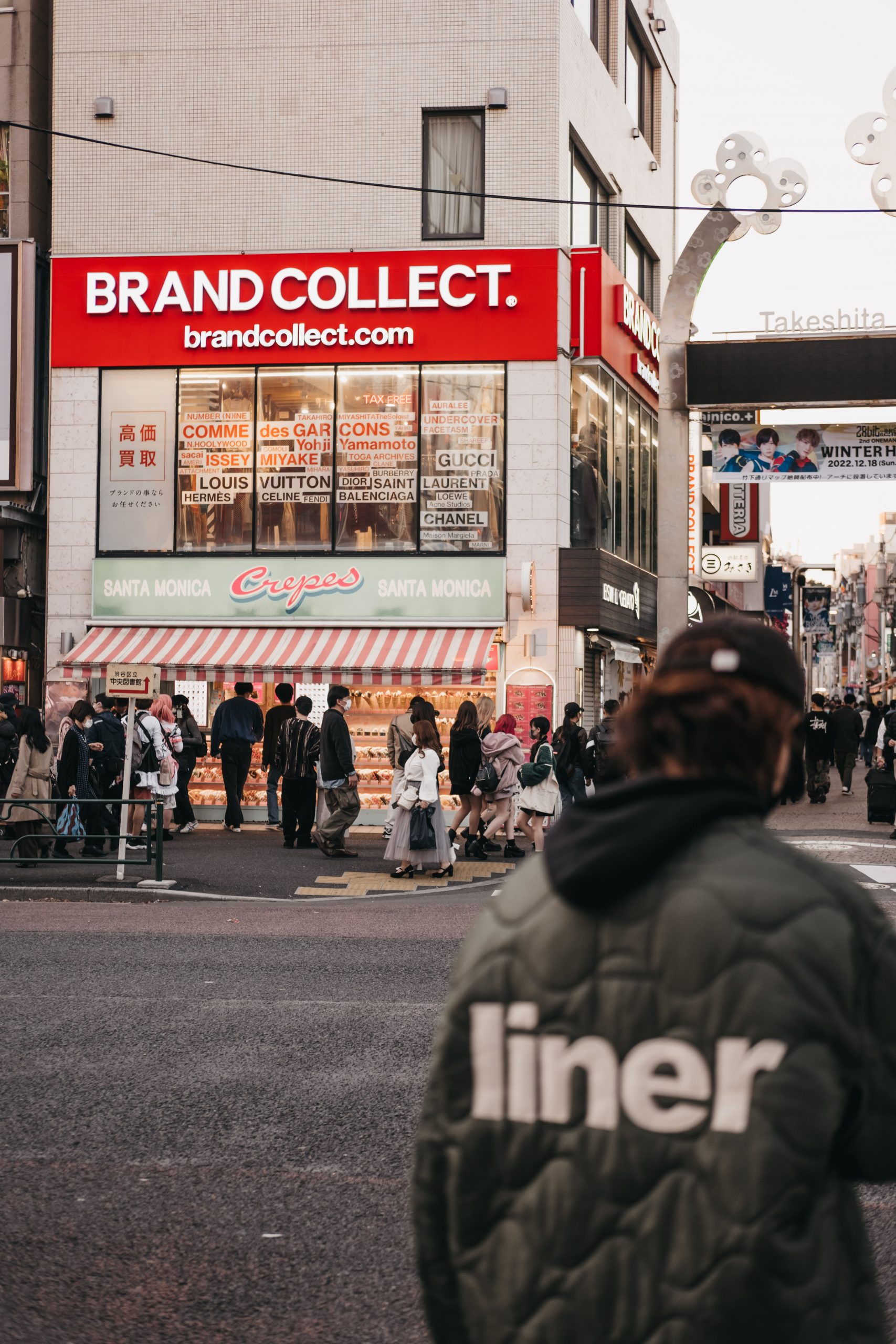
Takeshita street can get very busy, and it’s a fun avenue to check out, especially if you travel with kids. However, fair warning, it’s not a very traditional experience in Tokyo and many shops are specifically tailored for tourists nowadays. It’s still a fun and exciting place to visit in Tokyo.
Lunch Options – There are so many cool lunch options in Harajuku ranging from ramen to awesome gyoza to the best tonkatsu ever! Here are my favourites:
- Tonkatsu – For a more substantial lunch, you’ll definitely want to enjoy Tonkatsu from Maisen Aoyama. This is my top recommendation for lunch in Harajuku as it’s one of my favourite restaurants in Tokyo. It’s just 10-minute walk from Takeshite street. the restaurant has plenty of seating inside and several pork options on the menu. There’s almost always a queue, but it usually goes fast and it’s well worth it.
- Ramen – Known for their Yuzu infused ramen, Afuri Ramen is a popular ramen chain with a location in Harajuku. It’s light, citrusy and so delicious. A fantastic experience for ramen lovers.
- Gyoza – If you’re after delicious, affordable gyoza (Japanese dumplings), Harajuku Gyoza Lou is a must-visit. Enjoy pan-fried and steamed gyoza. Yum!
- Desserts – Try Harajuku crepes are very popular as they are full of colours and fun. Try them from Marion Crepes, Santa Monica Crepes, or Angel’s Heart. For something more colourful, head to Totti Candy Factory to get a large rainbow-coloured candy floss. It does get very busy at times, so be prepared to queue.
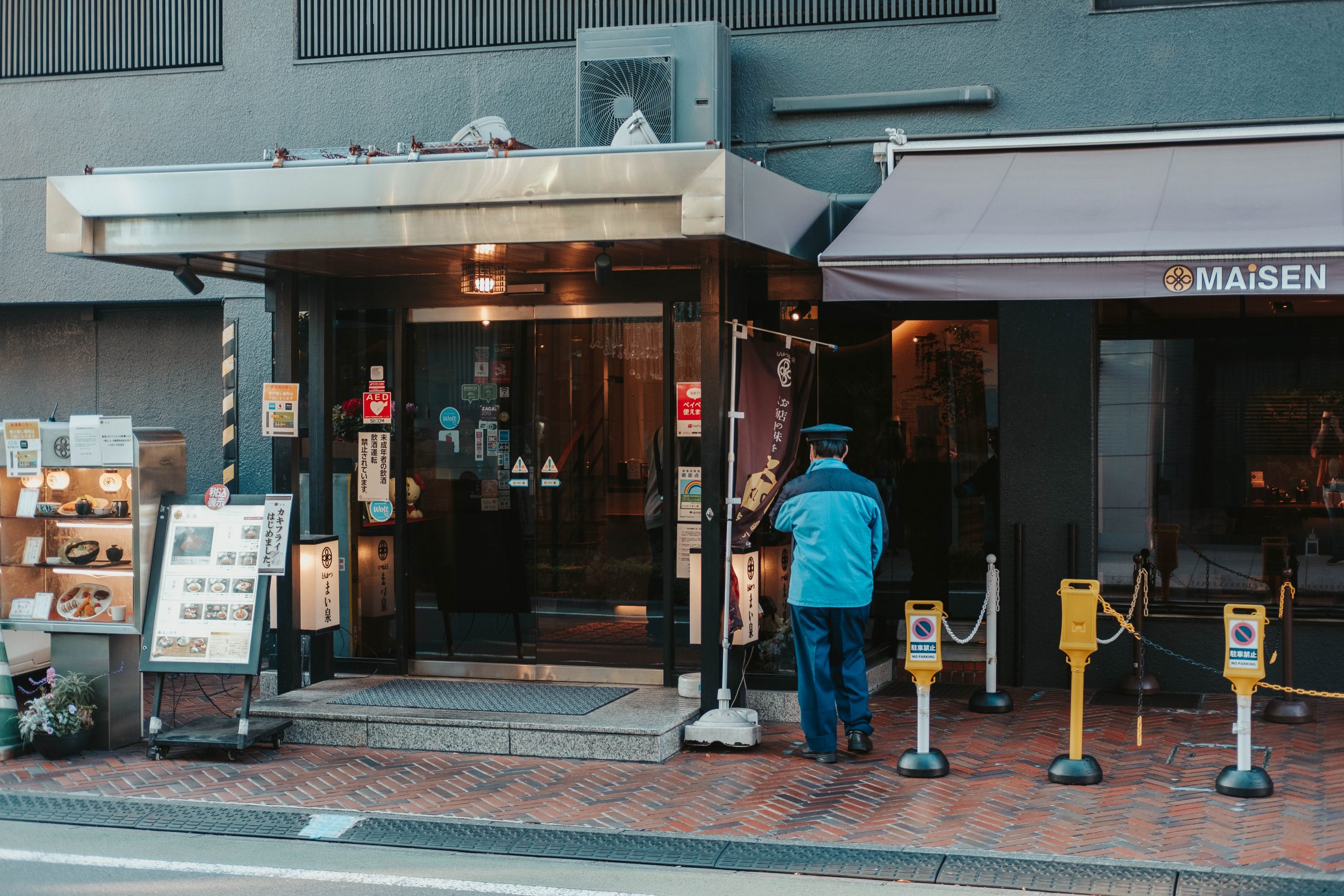
Shibuya Crossing – Make your way to Shibuya station to spend the first day in Tokyo in one of the most iconic and energetic neighbourhoods. Exit Shibuya station at the Hachiko exit to see the popular statue of Hachiko the dog. Hachiko is the loyal Akita dog who waited for his owner at Shibuya Station every day for nearly a decade, even after his owner passed away.
It’s time to enjoy the Shibuya crossing! Cross the pedestrian scramble, which has thousands of people crossing from all directions. Don’t worry, it may seem overwhelming, but everyone keeps to their own lane and directions. Japan is super organised.
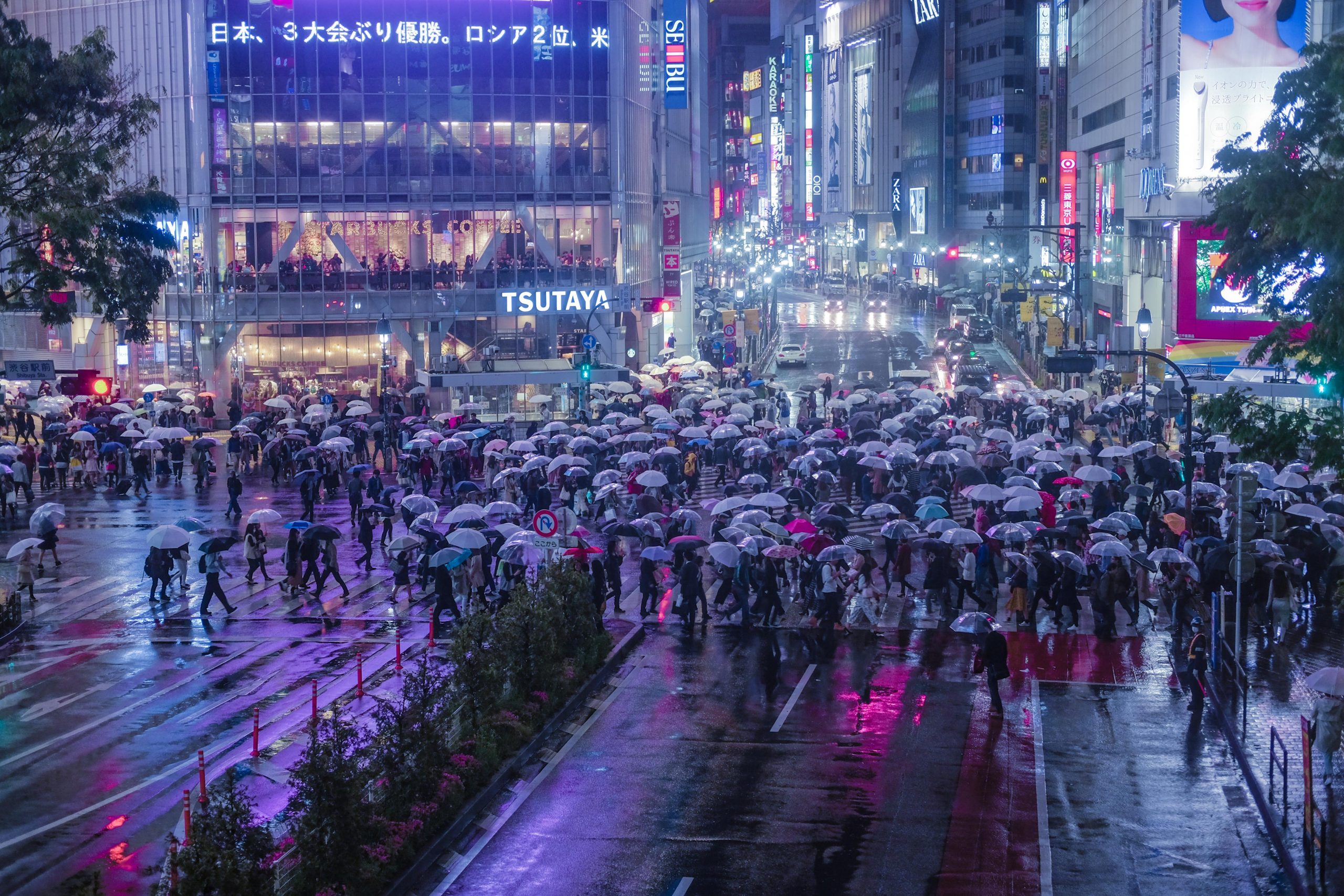
For the best view of Shibuya Crossing, head to Shibuya Sky Observation Deck, which features an open-air sky stage. I recommend pre-purchasing your tickets online as there are limited slots every day. If you can, try to aim for a sunset slot.
Explore Shibuya’s shopping and fashion districts – There are so many cool things to do in Shibuya. Take some time to wander through the neighbourhood for shopping and electronics. Head to Shibuya 109, a great place with over 120 shops inside. Shibuya Hikarie is another retail complex which should be on your itinerary. Head to floor 11 for free epic views of Shibuya crossing from above.
Shibuya Parco is one of my favourite places in Shibuya because of its calm and serene rooftop. It’s a calming and stunning place which allows you to admire Tokyo from above.
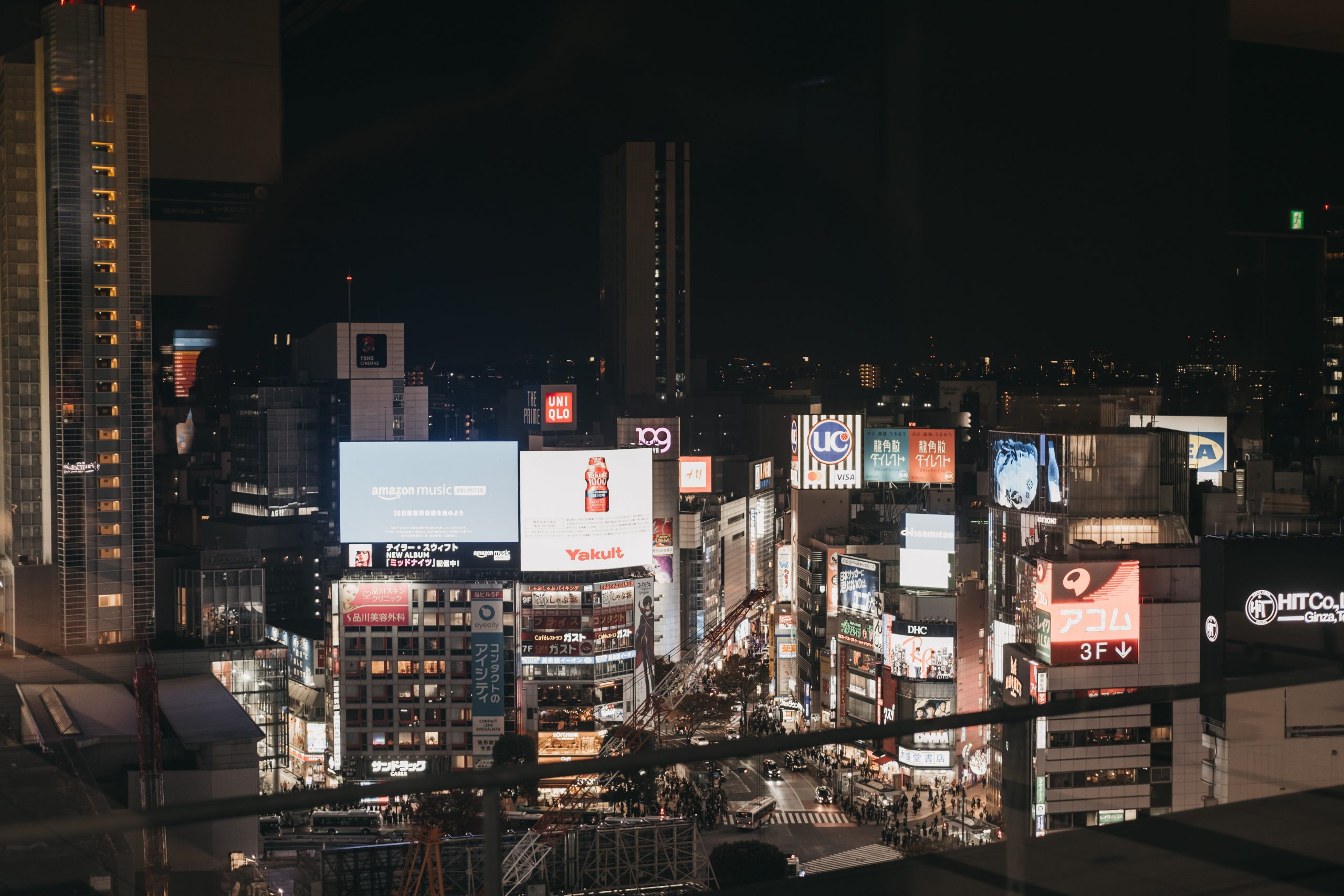
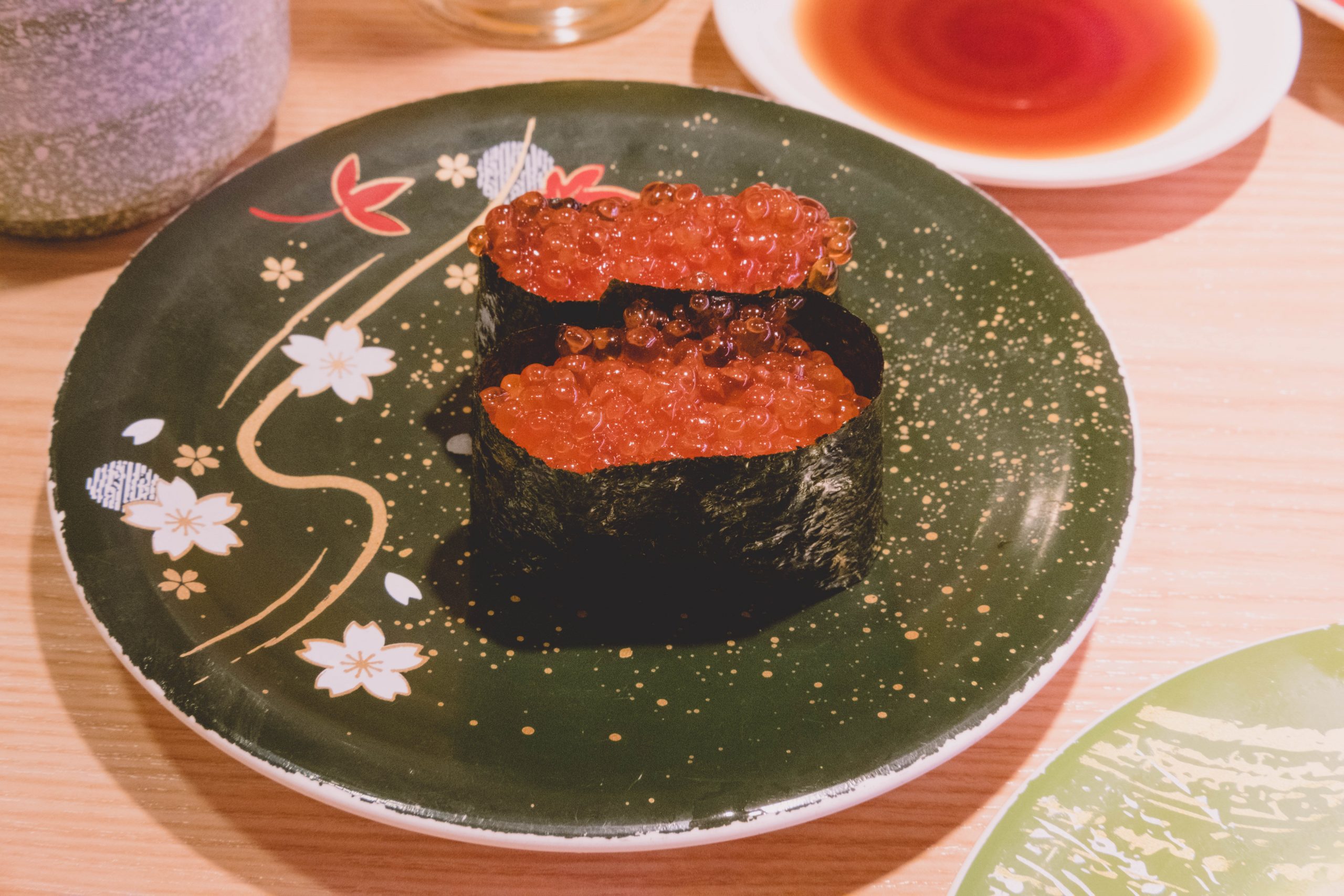
For great souvenirs, I recommend visiting Loft. It’s impossible to go in and not come out with a bag full of cool items.
Dinner at Katsumidori Seibu Shibuya – It’s Tokyo, it’s the first day, and you will want to enjoy lots and lots of sushi right? I know I did on my first day in Tokyo. Head to Katsumidori Seibu Shibuya, a cool conveyor belt sushi restaurant. Order on the tablet and see the cute little Shinkansen trains deliver your sushi order right to your table. It’s such a fun and unique experience in Tokyo.
Day 2: Shinjuku
Visit Shinjuku Gyoen National Garden – Start the day with a tranquil visit to the Shinjuku Gyoen. The park is easily accessible from the Shinjuku station, one of Tokyo’s main transportation hubs and busiest train station. From the station, walk for about 10 minutes to the park entrance.
The park is divided into three main sections: the Japanese Traditional Garden, the French Formal Garden, and the English Landscape Garden. The gardens are most beautiful during the cherry blossom season and in the autumn when the leaves start to turn.
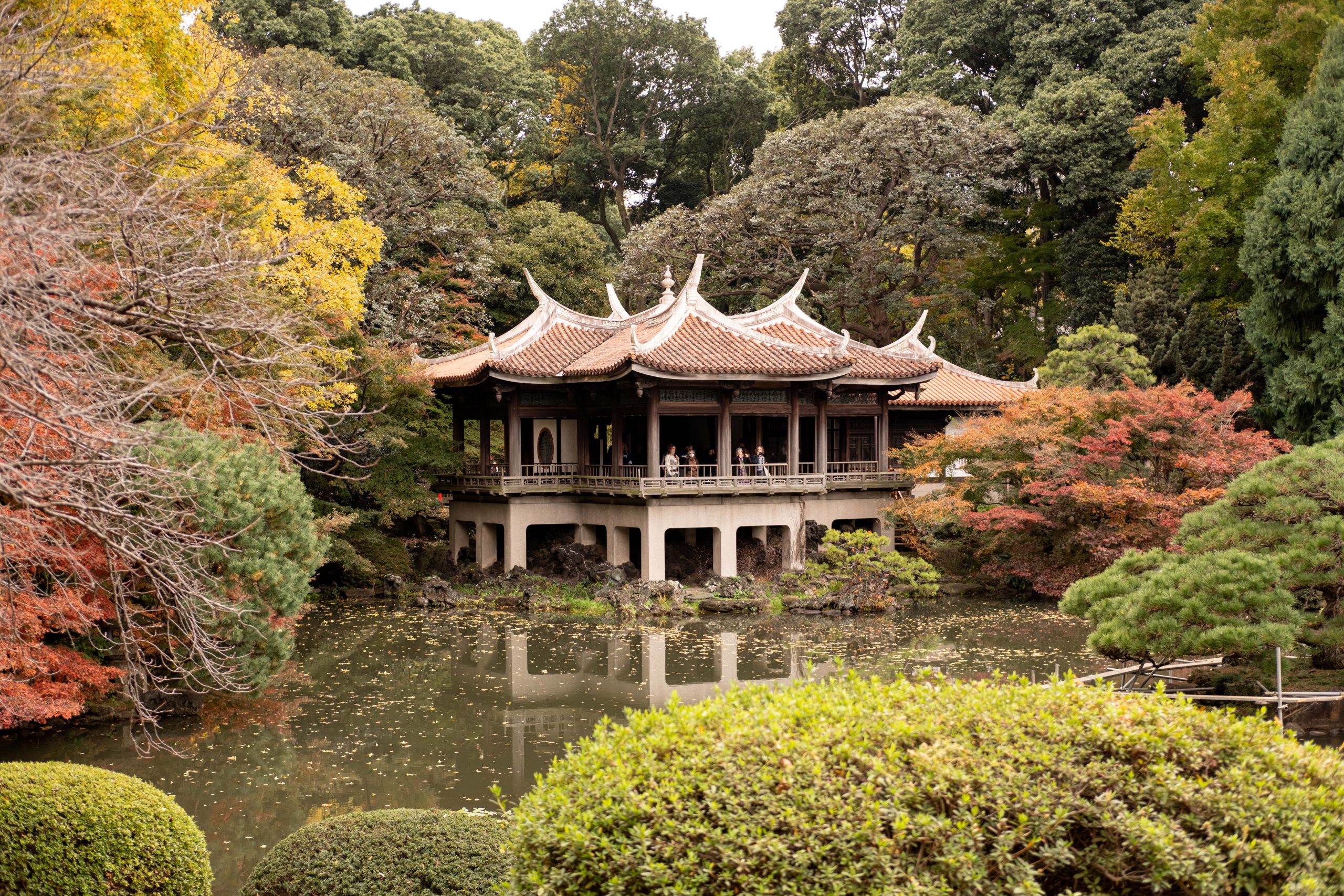
Top tip: Don’t miss the Shinjuku Gyoen Greenhouse which over 1700 tropical plants. It’s free to enter and enjoy. It’s located in the north-east corner of the park.
Lunch Options: After a whole morning exploring the park, it’s time to indulge in a delicious lunch in Shinjuku. I have several options for you depending on what you might fancy.
- Soba – Ever wanted to enjoy a Michelin star restaurant for less than 2000 yen? Head to Soba House Konjiki-Hototogisu which was recently awarded one Michelin Star. It’s worth noting that you should arrive before opening hours, and there is always a queue there. However, I think it’s well worth it if you want a delicious bowl of soba for a great price.
- Tonkatsu – For Tonkatsu, head to Tonkatsu Wako which has been in business for the past 60 years. It is also a chain which over 250 branches across Japan, but their food is delicious.
- Ramen – One of my favourite ramen restaurants in the whole of Tokyo, Ichiran specialises in spicy ramen served in an unconventional setting. You will be seated in a one-person seating booth, which the restaurant calls flavour concentration booths. This Japanese chain was first opened in Fukuoka in 1960.
- Tempura – Want something a little different? Head to Tsunahachi to discover the pleasure of delicious golden tempura. For the most exceptional taste, except fried items in sesame oil for an explosion of flavour. I recommend going for their Utage Set if you’re starving or the Tempura Set if you like your tempura with miso, rice and Japanese pickles.
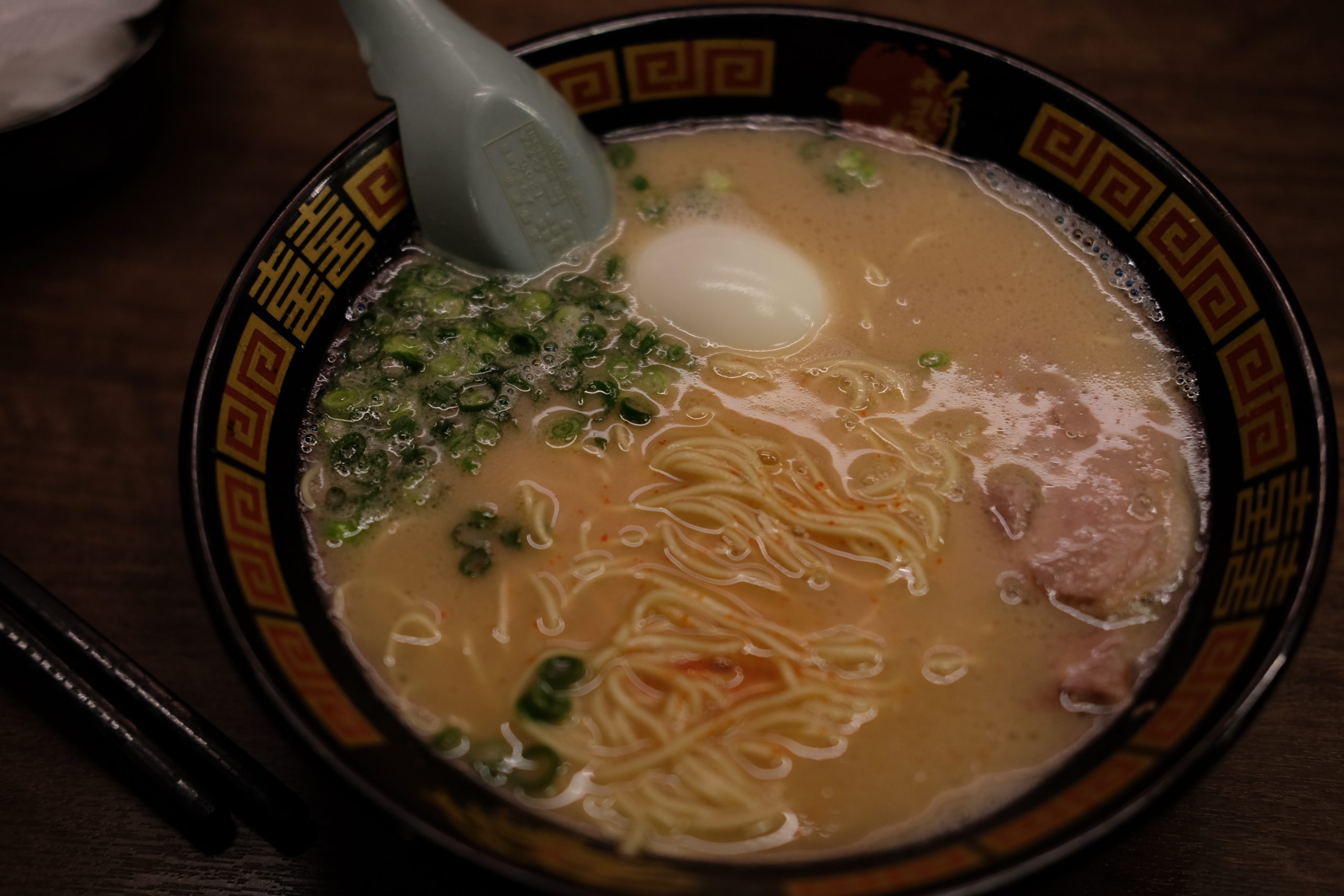
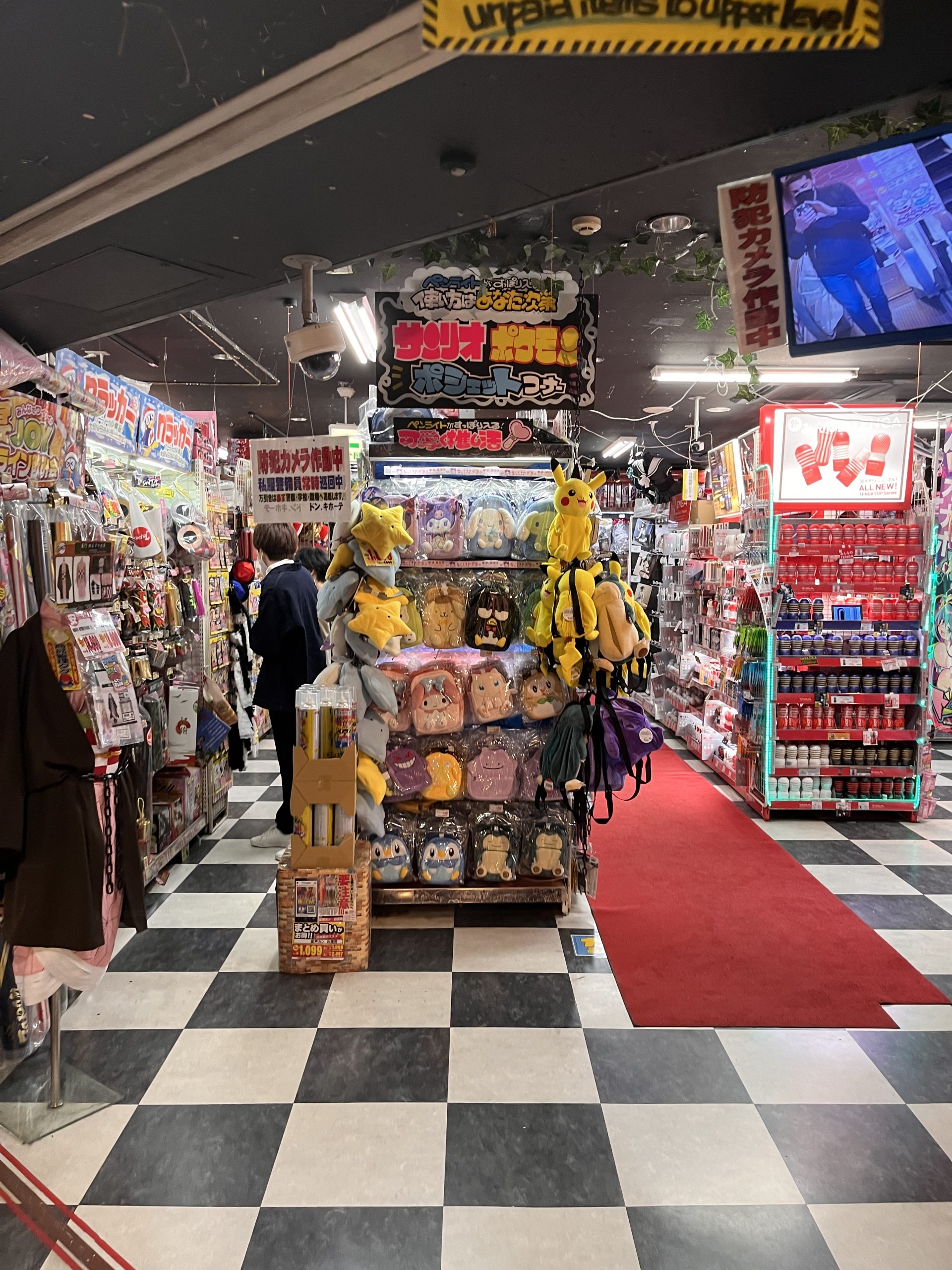
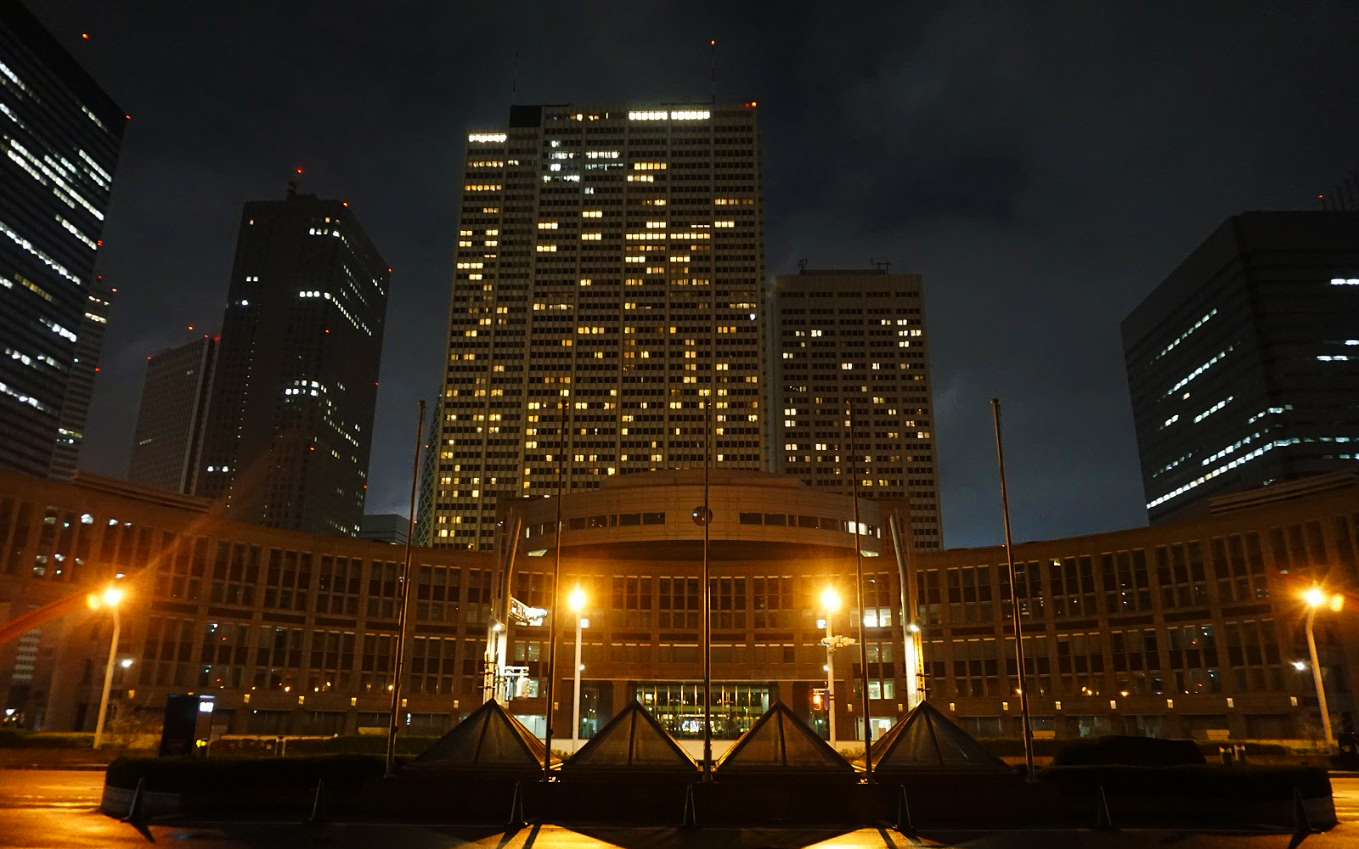
Shopping and entertainment at Shinjuku’s Don Quijote – This famous discount store, often referred to as “Donki,” is a must-visit for anyone looking to shop for unique, quirky, and affordable items. Get lost in an oasis of cool and unusual Japanese items. This is the place to grab some snacks, souvenirs, weird fashion items and plushies. Every single floor will keep you entertained as you will find something new and unique to look at. And the best part? It’s open 24/7!
See Tokyo from above (for free!) – Head to the Tokyo Metropolitan Government Building (known as Tocho) which houses two observation decks that offer stunning panoramic views of Tokyo. The building has two towers, the North and the South Tower, and each has its own observation deck at the 45th floor. Both observatories are open to visitors free of charge. Admire Tokyo from above and see various landmarks such as the Tokyo Tower, Tokyo Skytree and even Mount Fuji on a clear day. To access the building, it’s just a 10 minute walk from the west exit of the Shinjuku station.
Golden Gai – Golden Gai is a popular spot for bar hopping with over 200 small bars, each with its own unique character. For more details, head to my dedicated article which details all the best things to do in Shinjuku and talks more about which are the best bars to visit in Golden Gai.
Kabukicho – Also known as Tokyo’s red-light district, Kabukicho is the largest adult-only entertainment area in Asia! Of course, you will find various attractions here for general audiences too, but generally speaking, this is the place you will want to walk around, admire but not touch. You will come across many adult entertainment venues, such as hostess bars, strip clubs, and love hotels, which are legal and regulated in Japan.
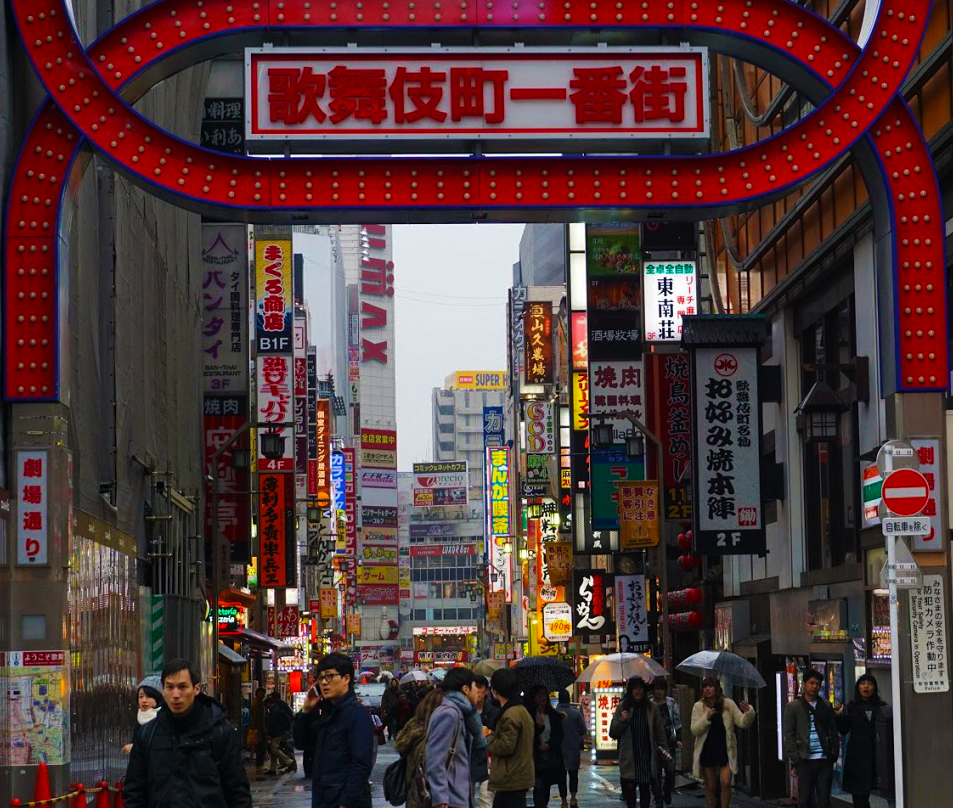
Kabukicho is generally considered a safe area, but if you’re keen on a night out here, I do suggest getting a local guide. The district is wonderful with neon lights and towering billboards, making it ideal for photography. It’s also where you’ll find the major Godzilla statue that stands over the entrance to the Toho Cinemas building.
Piss Alley for dinner (Omoide Yokocho) – Don’t let its name deter you from visiting this super cool and atmospheric street in Tokyo. Piss Alley is a narrow alley filled with bars and eateries which specialise on yakitori (chicken skewers). In the evening, it’s especially full of Japanese salarymen who come here to enjoy a pint of beer with some delicious grilled chicken. It’s a great place to interact with locals. If you find this a little overwhelming, I recommend booking a dedicated food tour with a local that will show you around and help you order.
Generally speaking, there are so many things to do in Shinjuku and this tends to be a favourite area with first time visitors.
Day 3: Asakusa and Ueno
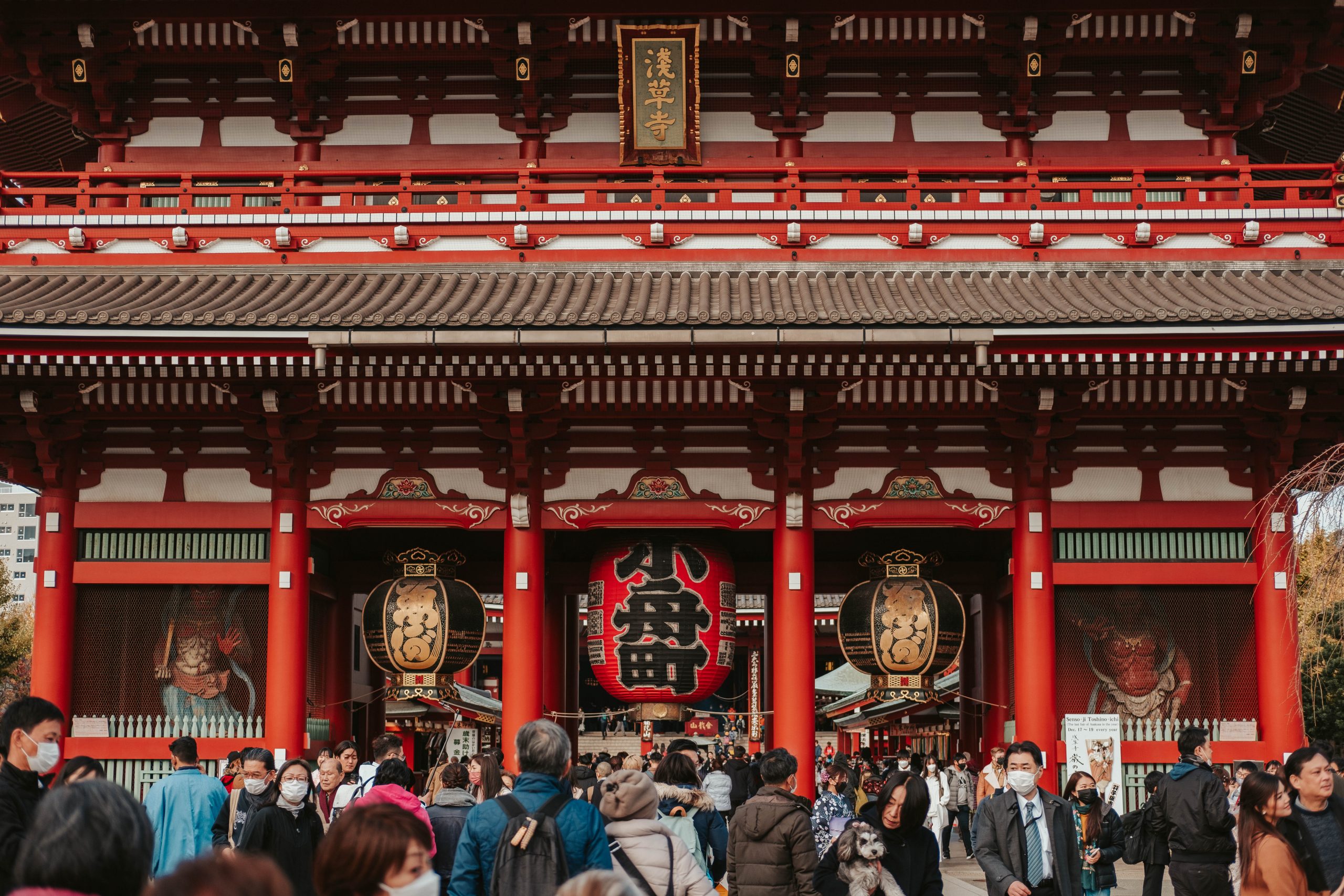
Sensoji Temple – Start your morning by visiting Sensoji Temple, Tokyo’s oldest and most famous Buddhist temple. Sensoji was founded in 628,and it is dedicated to the Buddhist goddess of mercy, Kannon. One of the main things to do here is to draw an Omikuji which is a Japanese fortune-telling strip. To receive an Omikuji, head to Omikuji-torii, which houses a box filled with numbered sticks. Simply shake the box and take out one of the numbered sticks, which corresponds to a specific drawer in the structure. Inside the drawer, you will find your own written fortune. If it’s good, take it with you, as that is a lucky charm. If it’s bad, tie it to the designated area called Omikuji-kuyo so the Gods can take care of it and spare you from any troubles.
Nakamise Shopping Street – After exploring Sensoji Temple, head down Nakamise Shopping Street, a lively pedestrian street lined with colourful shops and stalls. This shopping street dates back several centuries and is the perfect place to find traditional Japanese souvenirs, such as folding fans, kimonos, and local crafts. My recommendation is to get a Daruma doll, which is a symbol of resilience and good luck. Daruma dolls have blank eyes and are used to represent a goal or wish. You color in one eye when you make a wish and the other eye once your goal has been achieved.
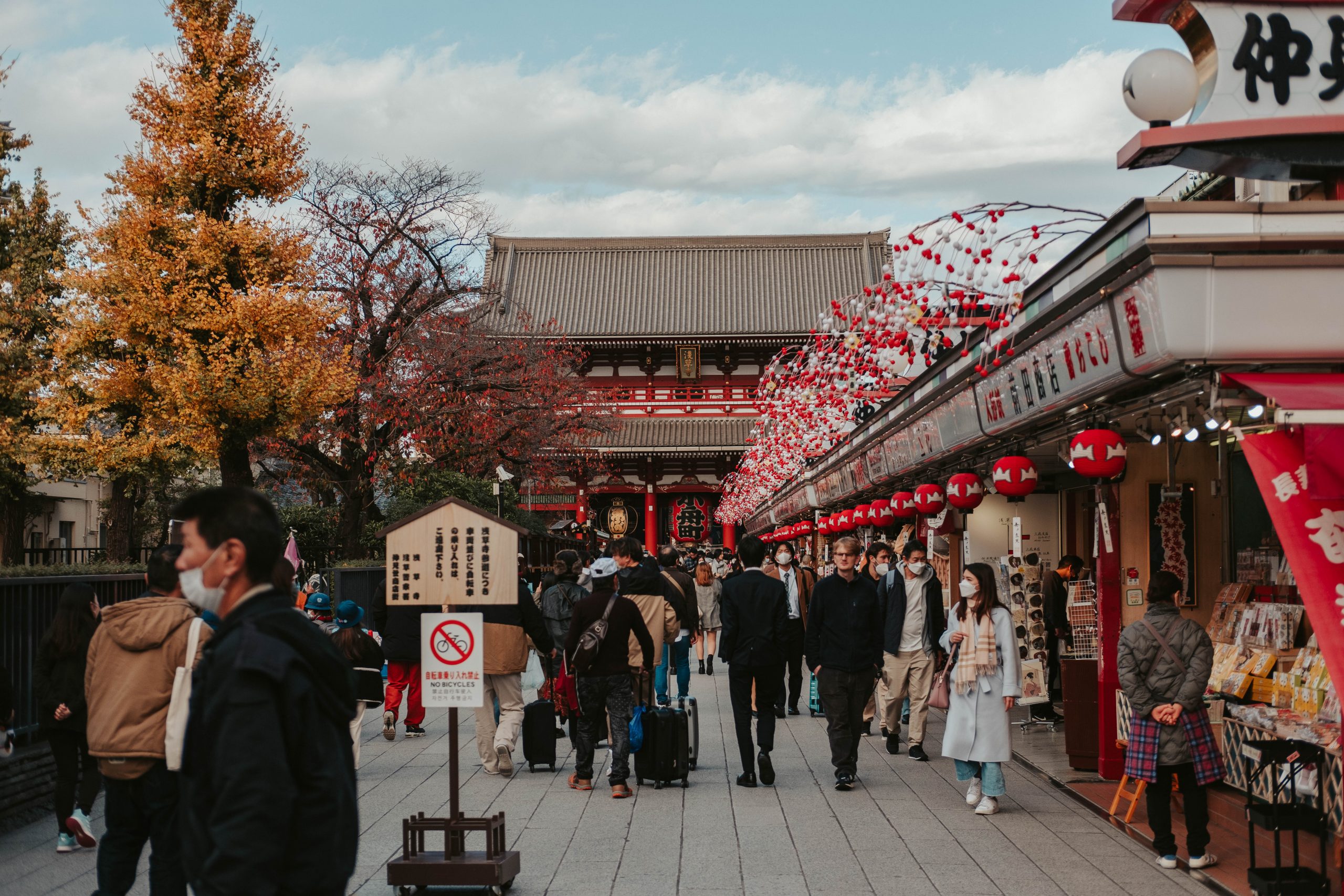
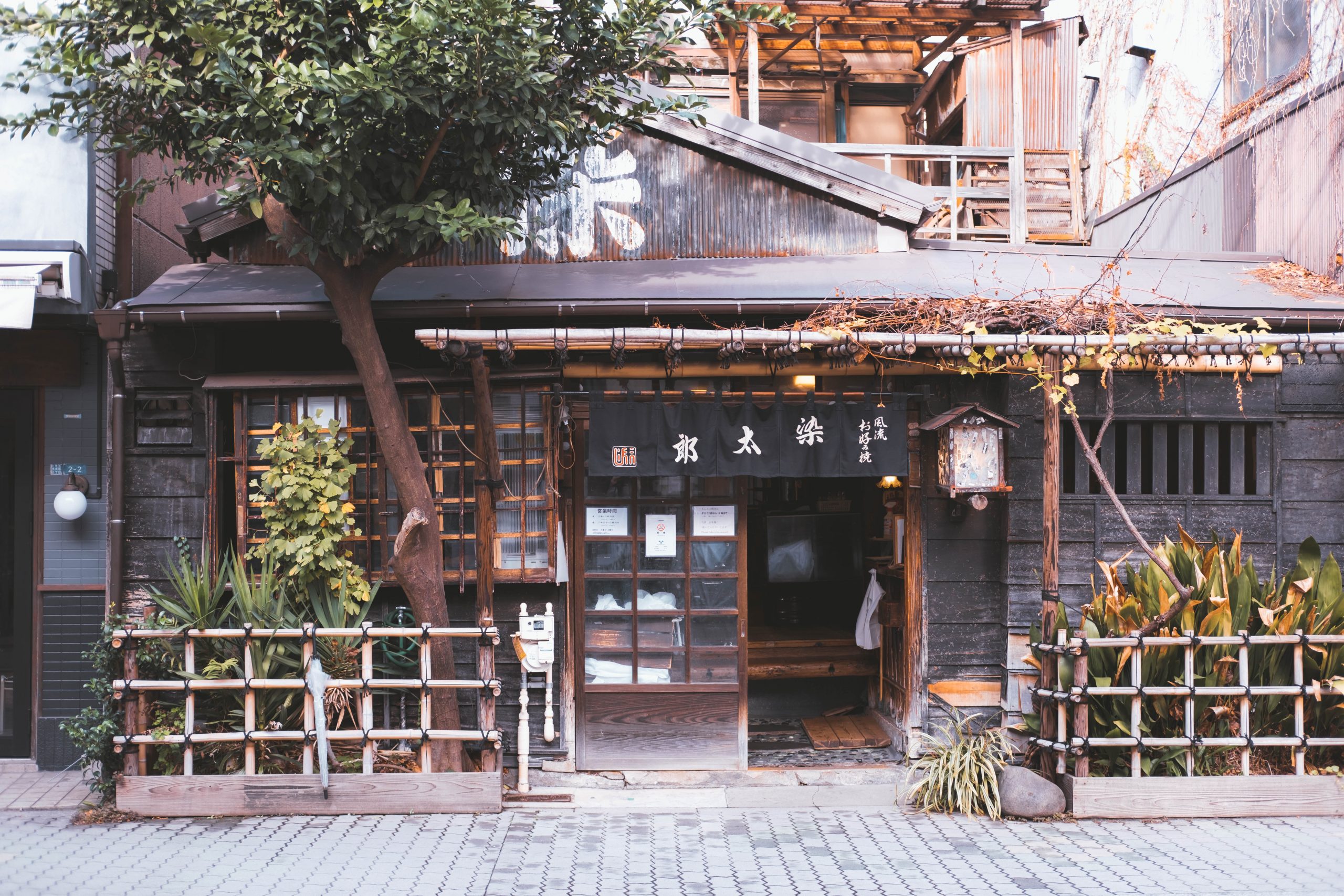
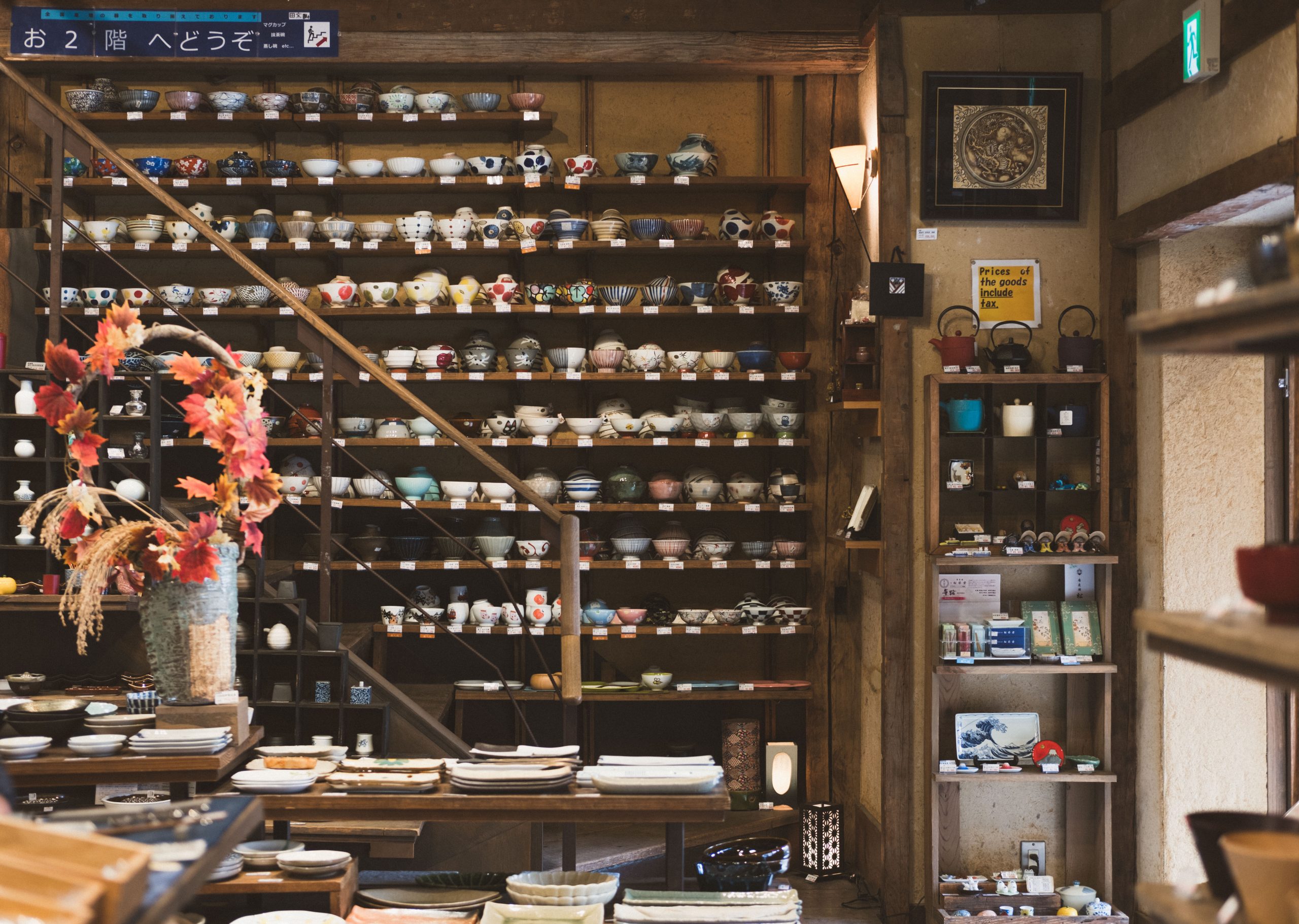
Of course, I recommend visiting all the yummy food stalls selling Japanese street food, including my favourite, ningyo-yaki (sweet cake with red bean paste), age-manju (deep-fried buns) and rice crackers.
Lunch at Sometarō – In all my time living in Tokyo, making my own okonomiyaki in Asakusa is still one of the most memorable and fun food experiences. Head to Sometarō, just 8 minutes walk from the Nakamise shopping street. Sometarō is a wonderful okonomiyaki restaurant set in a traditional wooden house. You get to pick your the okonomiyaki you want, then you cook your own okonomiyaki on the hot grill in front of you. Don’t worry, you get instructions on how to make it, and you even get help if needed. The restaurant takes cash only, and you need to take your shoes off before you enter and sit in “seiza position” (knees bent and legs folded underneath your thighs) during your meal.
Kappabashi Street – Also known as Kitchen Town, Kappabashi Street is the place to visit if you’re interested in household items and kitchenware for incredible prices. This is the place I bought most of my Japanese kitchenware, including ramen bowls, sake bottles, matcha sets and so much more. The street is just a 15-minute walk from Senso-ji and lined with over 170 different shops. This is a very popular place for restaurant owners and professional chefs, but recently the area has gained popularity with locals and tourists interested in high quality household items.
Explore Ueno Park – Head to Ueno Park, for a relaxing afternoon in nature. Ueno park is one of the city’s largest parks and home to a large pond, several museums and historical attractions. Ueno park is very popular during the cherry blossom festival as the park has over 1000 cherry trees. If you want to have a relaxing experience, I recommend renting a swan-shaped boat to row on the Shinobazu Pond. Don’t miss the viewing platform at Kiyomizu Kannon-do temple, with its stunning twisted pine tree. It’s the perfect photo opportunity.
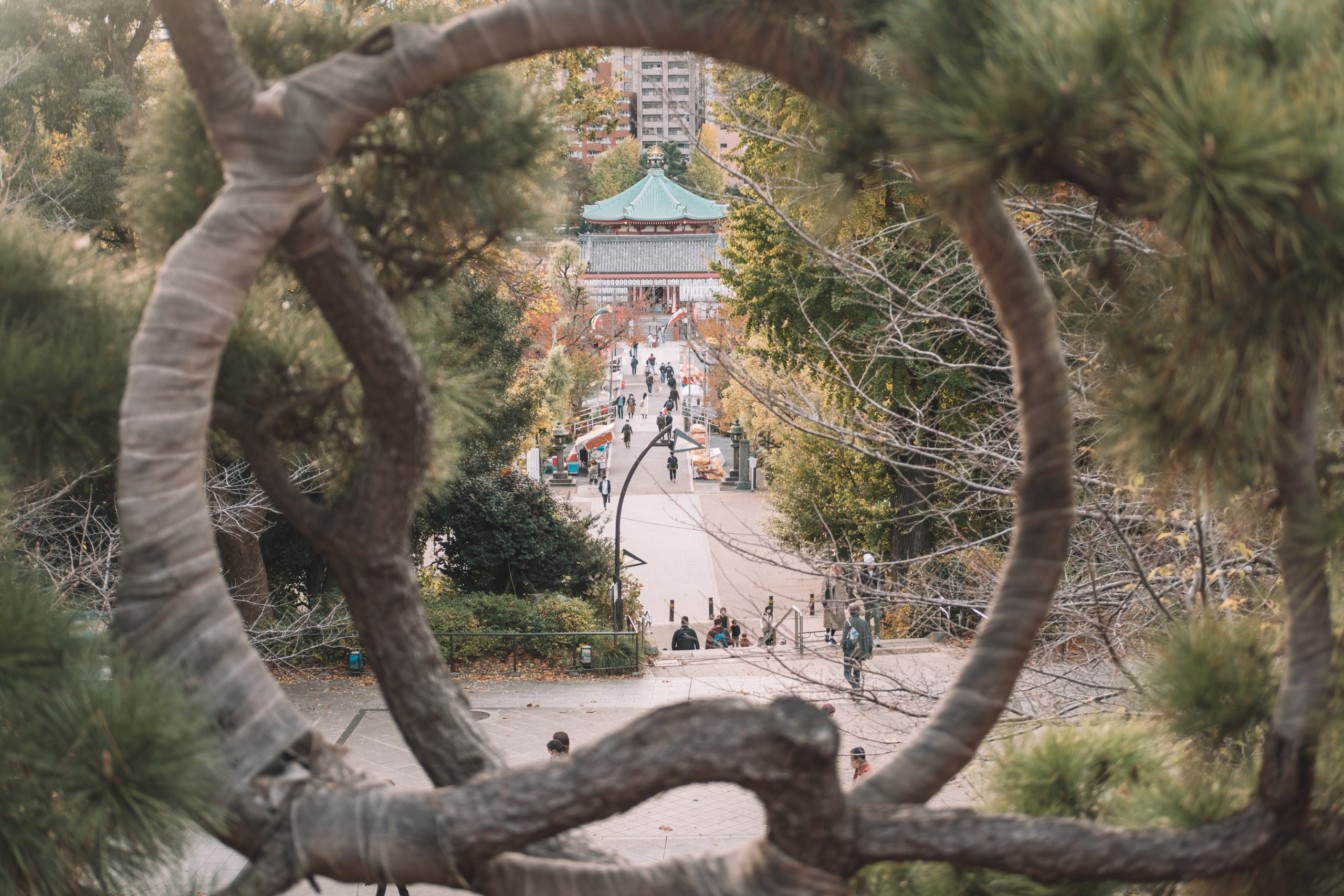
Did you know? This twisted pine is based on the famous ‘Moon Pine, Ueno’, part of the “100 Famous Views of Edo” by Ando Hiroshige.
Visit Ame-Yoko shopping street – In the evening, make your way to Ame-Yokocho which is a colourful and fun shopping street next to Ueno Station. This was once a black market street, much like Omoide Yokocho in Shinjuku. Nowadays, it’s perfect for seeing a variety of fun shops with discount stores, clothes and souvenirs.
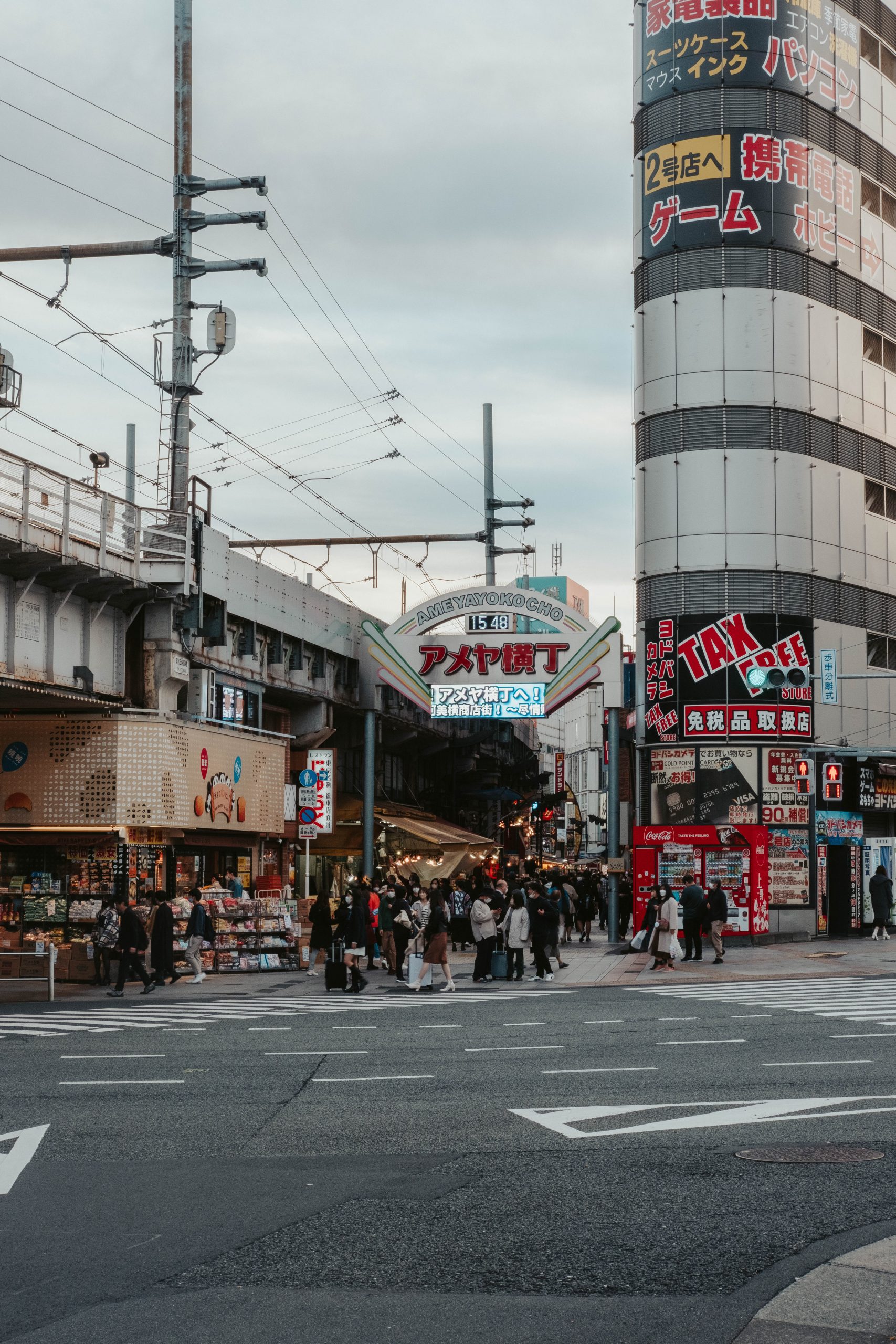
Street food for dinner – My favourite thing to do in Ame-Yoko is enjoying all the street food. You’ll find numerous food stalls and here are a few things I recommend for dinner: takoyaki (octopus-filled dough balls), yakitori (grilled chicken skewers), and taiyaki (fish-shaped waffle filled with sweet red bean paste). If you’re still hungry, there are many restaurants and bars in the area too, with all sorts of classic options like sushi and ramen. For a more authentic experience, head to an Izakaya which is a Japanese style pub that sells great food and drinks.
Day 4: Ginza & Central Tokyo
Visit the Imperial Palace and East Gardens – The Imperial Palace itself is not open to the public, but you can still appreciate its majestic presence from the outside, especially at the Nijubashi Bridge. The picturesque bridge, surrounded by a moat, is the perfect photo opportunity to capture a serene and tranquil Tokyo in the morning.
Make your way to the Imperial Palace East Gardens, which are open to the public and offer a picturesque setting. You’ll explore meticulously maintained gardens that feature lush greenery, traditional Japanese landscaping, and historical structures.
For an exquisite and fancy experience, make a reservation at the Palace Hotel Tokyo to have their seasonal dessert accompanied by a delightful cup of tea. In the autumn, the theme is around chestnuts, whereas in the spring you will see fresh fruits like melons and sakura.
Explore the Marunouchi area – It’s time to explore the Marunouchi area, which is located just a short walk away. Stroll through Marunouchi Naka-dori Street, a tree-lined avenue lined with high-end boutiques, cafes, and restaurants. The contrast between the historic Imperial Palace and the modern Marunouchi district showcases the unique blend of old and new that defines Tokyo.
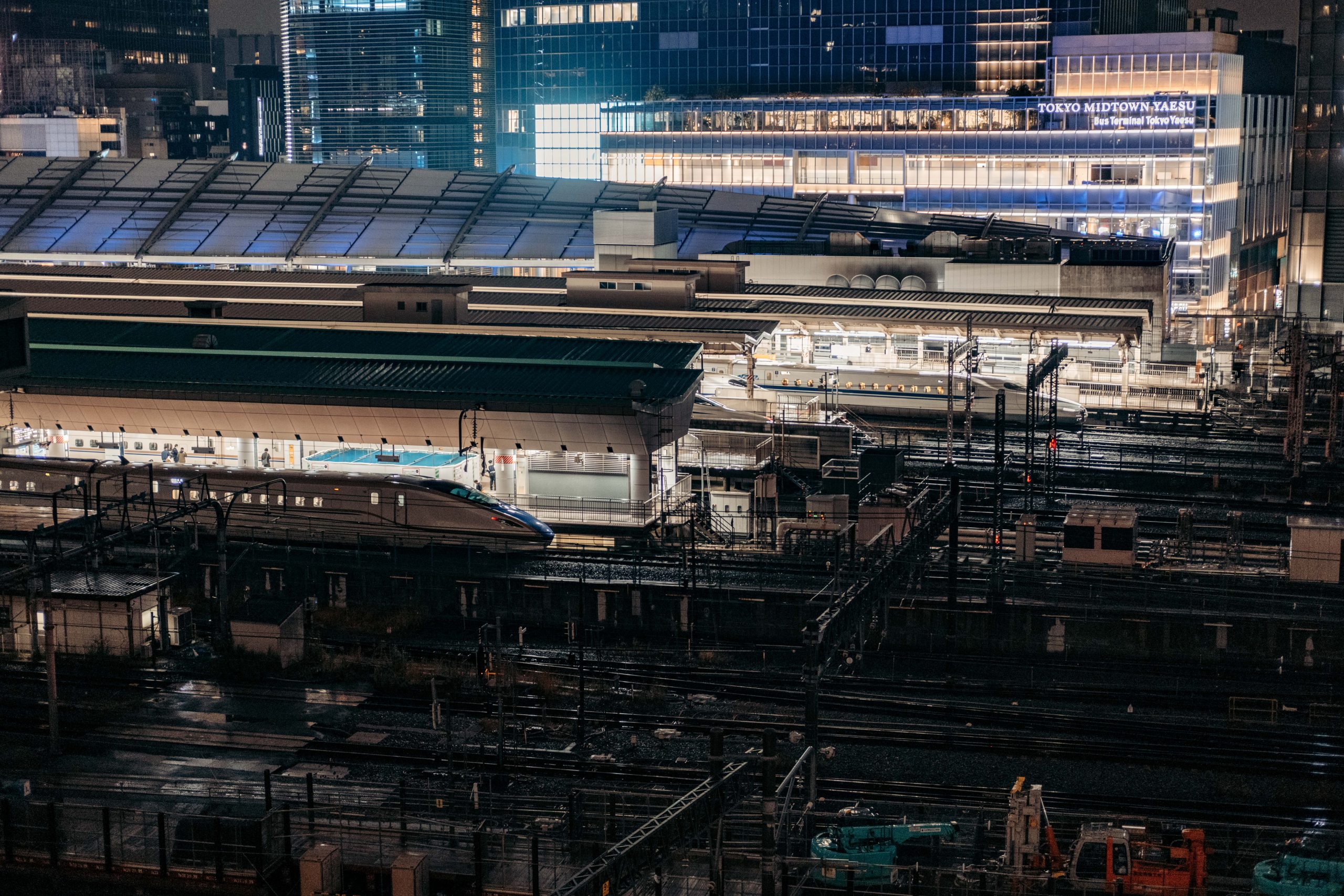
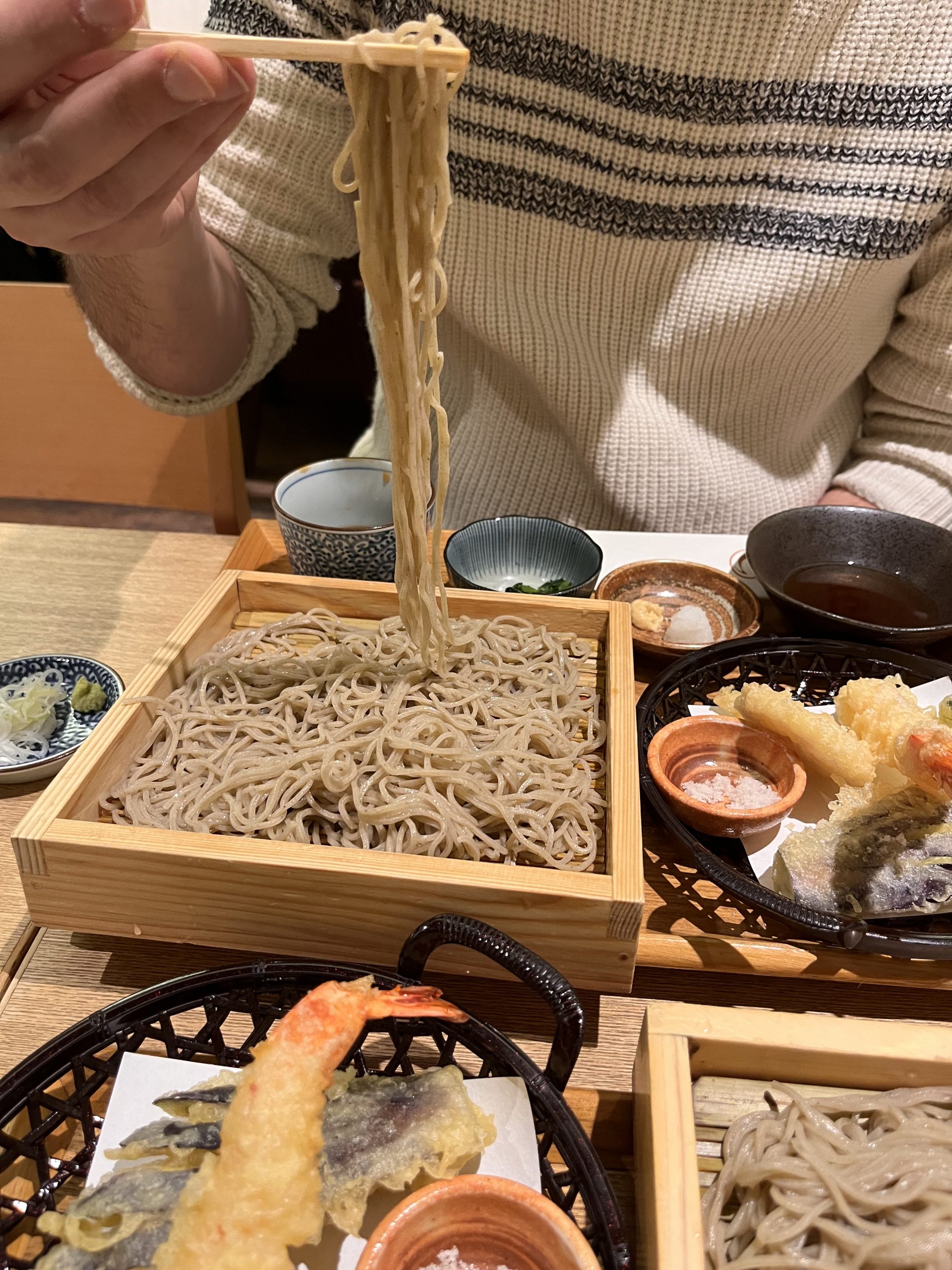
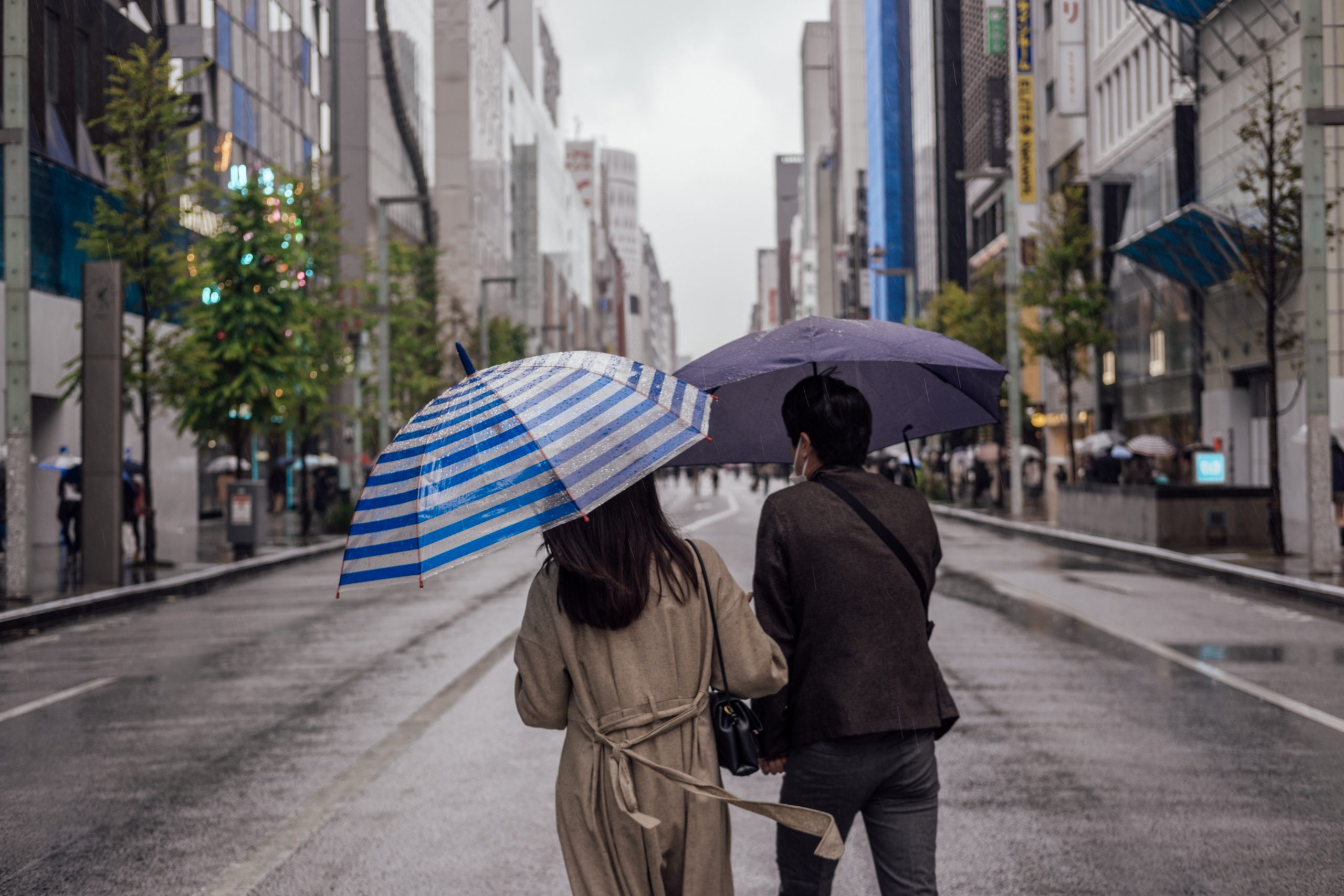
While in Marunouchi, I recommend visiting Kitte Building, which is located near Tokyo Station. Don’t miss the beautiful rooftop garden that offers stunning views of the station, where you can spot shinkansen coming and going into the hub.
Lunch at Shinshu-Matsumoto Hikariya – Head to the 5th floor in the Kitte building and go to Shinshu-Matsumoto Hikariya for a delicious soba lunch. The soba noodles at Shinshu-Matsumoto Hikariya are made with high-quality buckwheat flour, and they are served with dipping sauce on the side. I recommend going for one of their set menus, which comes with delicious tempura too. Alternatively, there are many other restaurants and cafes in Kitte, including one of my favourites, Marunouchi CAFE KAI, which I recommend for their Matcha Tiramisu or Mille Crepe Cake.
Explore Ginza shopping district – Ginza is my favourite shopping place in Tokyo. To have a lifetime, and you will still discover new things to do and see in Ginza. As you explore the area, you’ll find flagship stores for global brands, as well as a selection of exquisite art galleries and traditional Japanese craft shops. The main pedestrian avenue called Chuo Dori closes for cars on holidays and weekends.
Visit Ginza Six – Visit my favorite shopping complex in Ginza called Ginza Six. It may look like a shopping mall, but it’s so much more than it. Note: The Starbucks Reserve Roastery has been relocated to a different building in Ginza.
Inside Ginza Six, you’ll also find the Tsutaya Bookstore, an elegant and spacious bookstore with a dedicated art section.
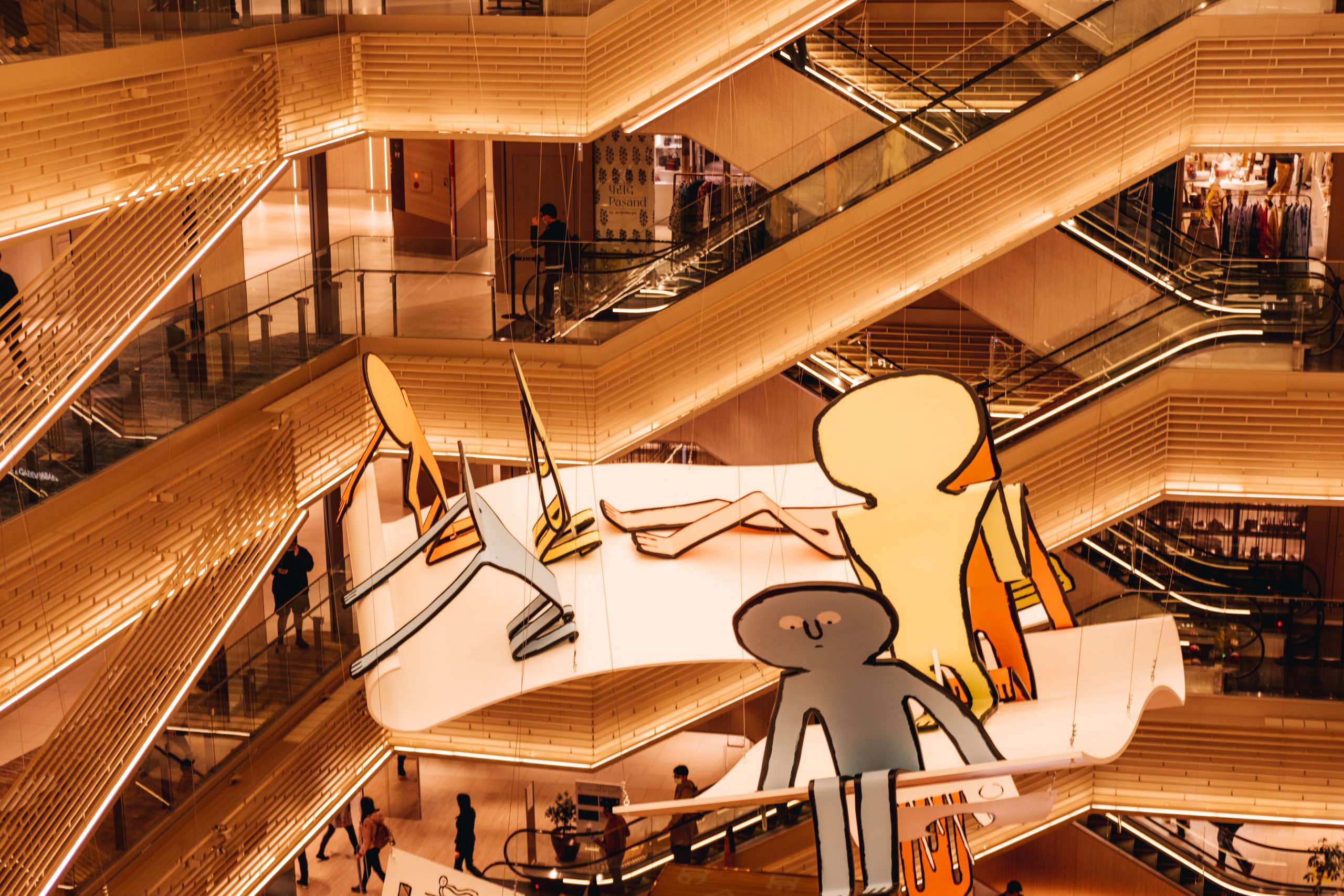
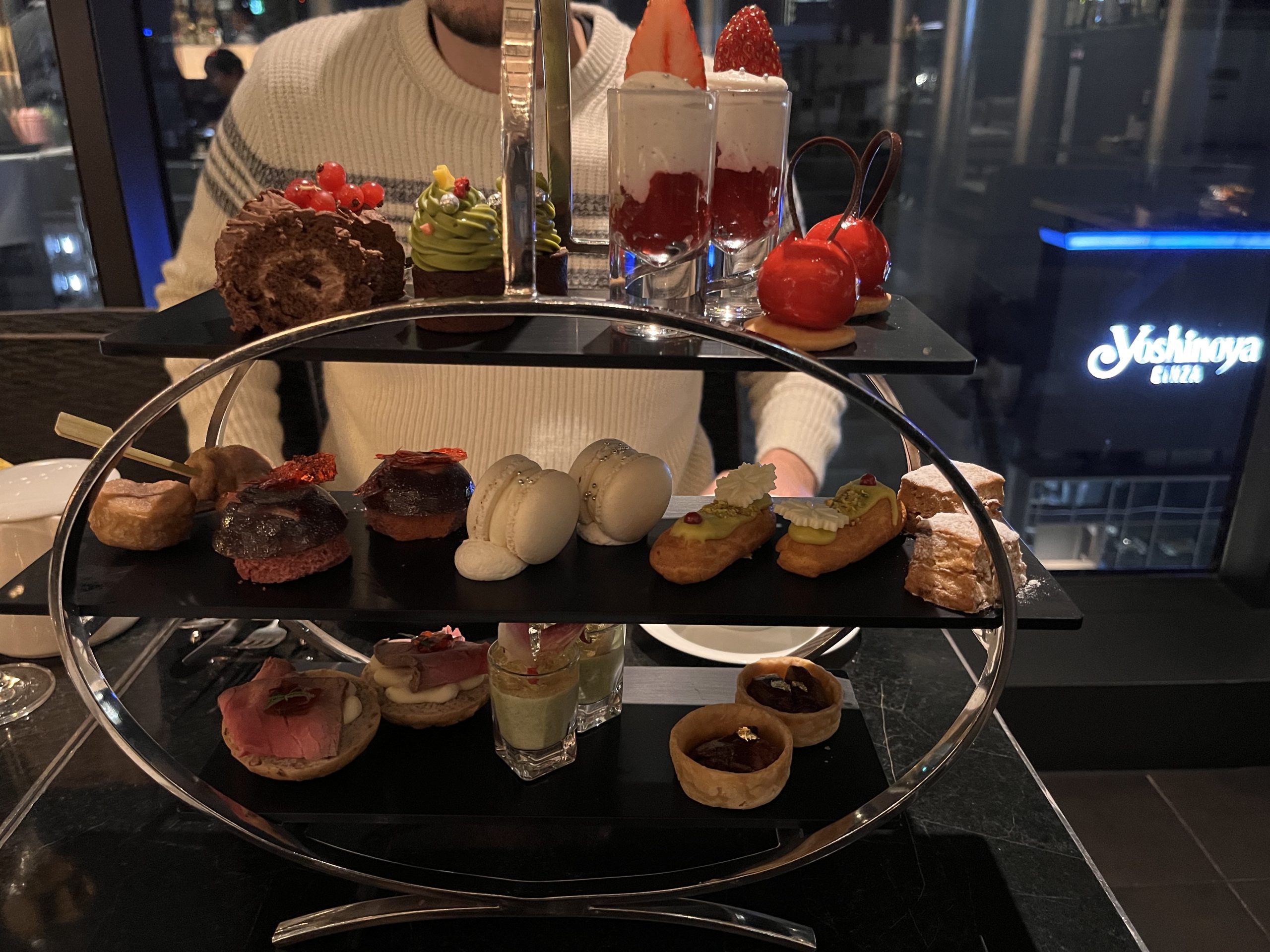
After browsing the shops, head to the rooftop garden of Ginza Six for stunning views of the surrounding area. In the winter, there is also a small ice rink here. From here you can also see the flagship Uniqlo store across the road.
Afternoon tea at the Grand Lounge – For a fancy but epic experience, book an afternoon tea at The Grand Lounge, located inside Ginza Six. The elegant lounge offers a classic afternoon tea experience, complete with finger sandwiches, pastries, and a selection of teas. You must book it in advance, but my husband and I loved our experience so much, it was worth every penny. Prices for afternoon tea start from ¥ 5,000 per person.
Dinner at a high-end kaiseki restaurant in Ginza – Ginza is the perfect place for a high-end dinner experience. And since you are in Tokyo, I highly recommend enjoying a fancy evening where you allow yourself to be spoiled with perfect kaiseki cuisine and best customer service.
Here are some of the top kaiseki restaurants I recommend in Ginza: Ginza Kojyu (Michelin star ££££), Ginza Ibuki (£££), Ginza Uchiyama (£££), TSURUTOKAME (£££), Umenohana Ginza (££).
For something more low-key and budget friendly, I can wholeheartedly recommend Ramen Takahashi. A delicious ramen bar in Ginza with just a few seating areas. Pay at the vending machine in front of the restaurant, hand it to the staff, and wait for your ramen while seated.
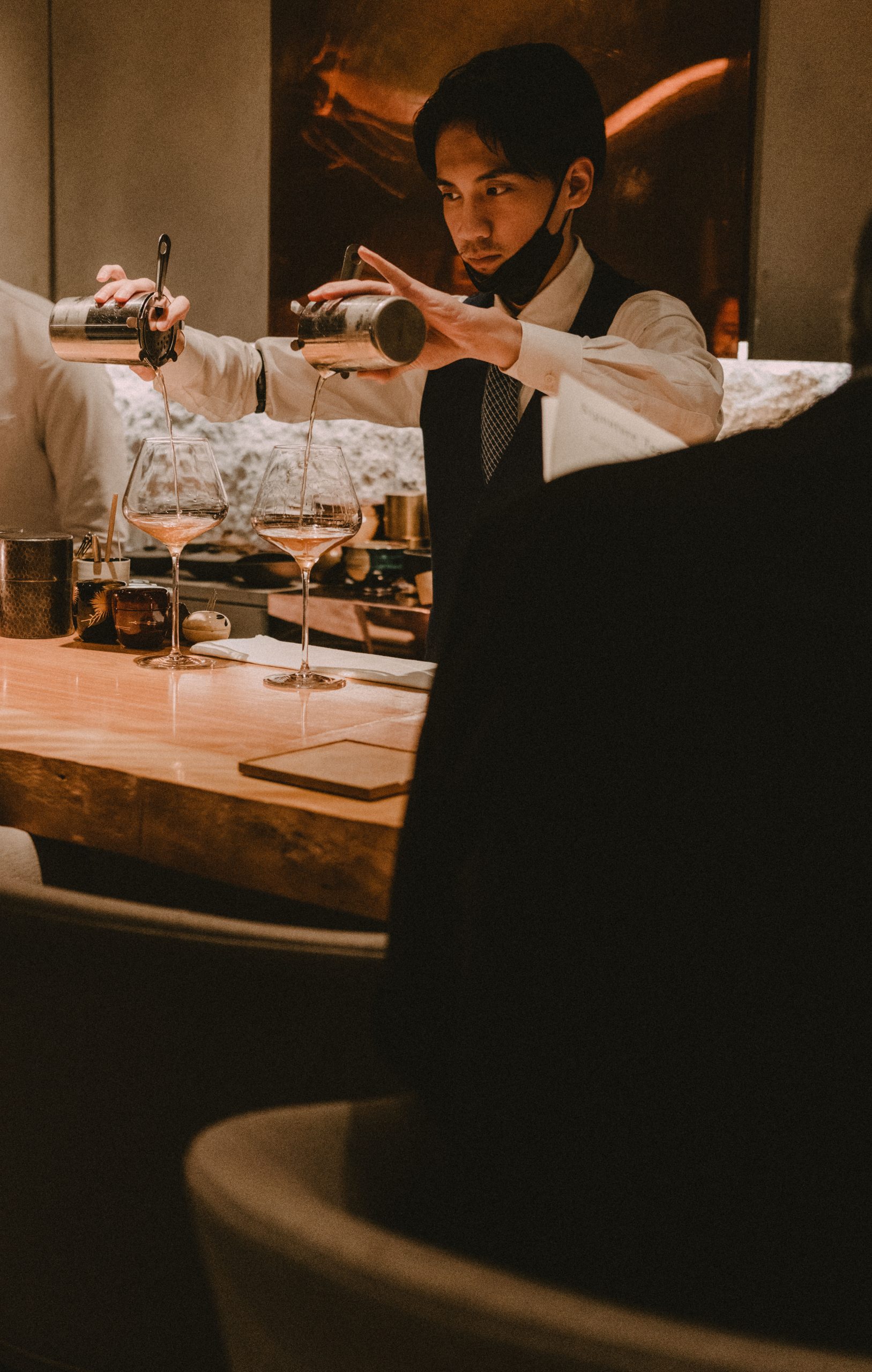
Enjoy tea themed cocktails at Mixology Salon – Mixology Salon is a stylish cocktail bar located on the 13th floor in Ginza Six. We loved this place so much, we came back twice in one week! Enjoy Japanese tea-infused cocktails crafted by skilled bartenders using only high-quality teas, fresh ingredients, and premium spirits. The bar’s menu features a range of cocktails inspired by different types of tea, such as matcha, sencha, and hojicha, as well as seasonal and limited-edition creations.
Day 5: Yanaka Ginza
The closest train station to Yanaka Ginza is Nippori Station, which is served by the JR Yamanote Line, JR Keihin-Tohoku Line, and the Keisei Line. From Nippori Station, it is about a 10-15 minute walk to Yanaka Ginza.
The closest subway station to Yanaka Ginza is Sendagi Station (Chiyoda Line). From Sendagi Station, it is about a 10-15 minute walk to Yanaka Ginza.
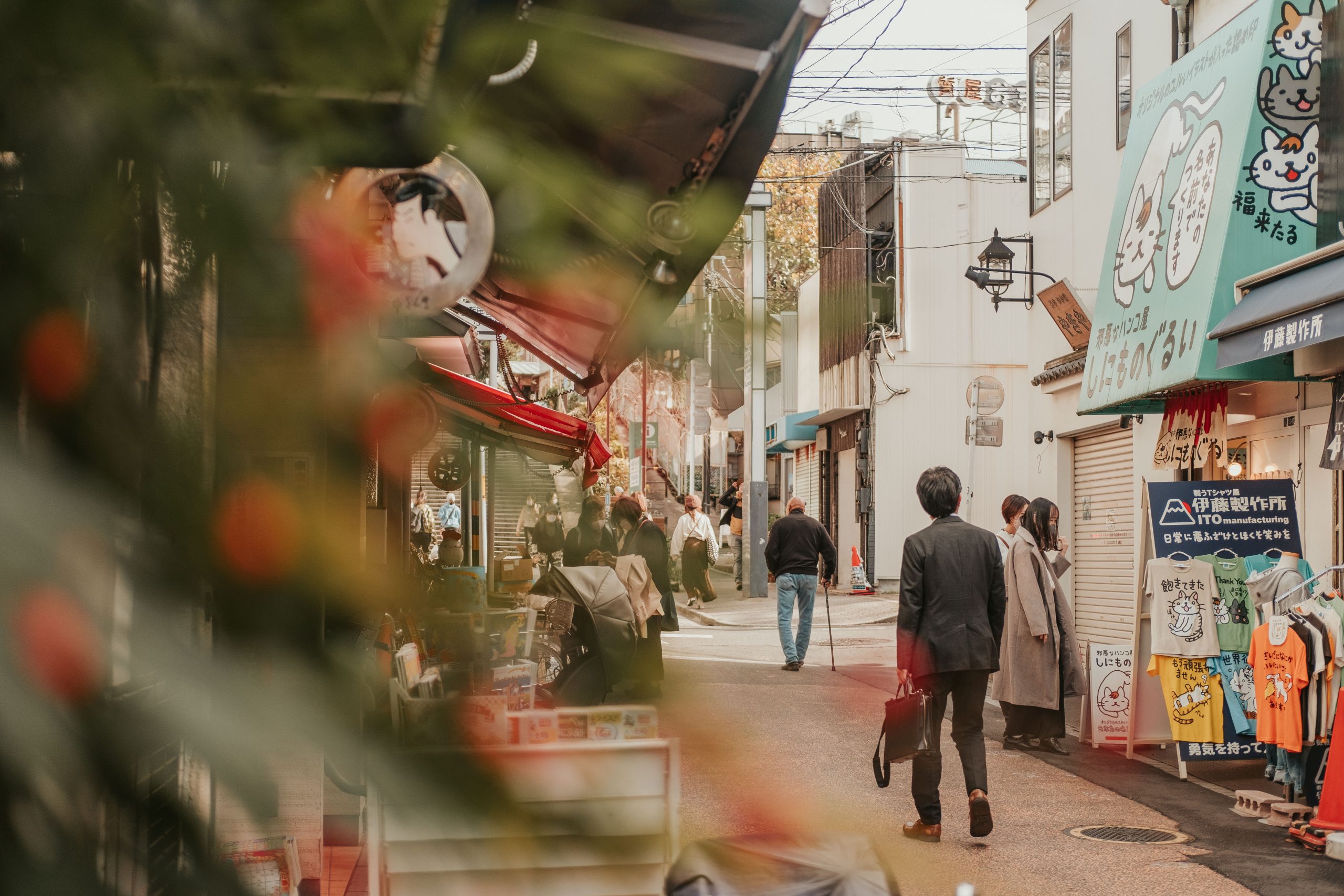
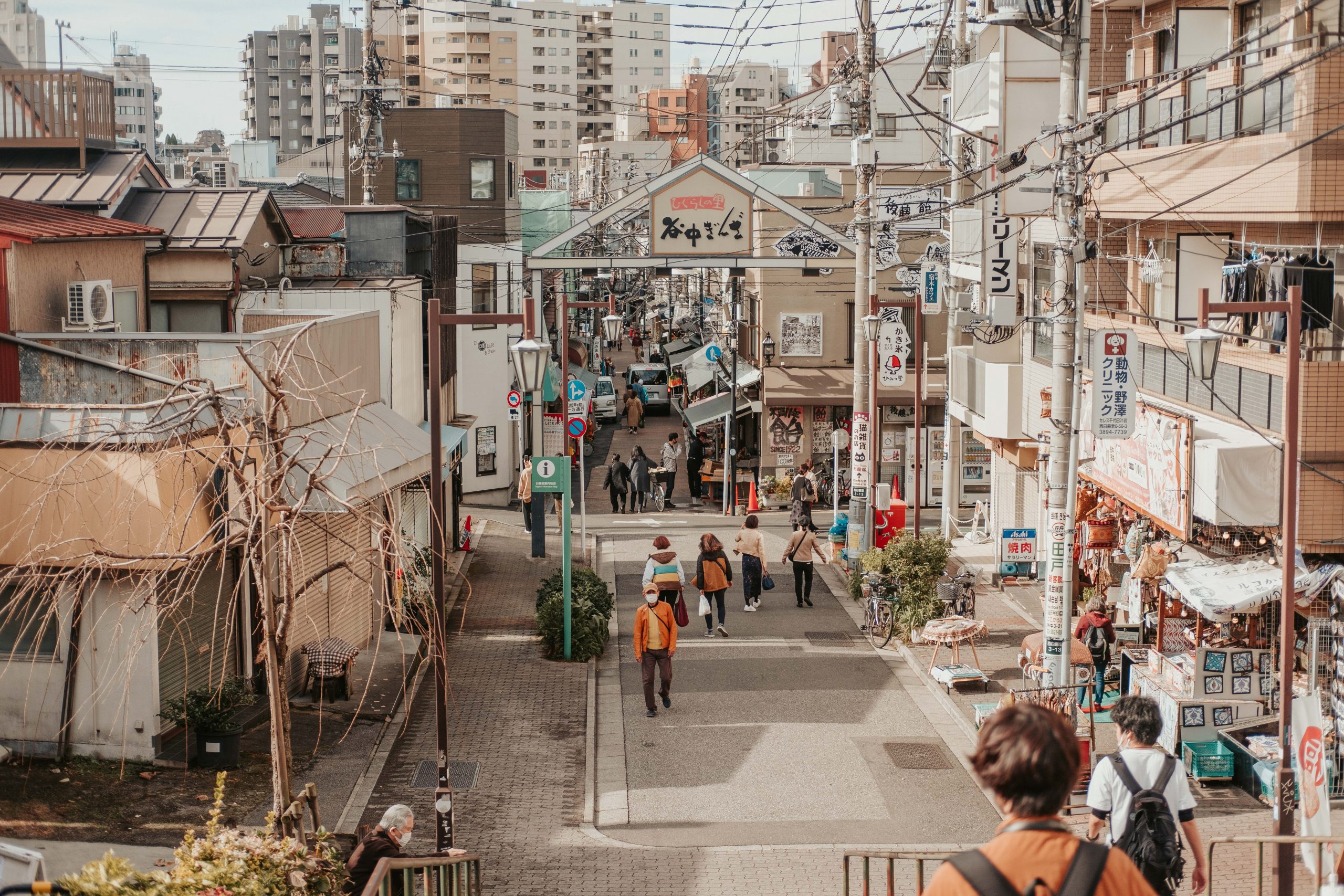
Yanaka Ginza Shopping Street – Start your day by shopping around Yanaka Ginza, a charming and nostalgic shopping street with that wonderful atmosphere of old Tokyo. Check out all the small shops offering traditional crafts, local snacks, and souvenirs. Don’t miss Shinimonogurui, a small stamp shop which can create custom stamps just for you. And you must try the fried doughnut cat tails from Yanaka Shippoya.
Yuyake Dandan Stairs – Climb the Yuyake Dandan stairs (translated to sunset stairs) for a picturesque view of the surrounding area. These stairs connect Yanaka Ginza with the nearby residential area and serve as a popular spot for photography. I loved the photographs here so much, I even printed some for my own home decor.
Yanaka Cemetery – Yanaka Cemetery is a historic cemetery with spacious grounds and a peaceful atmosphere. It’s a significant cultural and historical site, home to many notable individuals from Japanese history. It’s also a popular destination during Sakura Season, with cherry blossom trees and well-manicured lawns.
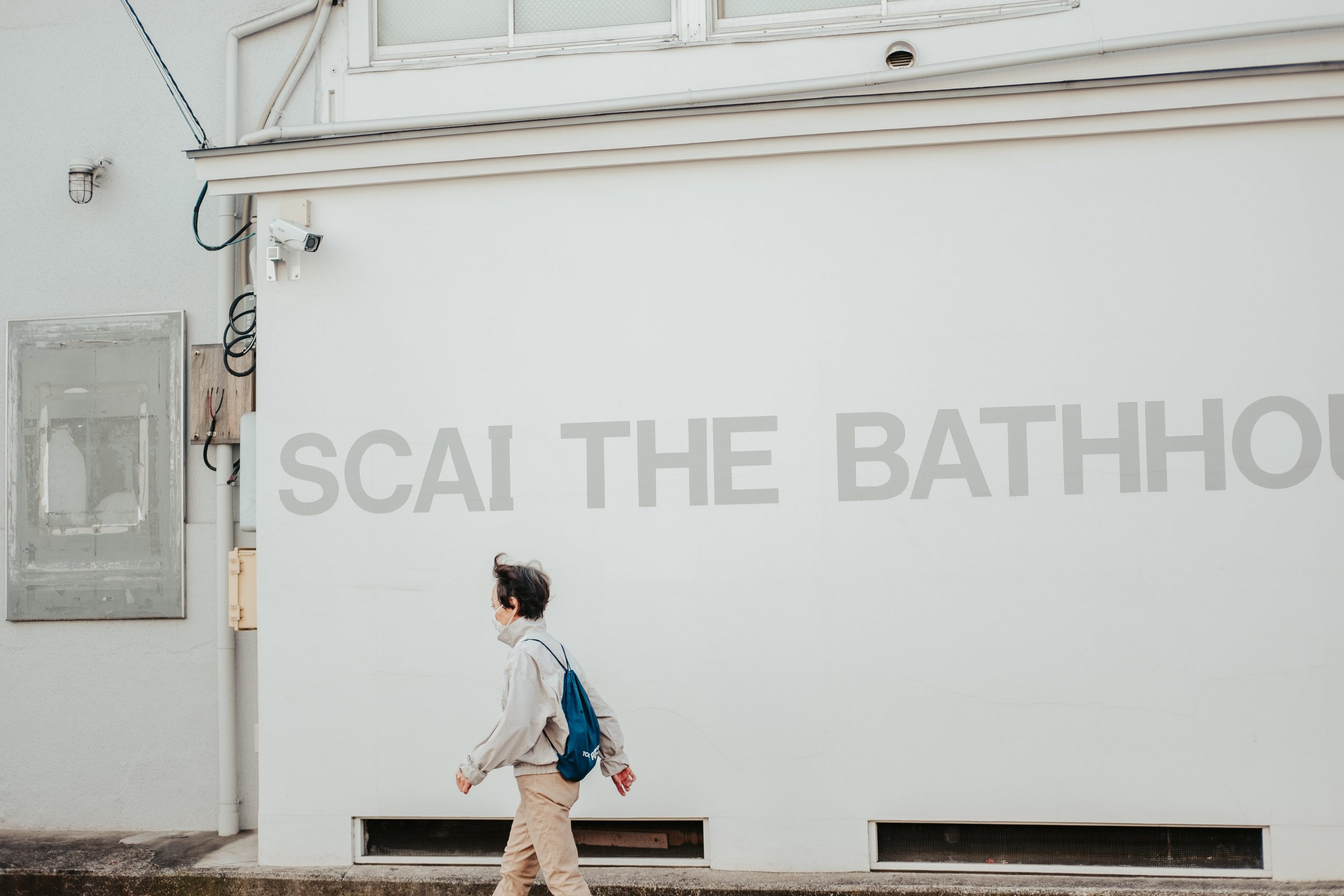
Scai the Bathhouse – SCAI The Bathhouse is a contemporary art gallery located in a former public bathhouse built in the early 20th century, which has become iconic. The gallery exhibits works by established and emerging artists from Japan and worldwide, and holds events, lectures, and workshops.
Snacks and beer – For lunch, taste the locally brewed beer and enjoy a light meal at Yanaka Beer Hall, a cozy and inviting establishment that offers a selection of craft beers and delicious food. Yanaka Beer Hall is a charming craft beer establishment in the Ueno Sakuragi Atari complex, a three-story building constructed in 1938, which has been thoughtfully renovated to maintain its vintage charm.
The interior of the beer hall features a mid-century ambiance, adorned with antique furniture, vintage newspapers, and posters created by Japanese illustrators.
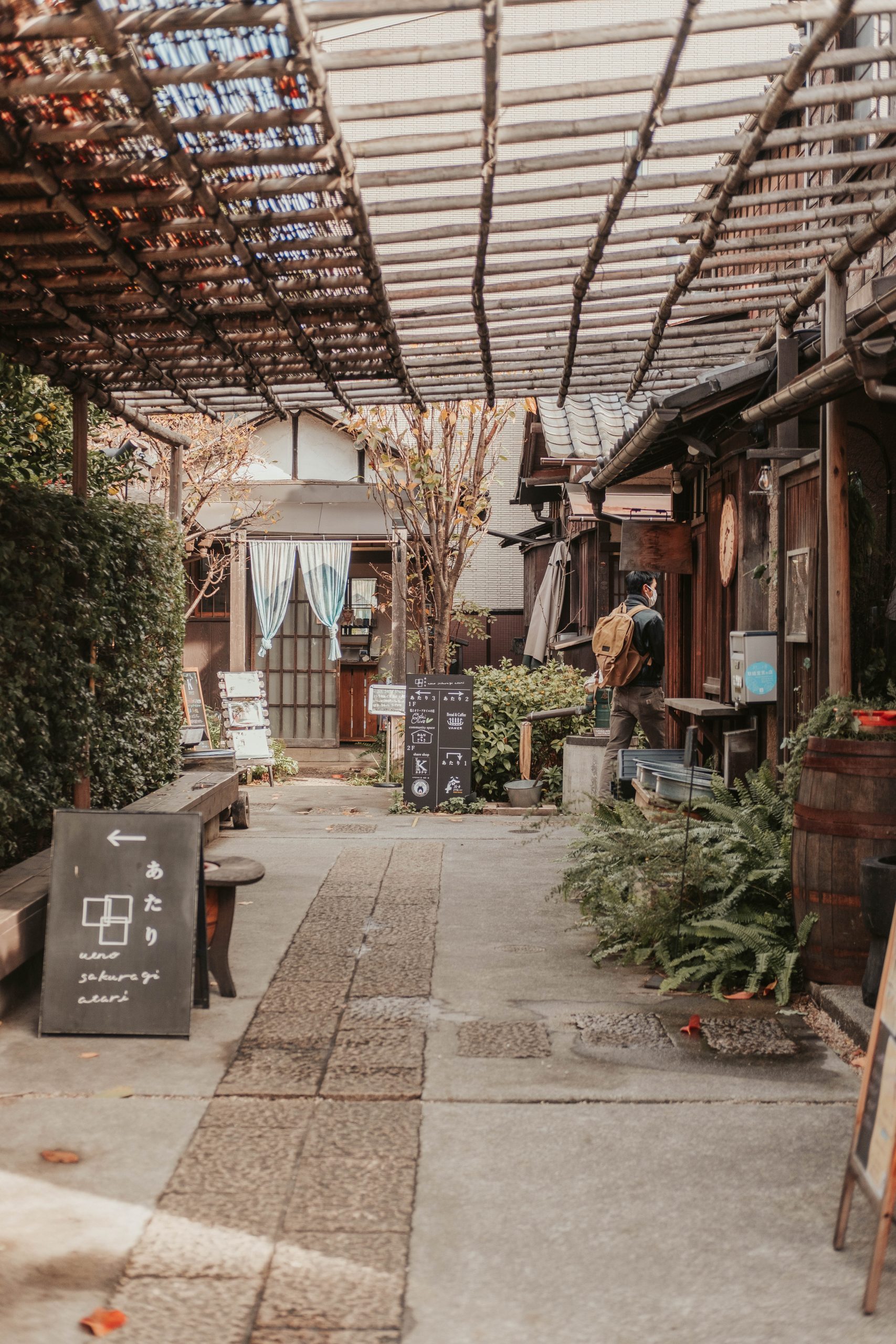
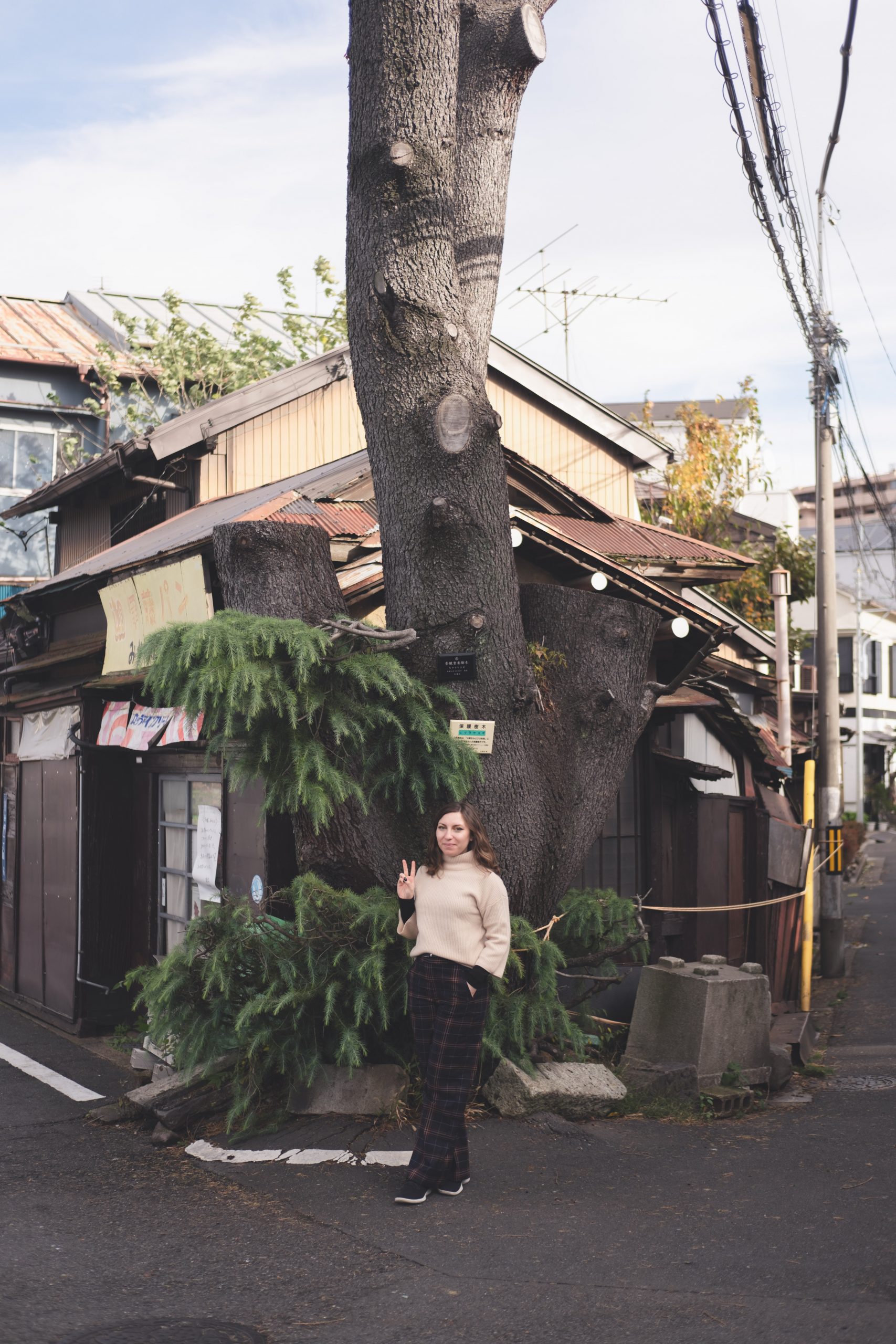
The bar offers an array of exclusive local beers, and I recommend trying their sampler selection first to taste various options before choosing your favorite.
Kayaba Coffee – After lunch, order a coffee from Kayaba Coffee, a charming and historic coffee shop located in a traditional Japanese house. Built in 1916, this traditional old house was home to the Kayaba coffee shop from 1938 until the proprietor’s death in 2006. In 2009, a local non-profit group, together with the team from Scai the Bathhouse gallery, reopened the beloved community icon, preserving its original exterior and signage.
Himalayan Cedar Tree – Take a photograph in front of the majestic Himalayan Cedar Tree, an iconic landmark in the Yanaka neighborhood that stands tall and proud, serving as a symbol of the area’s resilience. The Cedar Tree was planted before World War II.
Nezu Shrine and Nezu Streets – Conclude your afternoon by exploring the beautiful Nezu Shrine and the charming streets of Nezu. The shrine, with its lush gardens and traditional architecture, offers the perfect photo opportunities. The nearby streets have picturesque alleys. This is a residential neighborhood, so please be mindful and be as quiet as possible.
Dinner at Nezu Kamachiku – Head to one of my favorite restaurants in Nezu called Nezu Kamachiku, a well-regarded udon noodle restaurant. Nezu Kamachiku was established in 1917, and has been serving high-quality noodles since. The building itself is an architectural gem, designed by renowned architect Kengo Kuma. Its wooden structure and large glass windows create a harmonious blend of modern and traditional elements. I recommend trying the kake udon (udon in hot broth) or zaru udon (cold udon with dipping sauce).
Day 6: Aoyama & Roppongi hills
Visit the Nezu Museum in Aoyama – Aoyama is by far my favorite area in Tokyo. It’s chic and so beautiful. Start your day by visiting the Nezu Museum in Aoyama. This exquisite museum houses a remarkable collection of pre-modern Japanese and East Asian art, including paintings, sculptures, and ceramics.
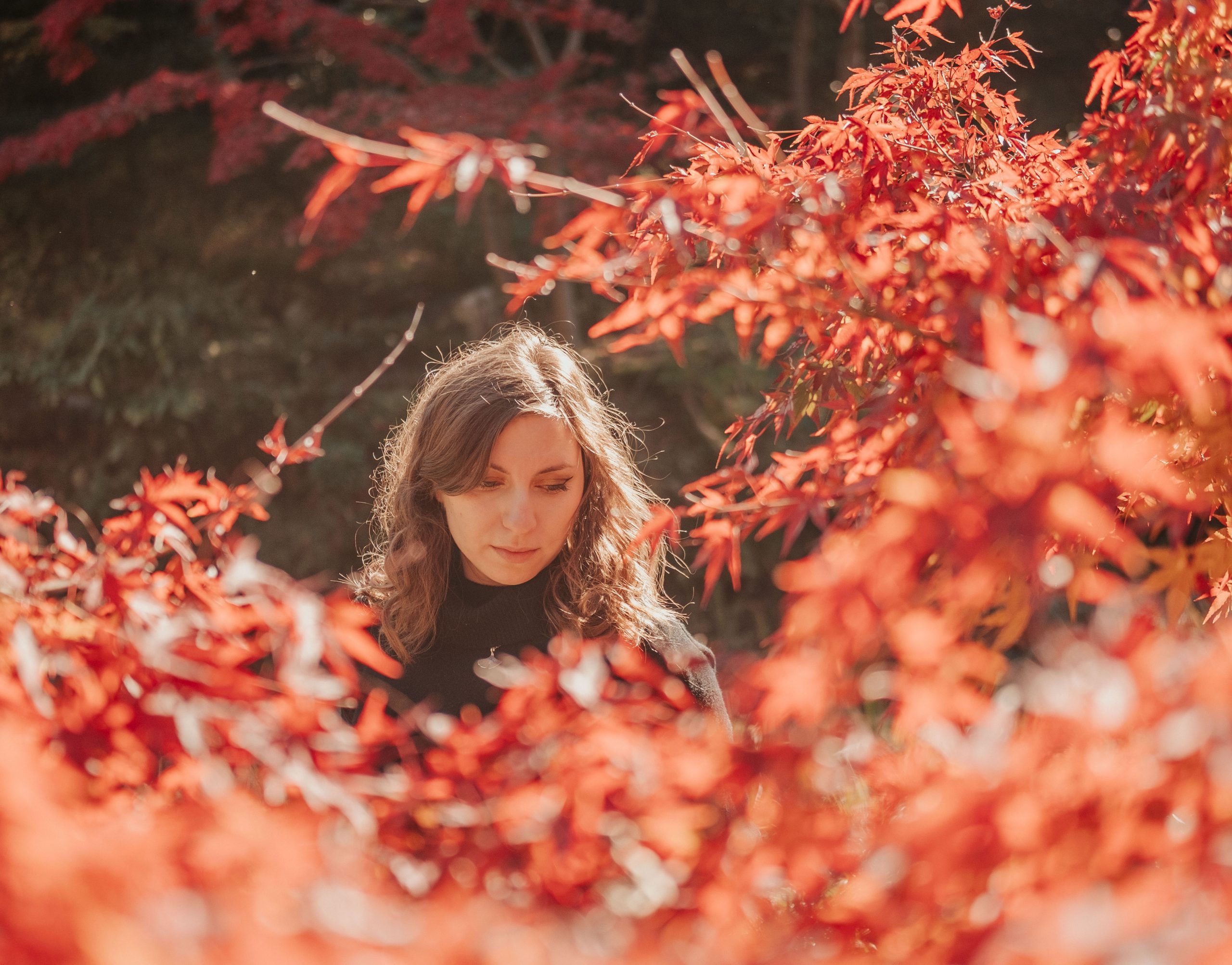
But it’s for the garden that you want to visit Nezu Museum. You will feel transported into the stunning gardens of Kyoto, this is how beautiful it is. You will have stone paths, stunning manicured gardens, a superb pond, tea houses and even a wooden boat. For traditional photos, Nezu Museum is a favorite. For a snack, I do recommend sitting down in their garden restaurant called NEZUCAFÉ which offers impecable views of the gardens. Order a cup of tea with a delicious Japanese cake.
Lunch at Aoyama Flower Market Tea House – Perhaps one of the most beautiful restaurants you’ll see when you visit Tokyo, Aoyama Flower Market is a unique café and florist combination. Enjoy your meal surrounded by beautiful flowers and plants. The menu offers a range of fresh, seasonal dishes, and the charming interior creates a romantic and enchanting dining experience.
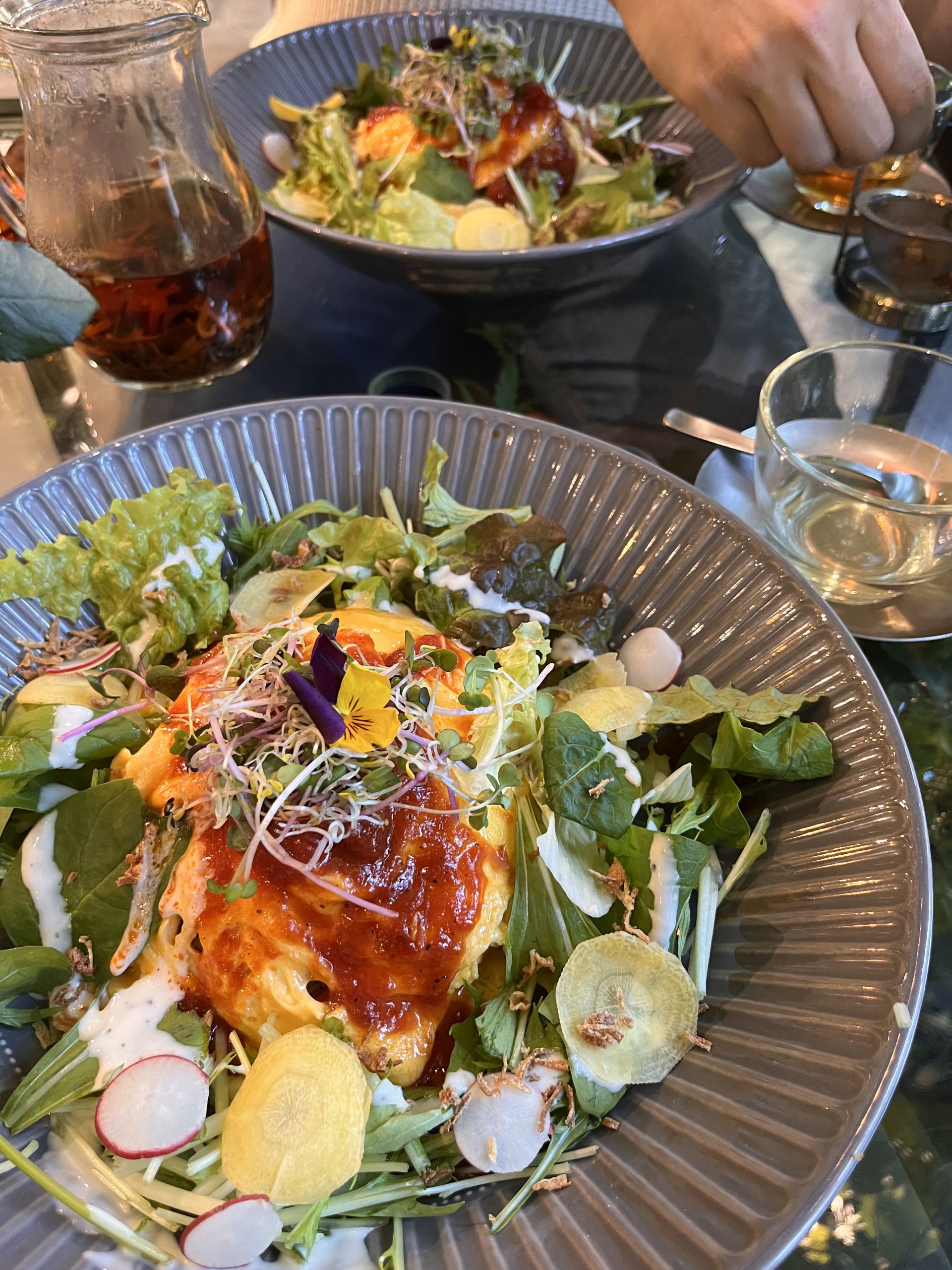
When I received my meal here (I ordered omurice), it was full of beautiful, edible flowers. Their teas are wonderful, full of fresh herbs for the most incredible flavors. For dessert, I recommend their hana-kanmuri fresh toast with seasonal fruits, edible flowers, milk sauce, ic cream and whipped cream.
Explore the fashionable Aoyama district and Omotesando shopping street – Spend your afternoon exploring the fashionable Aoyama district and the upscale Omotesando Shopping Street. Find designer boutiques, trendy shops, and stylish cafés.
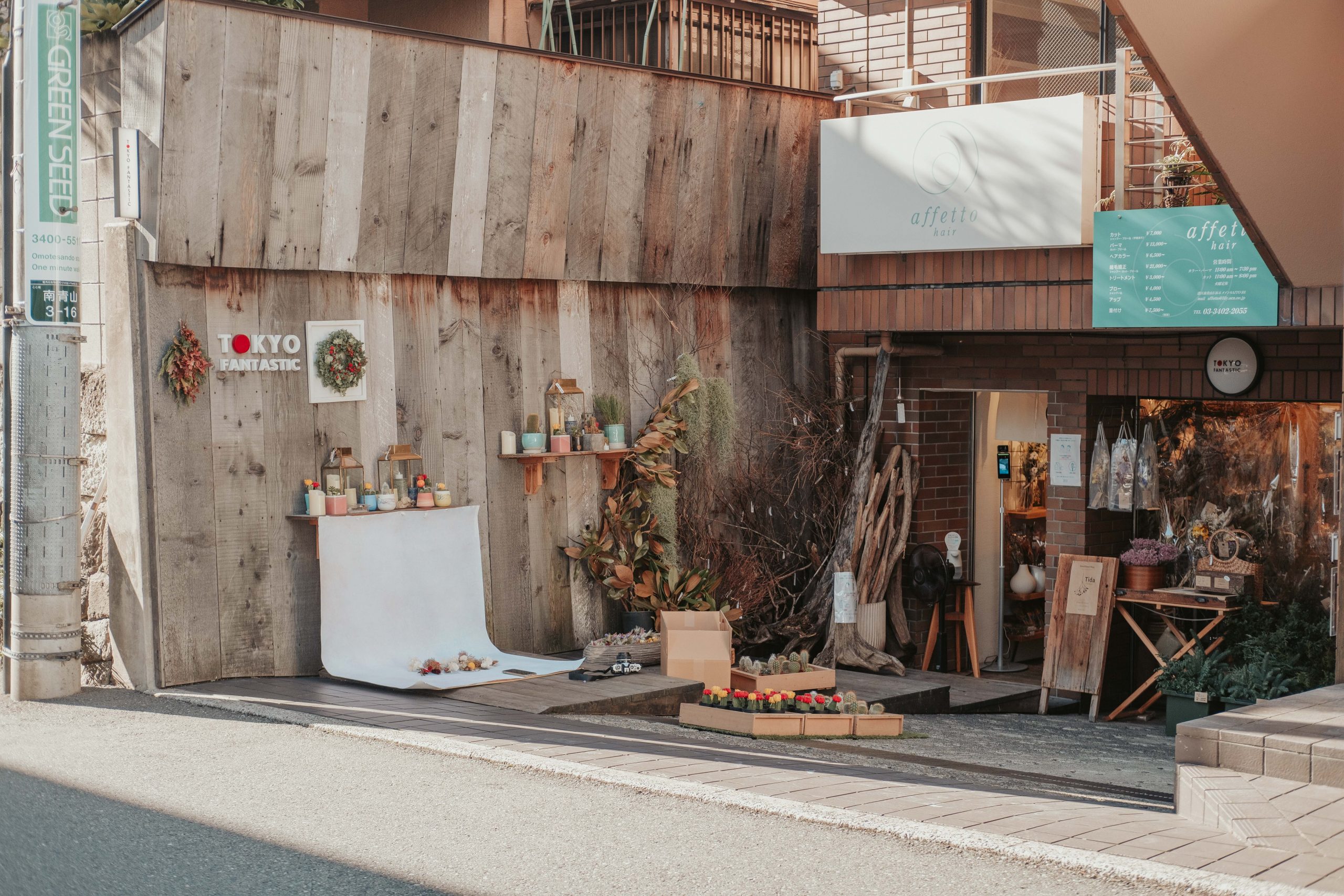
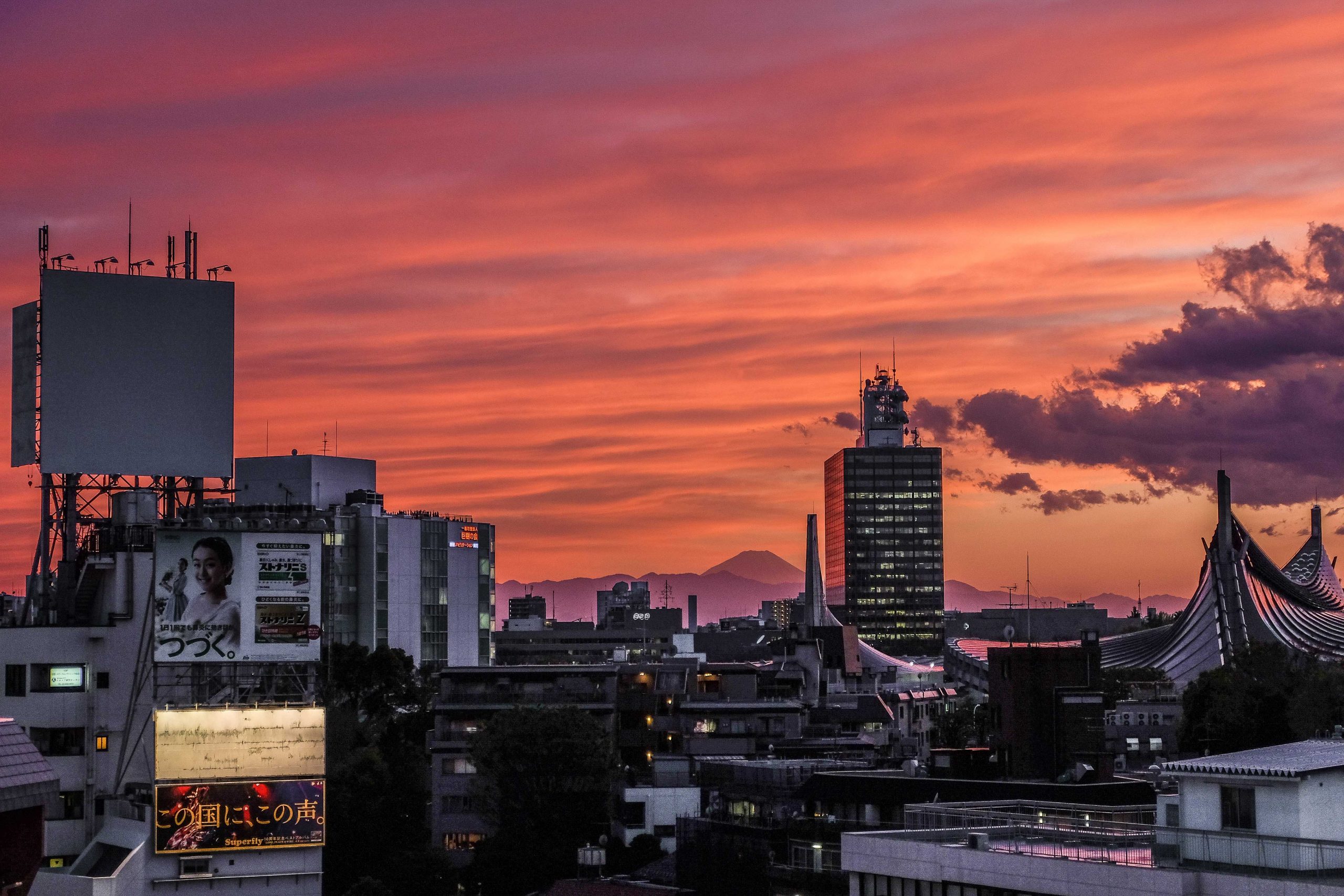
Omotesando Shopping Street is often referred to as Tokyo’s Champs-Élysées and is perfect for window shopping or indulging in some retail therapy. I recommend visiting the Gyre mall. You’ll find a cool art exhibition as well as a MoMA Design store. For a coffee in a nice location, go to the 4th floor for the café with an earthy background, perfect for photos too. It also features a terrace for a cool view over Omotesando. Alternatively, go to B1 and order a cool coffee served with special Tamitu herbal honey.
Tokyu Plaza Omohara Garden – In the decade I’ve visited and lived in Tokyo, this remains one of my favorite spots for a coffee with a view. Omohara Garden is a rooftop garden oasis with stunning views of the cityscape around. On a clear day, at sunset, you can even spot Mount Fuji. It’s a relaxed, youthful place, ideal for a sunset because there are many fairy lights in the garden and the whole place looks incredible.
Roppongi Hills Mori Tower – Get the Chiyoda Line to Nogizaka station and walk to the Roppongi Hills Mori Tower. Depending on your energy levels, visit the Mori Art Museum which, in my opinion, is one of the best art museums in Tokyo. The museum is housed on the 53rd floor of the Mori Tower, and it offers impressive views of Tokyo.
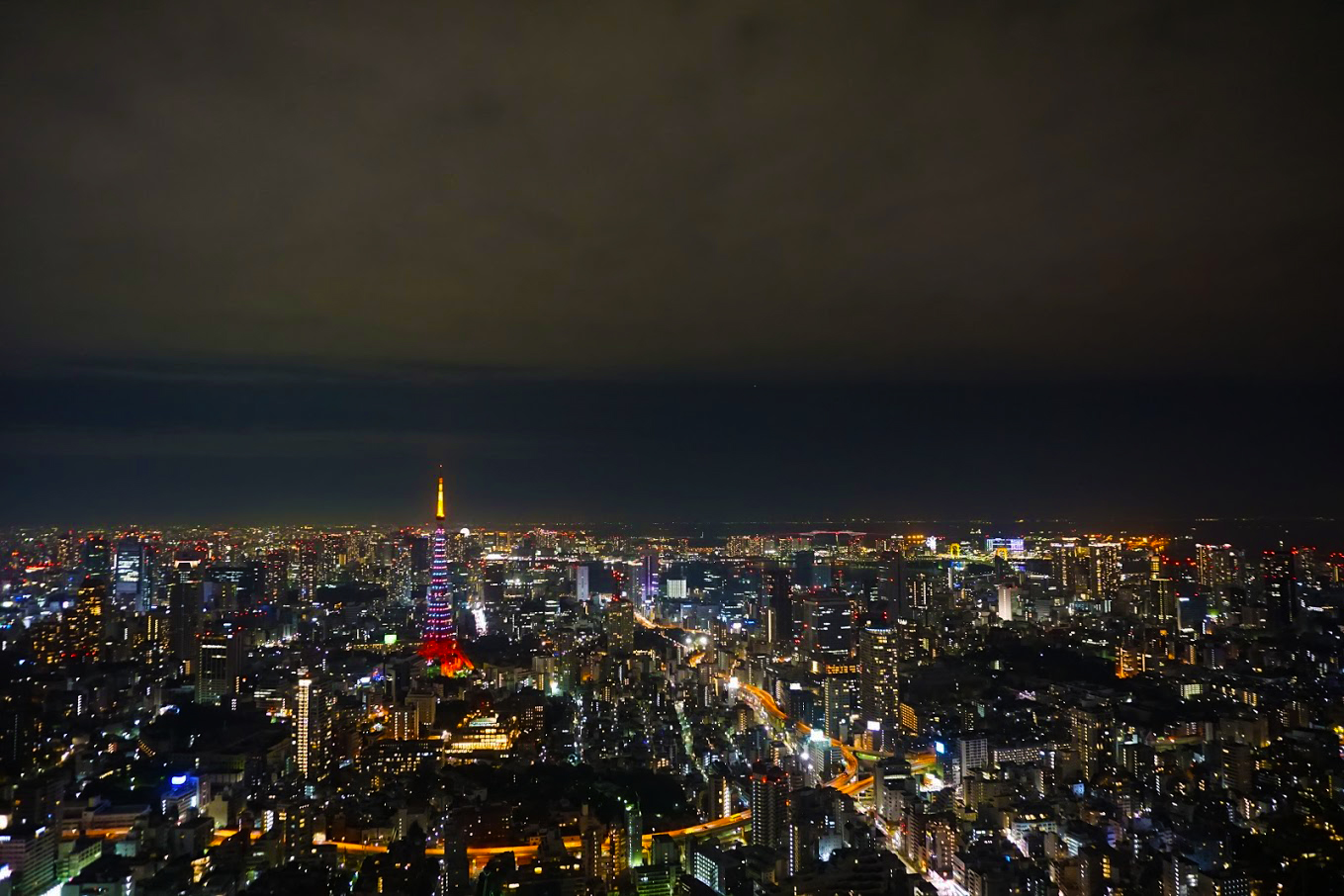
Alternatively, skip the museum and get your tickets to the Roppongi Hills Sky Deck located on the top of the Mori Tower. This is an open air rooftop that lets you photograph the most impressive skyline of Tokyo. I honestly believe it’s the best place to see Tokyo from above at night. I recommend that you purchase your tickets in advance for the indoor observation deck as well as the outdoor sky deck).
Dinner at Gonpachi Nishiazabu – Just 6 minutes walk from Mori Tower, you have the epic Gonpachi Nishiazabu, a Japanese izakaya that inspired Quentin Tarantino’s iconic restaurant scene in Kill Bill. The atmosphere is energetic and fun and the menu has plenty of delicious izakaya foods including yakitori, tofu, tempura, dumplings and more. I recommend making a reservation online.
Day 7: Shibamata
Take the JR Yamanote Line, JR Chuo Line, or another appropriate line to Nippori Station. Board the Keisei Main Line at Nippori Station and ride it to Keisei-Takasago Station, which takes around 15 minutes. Once there, switch to the Keisei Kanamachi Line bound for Shibamata, a brief 2-minute journey. The total travel time is approximately 35-50 minutes.
Visit Shibamata Taishakuten Temple – Begin your day by visiting the historic Shibamata Taishakuten Temple, a beautiful Buddhist temple dating back to the 17th century. Admire the intricate wood carvings, peaceful gardens, and serene atmosphere as you explore the temple grounds.
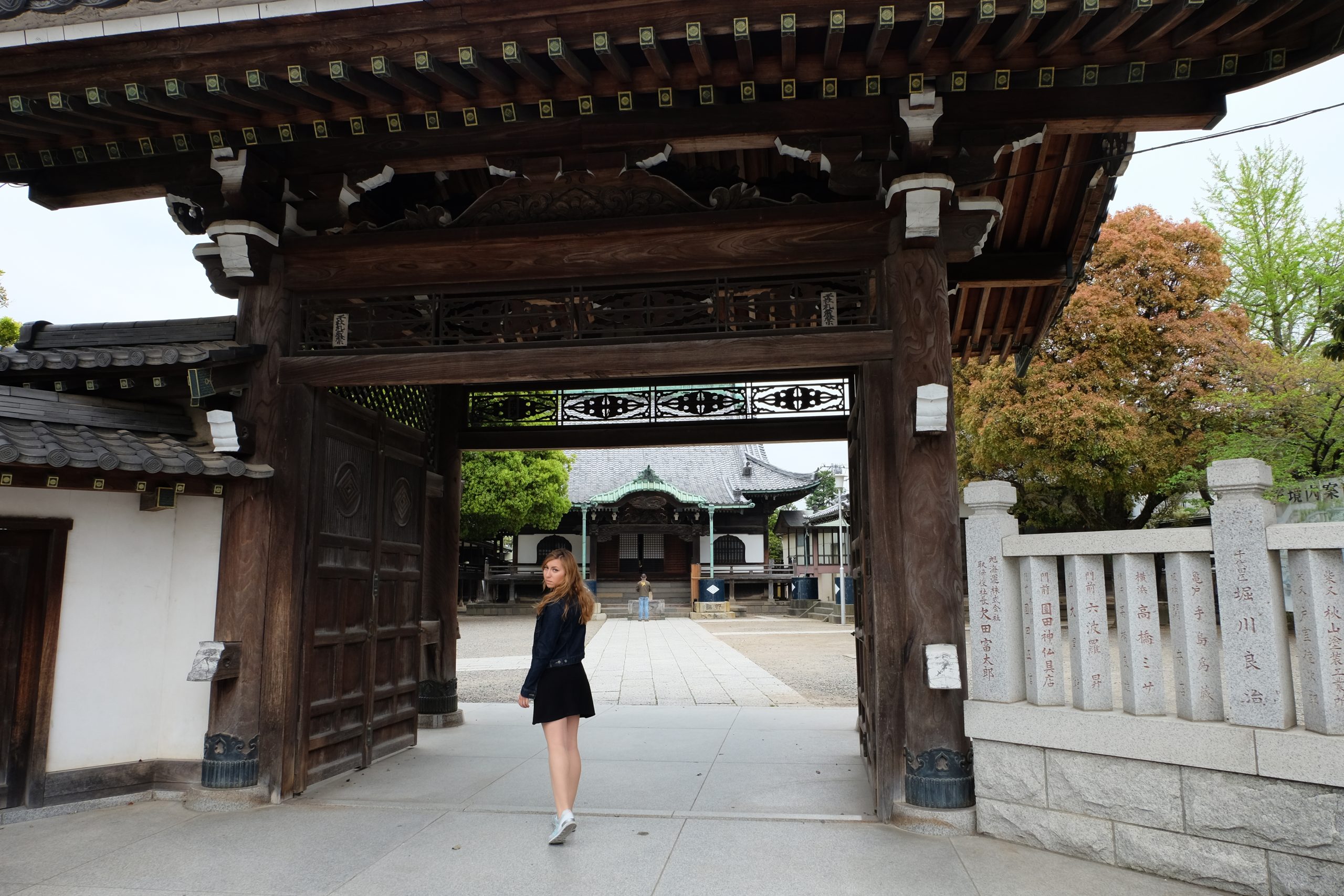
Explore the nostalgic streets of Shibamata – After visiting the temple, stroll through the charming, nostalgic streets of Shibamata. This well-preserved area gives you a glimpse of old Tokyo, with its traditional shops, wooden buildings, and friendly atmosphere. You will find the Shibamata Toy Museum, a retro place which has arcade games, childhood sweets and plenty of collectables. There is also a museum dedicated to Tora-san movies.
Visit the Yamamoto-tei house and garden – Visit the Yamamoto-tei, a stunning traditional Japanese house and garden that showcases beautiful architecture and landscaping. Take your time to explore the peaceful garden and admire the elegant design of the house. Situated less than 10 minutes on foot from Shibamata Station and just behind the Shibamata Taishakuten, this exquisite mansion combines traditional shoin-zukuri and European architectural styles. Just across the street, you’ll find the Edo River, which you can traverse using a traditional boat.
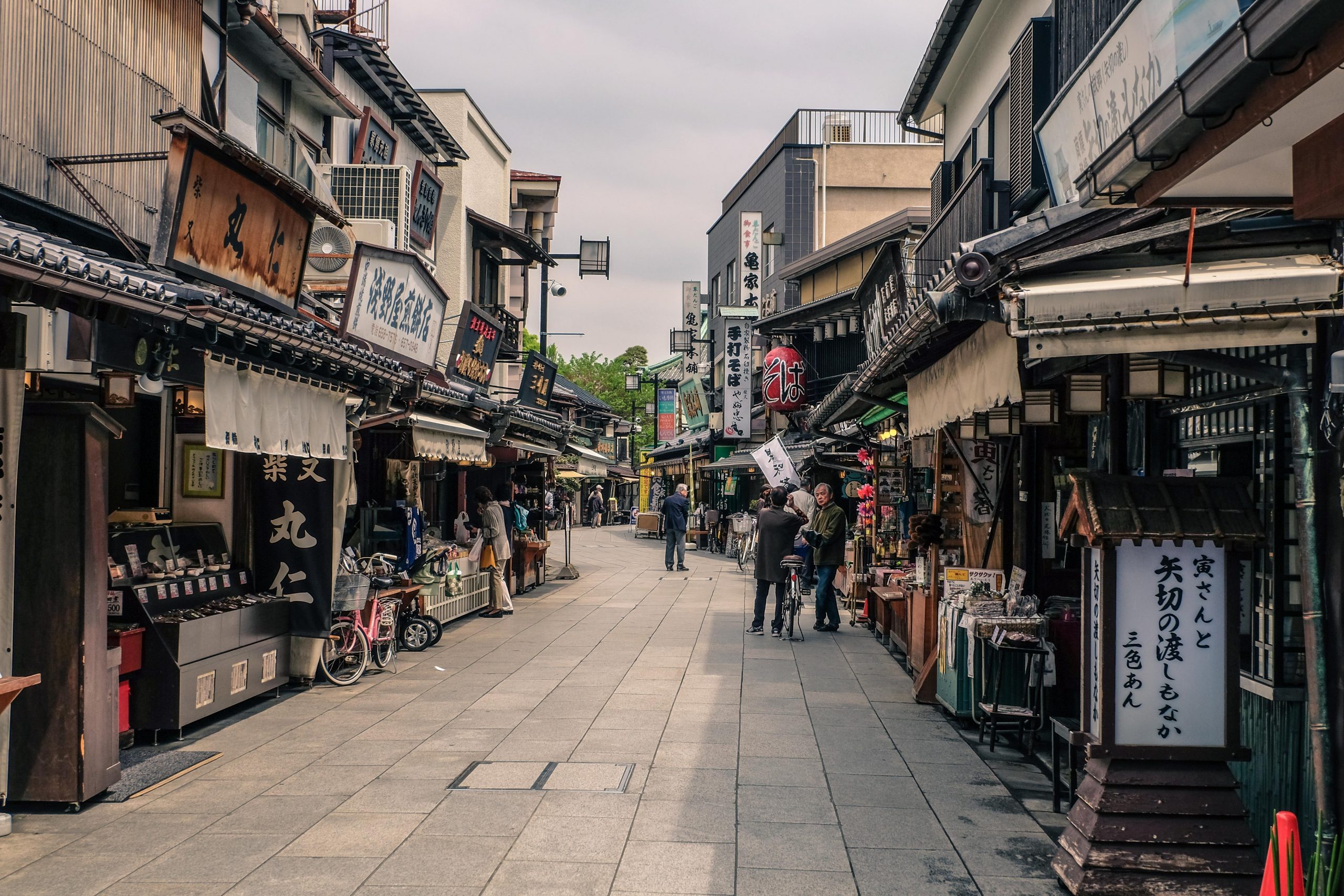
Lunch at Kameido Masumoto Suzushiroan Shibamata – I recommend Kameido Masumoto Suzushiroan Shibamata. Affordable and served by very kind locals, this was one of the best lunches I’ve had in Tokyo. I do need to warn you, there is no English menu, so you do have to rely on Google Translate for most of the time. But when in doubt, just point at the picture on the menu. When you exit the restaurant, stop at the Kameya Honpo known for delicious traditional Japanese sweets. I recommend trying a yuzu or matcha dango.
Onsen Experience at Maenohara Onsen Sayano Yudokoro – From Shibamata Station, take the Keisei-Kanamachi Line to Nippori Station, then change to Yamanote Line and ride the train to Sugamo Station. From Sugamo Station, the Mita Line for 6 stops to Shimura-Sakaue Station. Walk for 10 minutes and find yourself at the Maenohara Onsen Sayano Yudokoro.
The onsen is open from 9 am until midnight, with the last admission at 11pm. Admission fees for adults start from just ¥900 and give you 5 hours inside the onsen. There is shampoo, conditioner and body soap as well as cotton swabs and a hair dryer on site, available free of charge. You can rent a towel and bathrobe set for just ¥560 extra. There is also a dry and bedrock sauna. For those seeking massages and treatments, prices are very reasonable.
My advice is to familiarize yourself with using an onsen before going there.
For dinner, I recommend eating at the restaurant located in the onsen. After being all relaxed and comfortable, there’s nothing more exciting than enjoying a delicious meal in a beautiful tatami room restaurant. To book the restaurant room, you need to pay a room price as well as the course meal price. I do recommend booking this in advance.
There is nothing more relaxing than enjoying a traditional Japanese onsen experience. It’s one of our favorite things to do in Japan and something you should definitely try on your trip.
Once you are all relaxed and rejuvenated, head back to your hotel room to pack. You have now completed your epic 7 days in Tokyo itinerary, full of attractions, activities and delicious food.
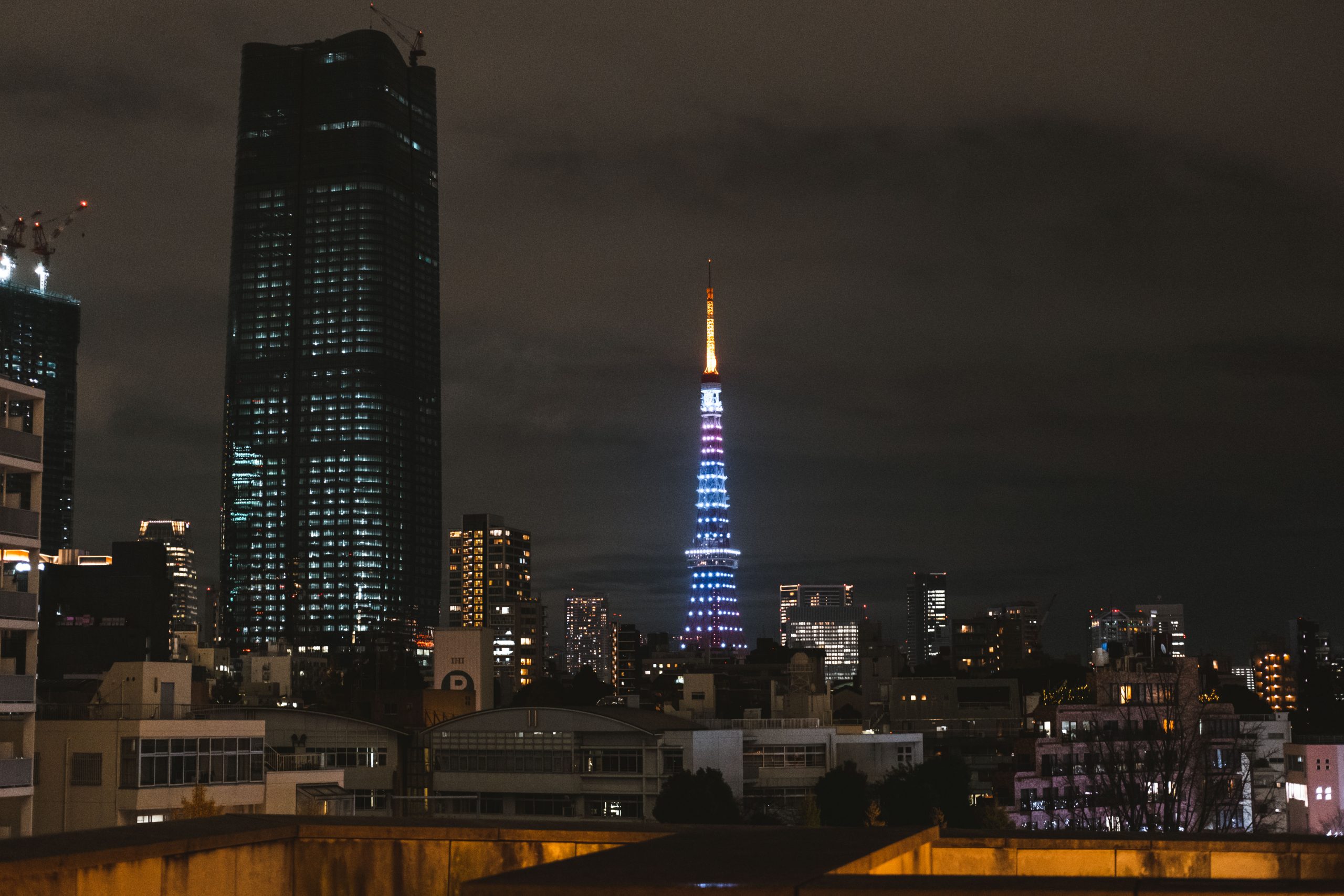
More things to add to your Tokyo 7 day itinerary
My 7 days in Tokyo itinerary was created to ensure you do the coolest things in Tokyo, eat the best food and try a little of everything. I appreciate that everyone is different, and you might want to add or remove things from my itinerary to suit your travel style. This is precisely why I want to mention a few more attractions and places to consider.
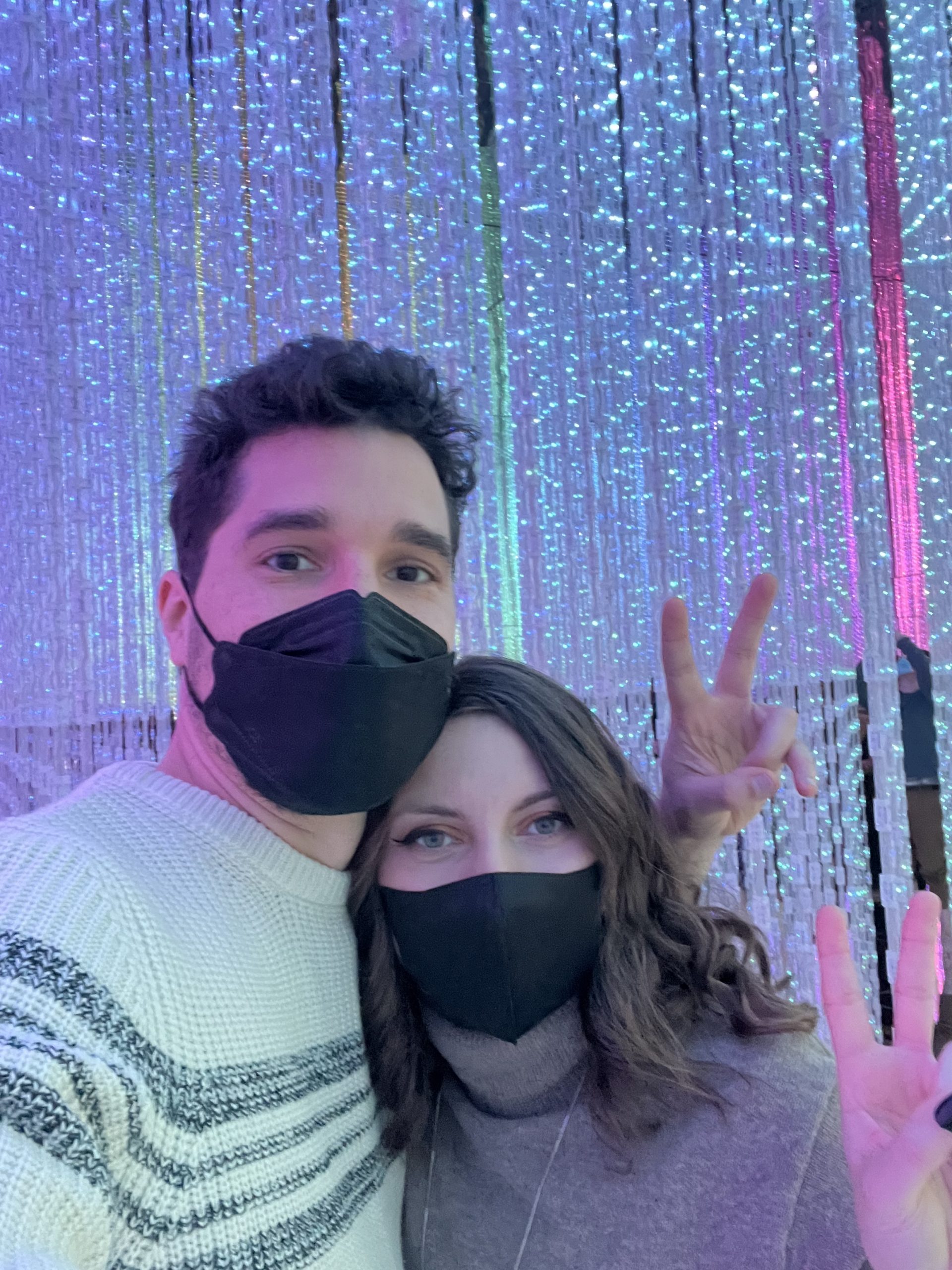
teamLab – This is an extremely popular attraction in Tokyo, with some of the longest queues I’ve seen. I’ve been to teamLab with my husband and while we found it interesting, we don’t think it’s worth the money or the time. While it’s a cool interactive experience, it’s not representative of Tokyo or Japan in any way. The attraction can get very, very busy, and it’s definitely tailored to tourists only. Should you wish to visit, make sure to book your tickets in advance and arrive as early as possible. As a tip, if you do decide to visit, make sure to wear shorts or bring shorts with you to change before entering the exhibitions as almost always there will be a feature of water which means you will need to remove your socks or tights or fold your jeans above your knees.
Tokyo Disneyland – Totally appreciate that Tokyo Disneyland is incredibly popular, but again, the queues might considerably eat into your day of exploration. I do recommend booking your tickets in advance to skip the queues. Tokyo Disneyland and Tokyo DisneySea attract millions of visitors annually and are a major draw for families and Disney enthusiasts.
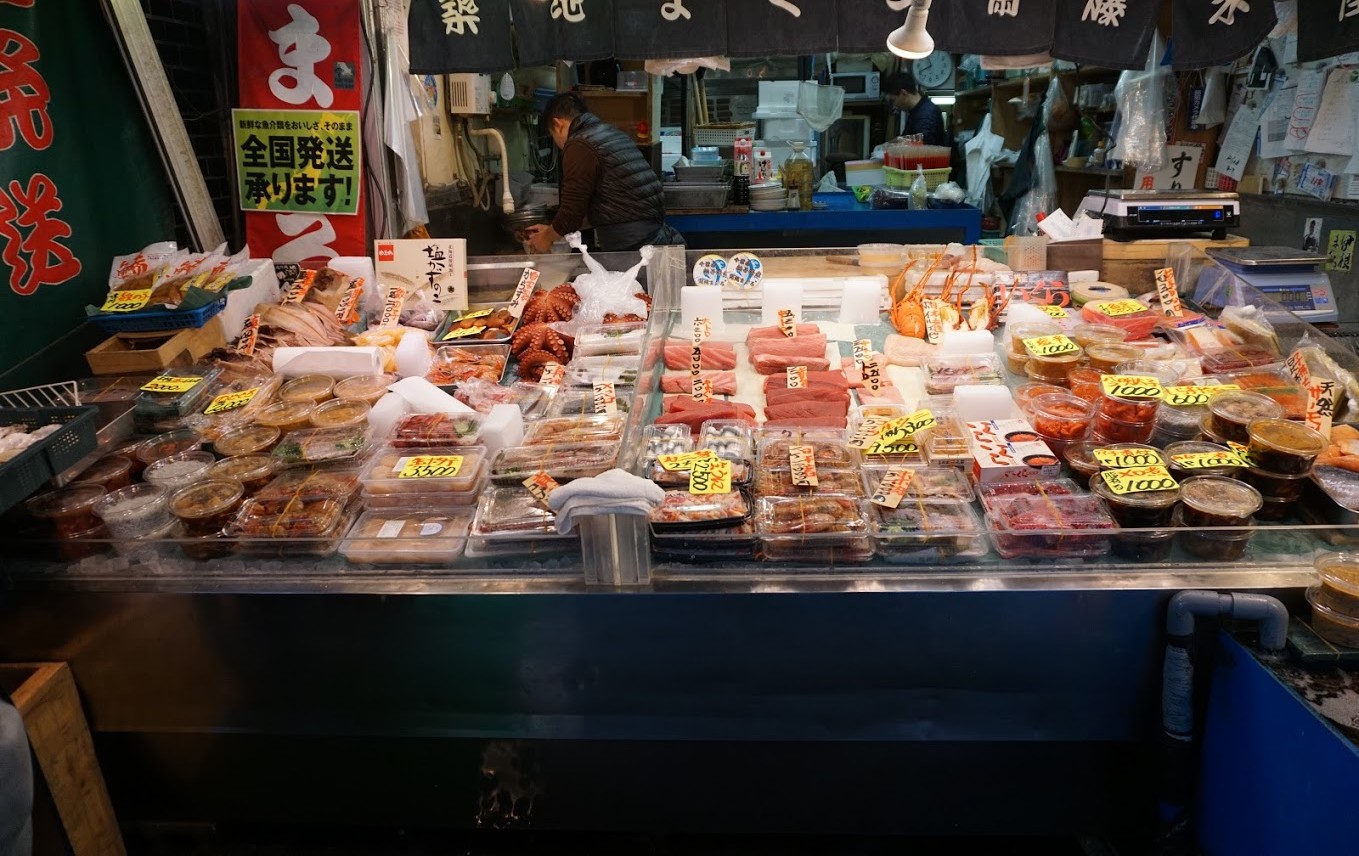
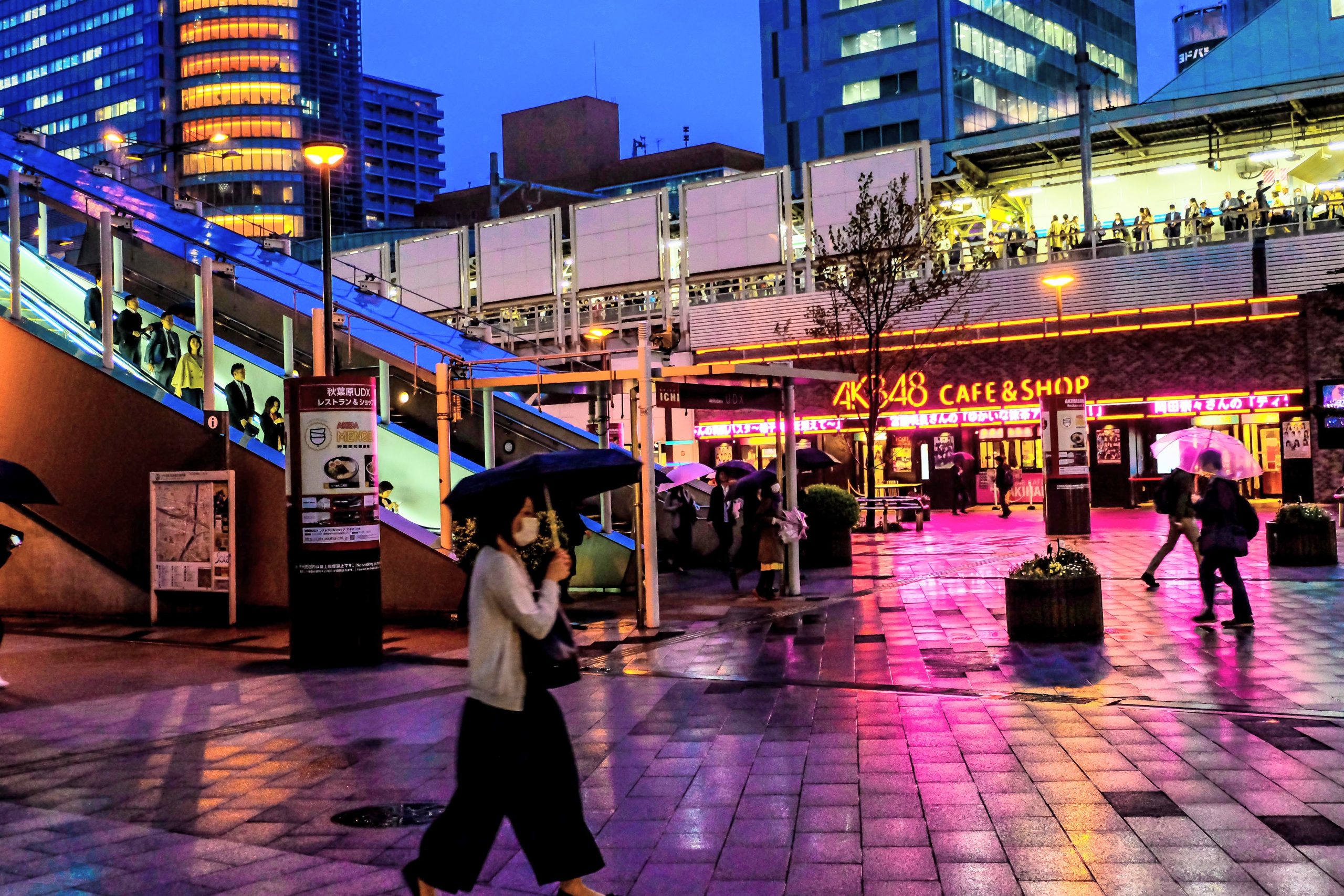
Tsukiji fish market – The original Tsukiji fish market has now moved to Toyosu instead. You can still view the tuna auction at Toyosu should you be interested in this. You can visit the outdoor Tsukiji fish market which has plenty of stalls selling fresh ingredients and snacks.
Akihabara – Ah, the electric town, the one people either love or hate. Akihabara has its own interesting reputation, but I feel there are a lot more interesting places to visit in Tokyo instead. Akihabara is your place if you wish to visit a pachinko, want to purchase actual electronics, are interested in Japanese anime and toys or want to play arcade games.
Tokyo bay – There are some popular attractions in and around Tokyo Bay, including Odaiba which is a popular entertainment and shopping destination. Most people come here to see the life-size Gundam statue.
Several museums – Tokyo national museum, Tokyo metropolitan art museum, National Museum of Nature and Science, National Museum of Western Art, Shitamachi Museum, Ueno Royal Museum are all located in Ueno Park. These are excellent places to visit. However, I feel they should be on your itinerary only if this is your second or third time in Tokyo and have already seen the main highlights.
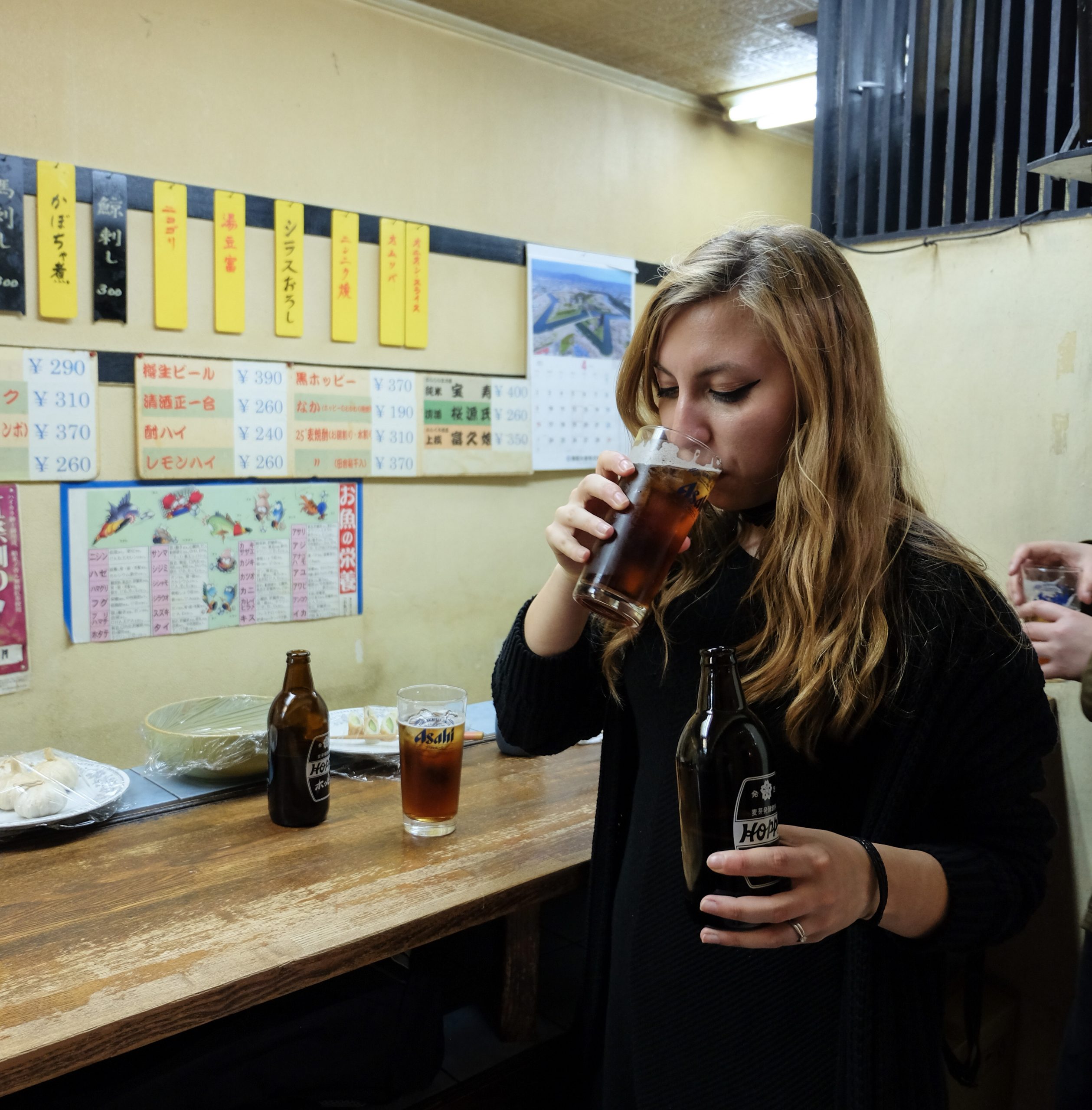
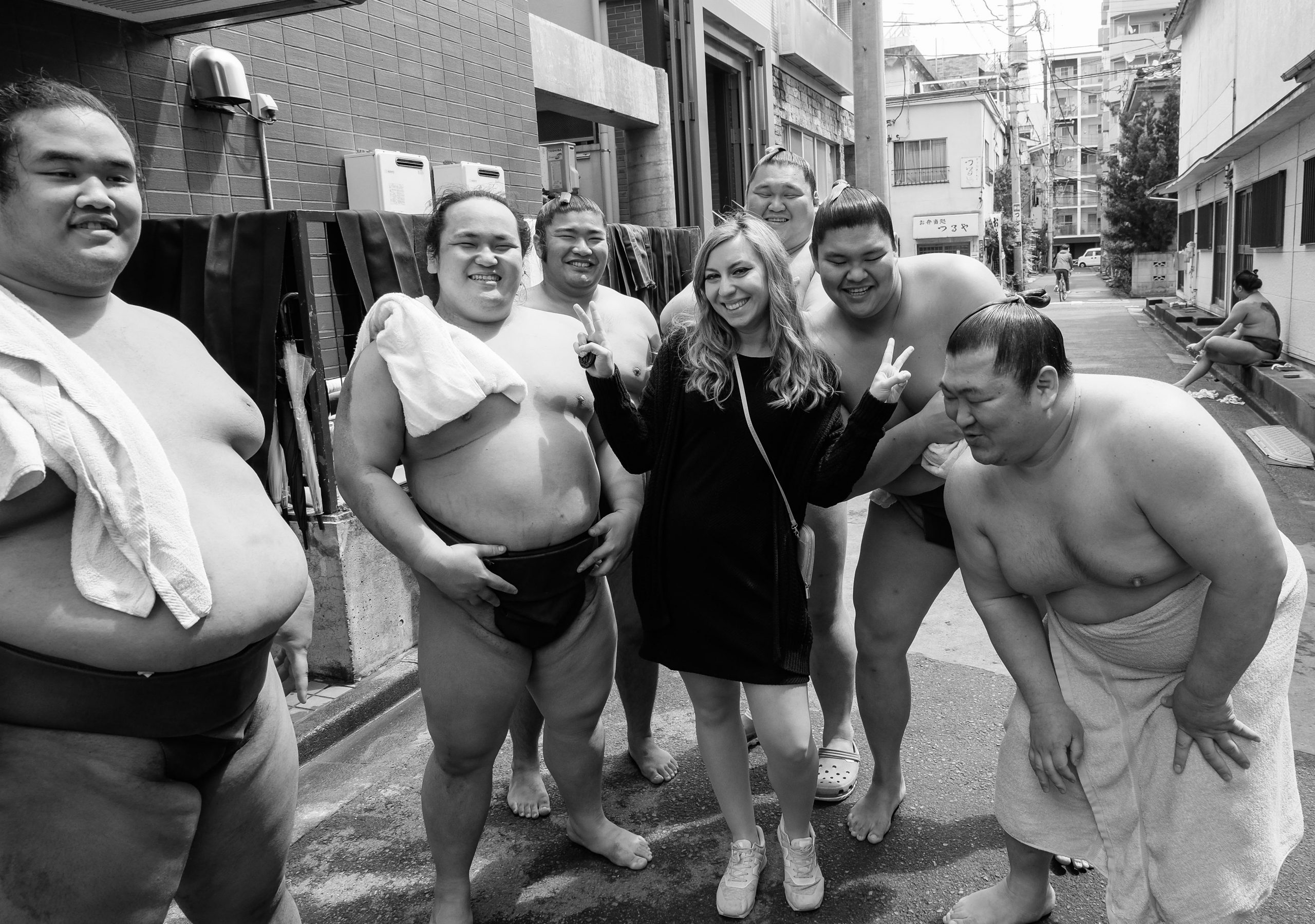
Pub Crawl – I tried to make my one week in Tokyo itinerary suitable for everyday travelers, including those with kids, seniors and well established married couples, which is why I didn’t include a pub crawl in here. However, my husband and I went to a really cool pub crawl in Tokyo while in our 20s and loved every moment of it. I do recommend it for one of the late evenings if you want to experience more of Tokyo’s nightlife.
Japanese sumo – If you want to experience sumo in Japan, I recommend going early morning to see a cool sumo practice in Asakusa. There are several companies which accompany tourists there, as you can’t just visit on your own. I loved my sumo experience in Tokyo, and it’s definitely something I recommend if you’re into it too.
Day trips from Tokyo
If you decide to extend your Tokyo itinerary, then there’s plenty of really cool Japan itineraries you can enjoy. I especially recommend my 2 weeks in Japan itinerary, which takes you to an array of epic places in Japan. But if you decide to make Tokyo your base, here are some great day trips from Tokyo you can enjoy:
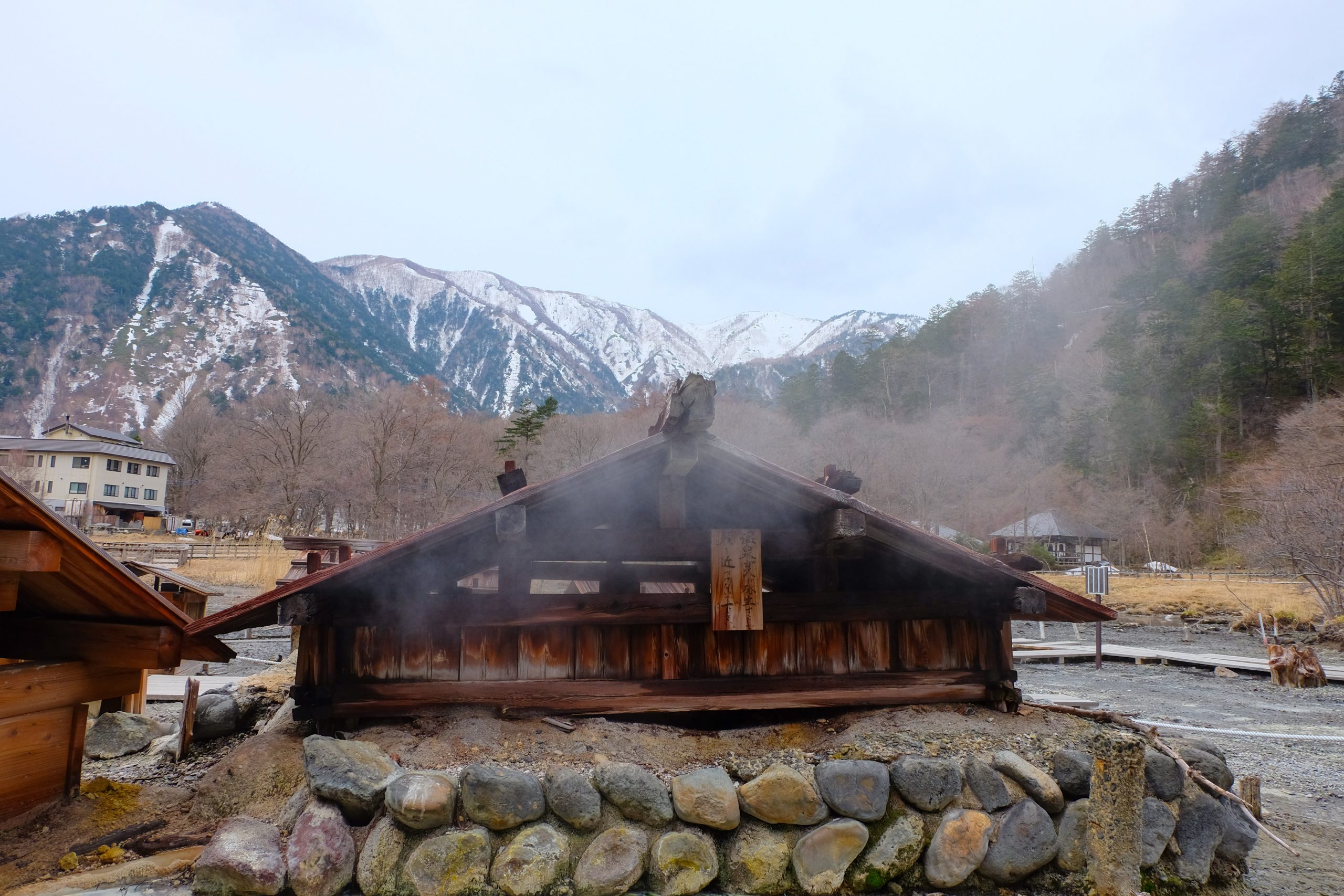
Nikko (travel time: around 2 hours) – Nikko is a city known for its beautiful shrines and temples, including the famous Toshogu Shrine, a UNESCO World Heritage Site. The area is also renowned for its stunning natural beauty, with places like Lake Chuzenji and Kegon Falls. There are so many wonderful things to do in Nikko.
Hakone (travel time: around 1.5 to 2 hours) – Hakone is a popular hot spring resort area located within the Fuji-Hakone-Izu National Park. Enjoy the Hakone Open-Air Museum, Lake Ashi, and the Hakone Ropeway, which offers spectacular views of Mount Fuji on clear days. Hakone can be accessed from Tokyo via the Odakyu Limited Express “Romancecar” or the JR Tokaido Main Line.
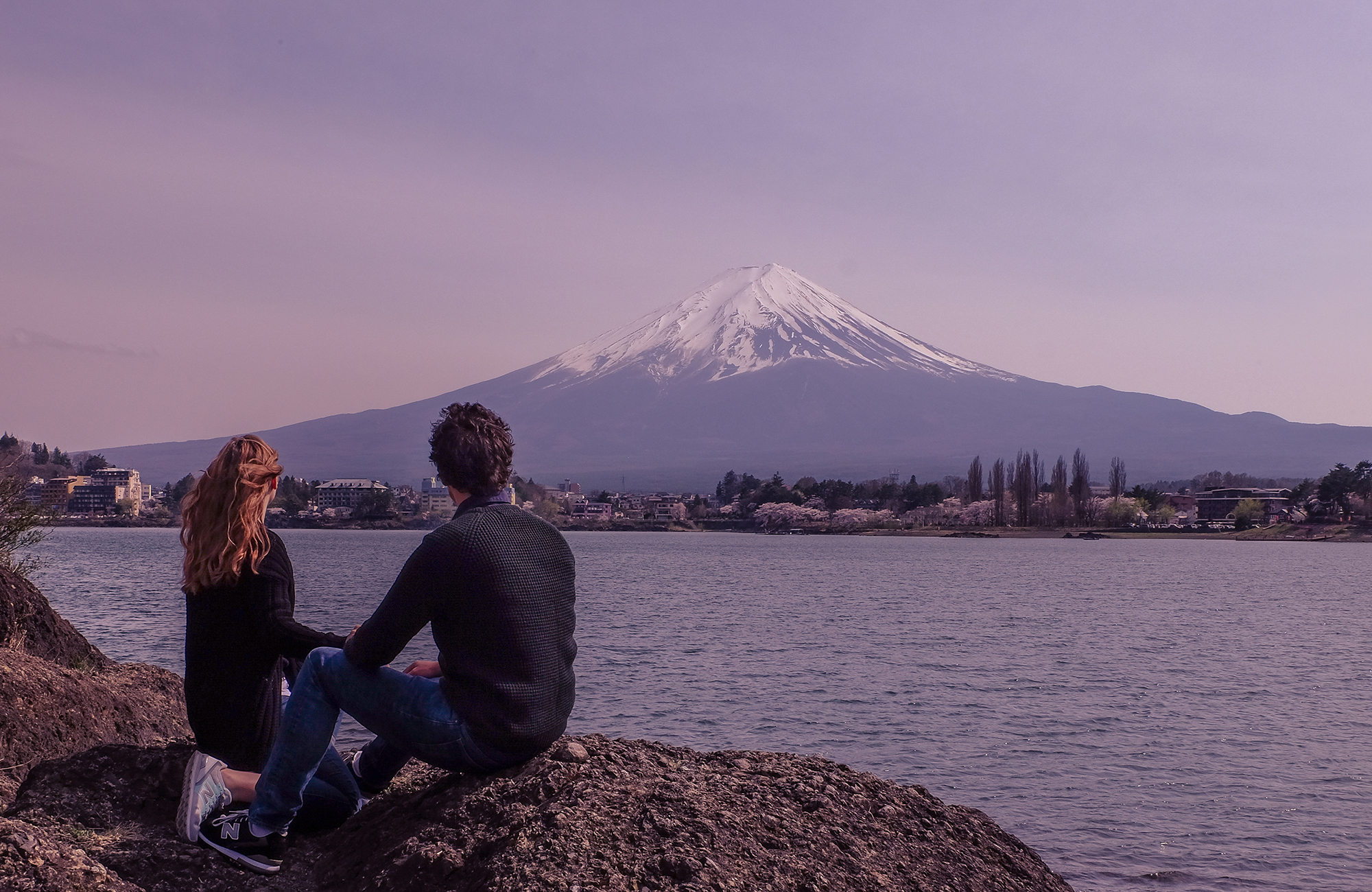
Fuji with Lake Kawaguchiko (travel time: around 2 to 2.5 hours) – Lake Kawaguchiko is one of the iconic Five Lakes surrounding Mount Fuji, offering picturesque views of the majestic mountain. It’s also one of the easiest ways to access and see the volcano in all its glory. To access Lake Kawaguchiko from Tokyo, take the JR Chuo Main Line to Otsuki Station, then transfer to the Fujikyuko Line at Kawaguchiko Station.
Yokohama (travel time: around 30 minutes) – Yokohama is Japan’s second-largest city and offers various attractions such as the Minato Mirai 21 district, Yokohama Chinatown, and the historic Sankeien Garden. I love Yokohama, there are so many cool attractions here. The Cup Noodles Museum and the Yokohama Red Brick Warehouse are some of the most popular and my favorites too. Yokohama is easily reachable from Tokyo via the JR Tokaido Line, the JR Yokosuka Line, or the Keihin-Tohoku Line.
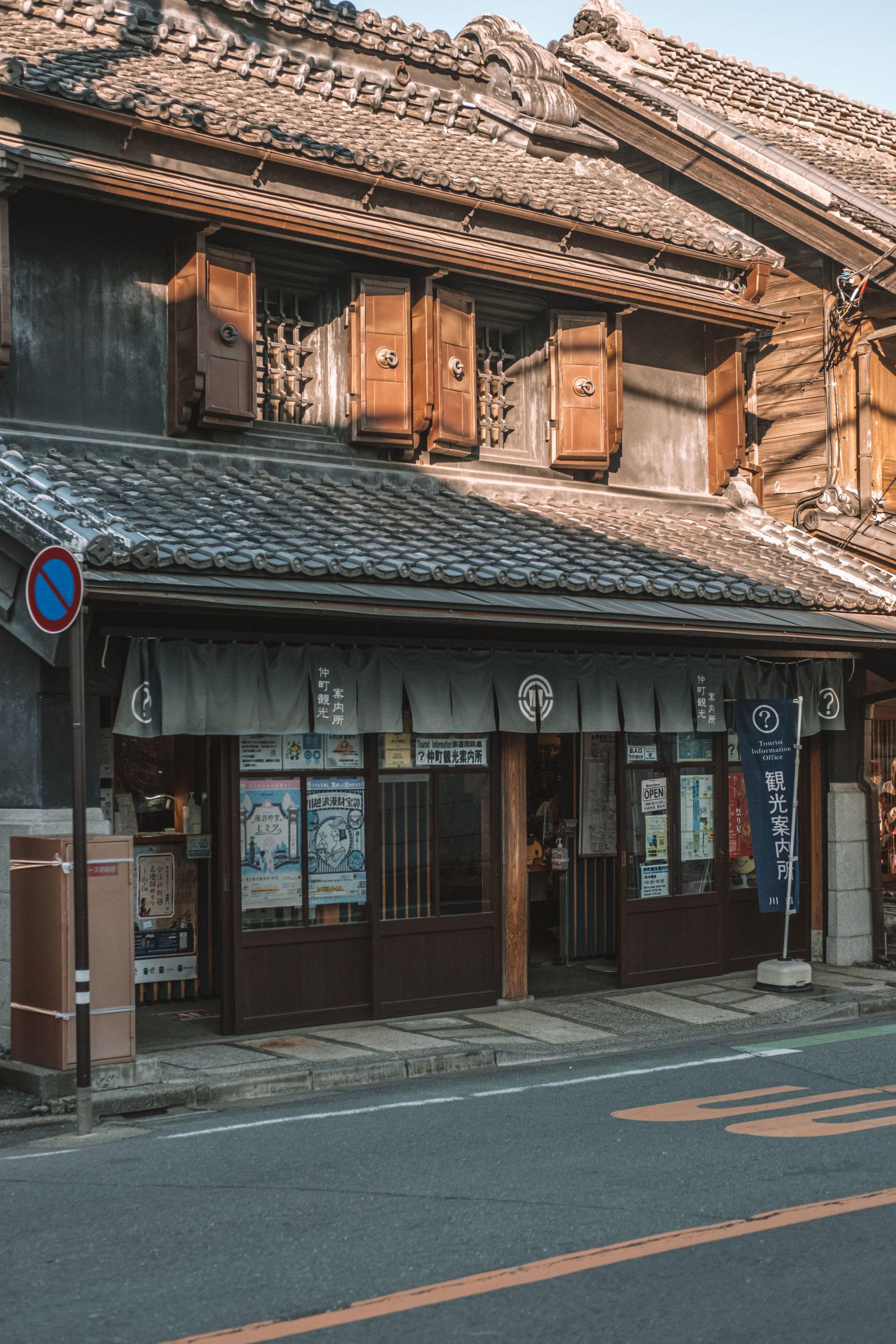
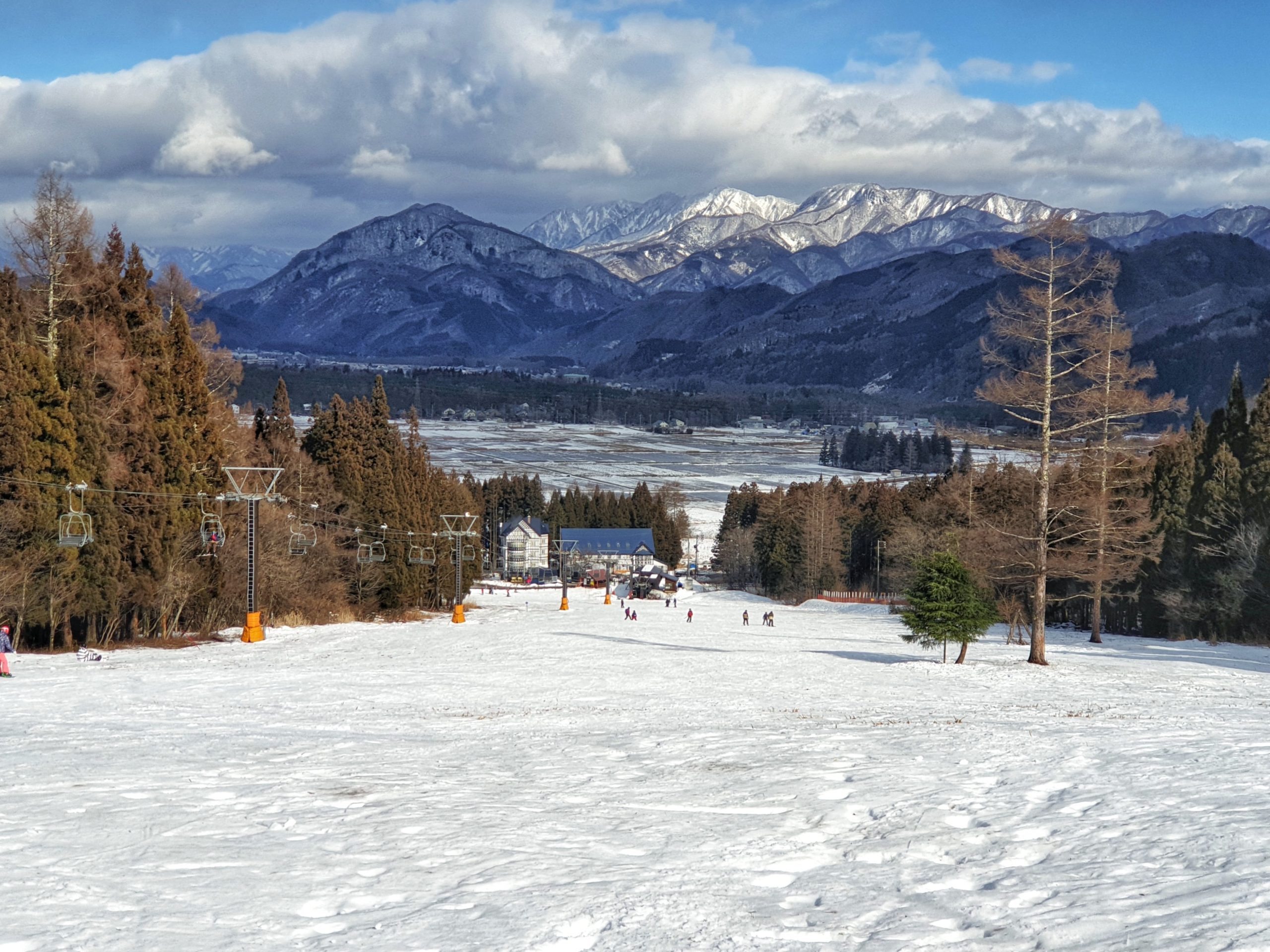
Kawagoe (travel time: around 1 hour) – Kawagoe, known as “Little Edo,” is a charming town that preserves the atmosphere of the Edo period with its old clay-walled warehouses and traditional architecture. Not many people know about this place, and it’s a cute little off the beaten path gem. You can get to Kawagoe from Tokyo via the Tobu Tojo Line or the Seibu Shinjuku Line.
Nagano (travel time: around 1.5 to 2 hours) – On a day trip to Nagano city, you can visit attractions such as Zenko-ji Temple, one of Japan’s most important Buddhist temples, and the Nagano Olympic Museum, which commemorates the 1998 Winter Olympics. You can also add the Snow Monkey Park to the day trip as well. To get to Nagano from Tokyo, take the Hokuriku Shinkansen from Tokyo Station to Nagano Station.
Final Thoughts
I hope you enjoyed this 7 day Tokyo itinerary full of awesome things to do, epic places to visit and really great food recommendations. Japan is my favorite country, and Tokyo remains my true home in the whole world. I’m always so excited to come back year after year and discover new and memorable activities, which I diligently add to this itinerary to ensure you have the best of time when visiting Japan’s capital for the first time.
Please don’t forget to check my ultimate Japan travel guide, which really does contain all the information you’d otherwise get in an expensive guidebook. It’s free and dedicated to all Japan lovers out there. Do check my Japanese customs and manners book, which I’ve created in partnership with a Japanese illustrator.
Buy this Tokyo 7 Day Itinerary as a PDF ebook. It’s a printable itinerary with useful tips and resources that you can take with you on your trip to Japan.
Enjoy your trip to Tokyo!
Frequently Asked Questions
How many days in Tokyo is enough?
Between 5-7 days in Tokyo will allow you to see the main attractions. The more you spend in Tokyo, the better you will get to know the city and see as many highlights as possible.
Unlike most cities, Tokyo is a megapolis with 23 special wards and 621 square kilometres. This means that each ward is like a different city with different attractions, different vibes and unique restaurants.
Is 7 days too long in Tokyo?
Seven days in Tokyo is not too long if you want to fully experience the city’s diverse attractions, neighbourhoods, and food scenes. In a week, you can explore different districts, indulge in shopping, see some lesser known areas, and enjoy various dining experiences. It’s the perfect time to spend in Tokyo for first time visitors.
Is Tokyo a walkable city?
Tokyo is a vast city, but the good news is that most neighbourhoods are actually very walkable. Many attractions are spread out across different districts, and relying solely on walking could be time-consuming and exhausting, not to mention impractical. Tokyo has an extensive public transport infrastructure that will take you to your desired district.
Combining walking with public transportation is the best way to explore and enjoy Tokyo. And just to give you an idea, I walked over 20 km every day in Tokyo on my last visit there. When you do decide to walk in Tokyo, it’s great, safe, and comfortable.
There are dedicated pedestrian areas, motorists are respectful of pedestrians at all times. Even walking next to the main road is a fairly relaxing affair, as the pedestrian side walks are very large to accommodate people and bikes too.
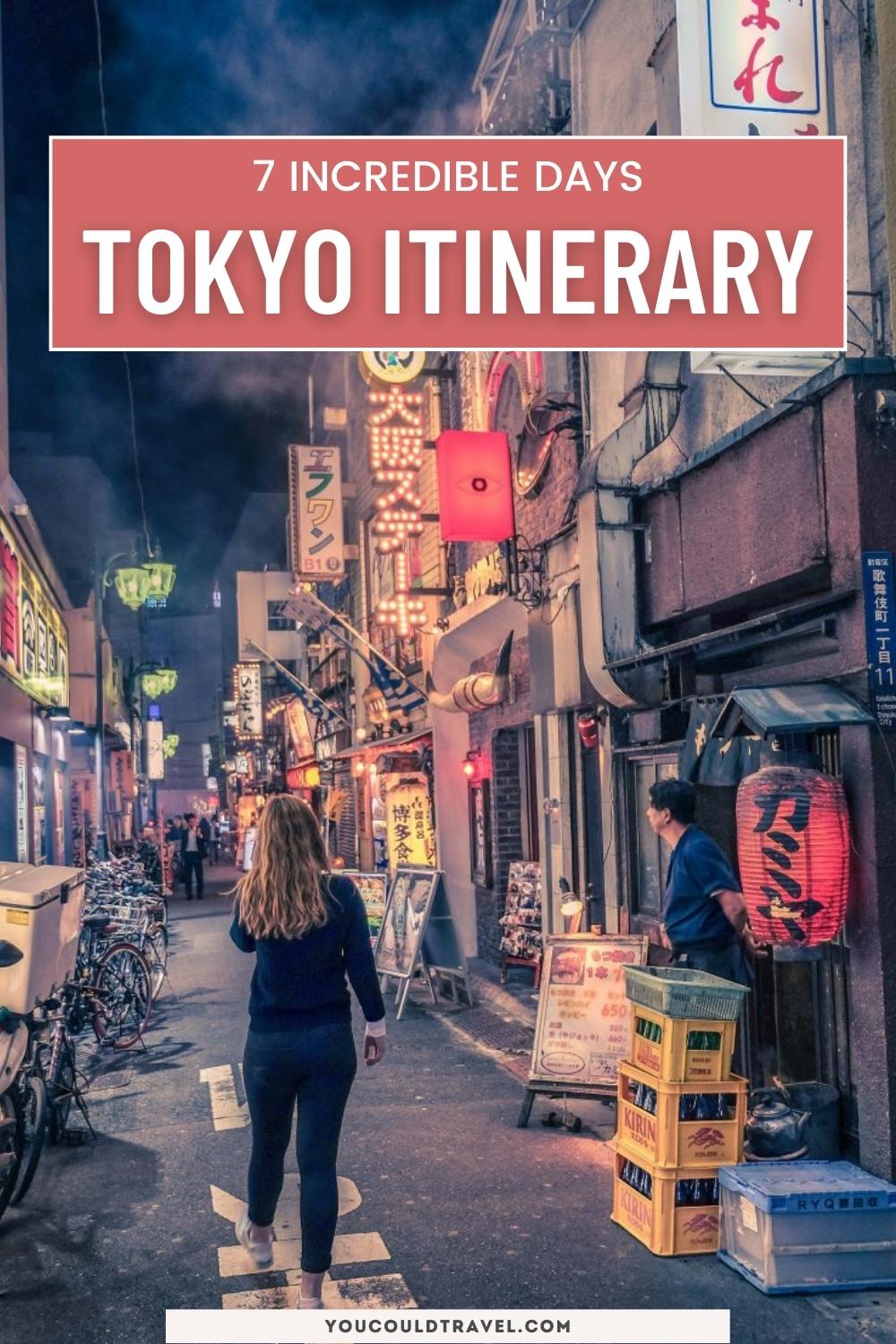
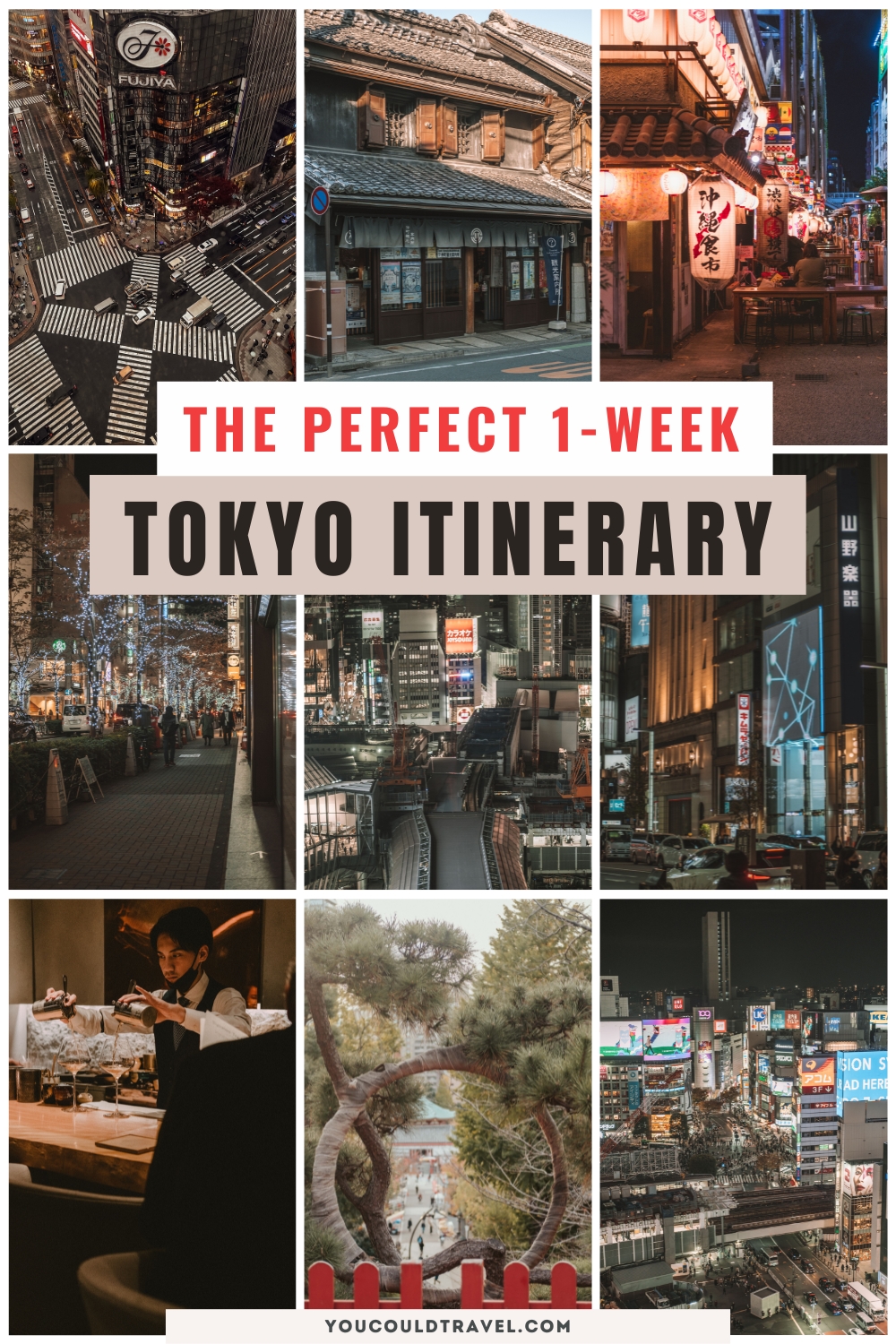

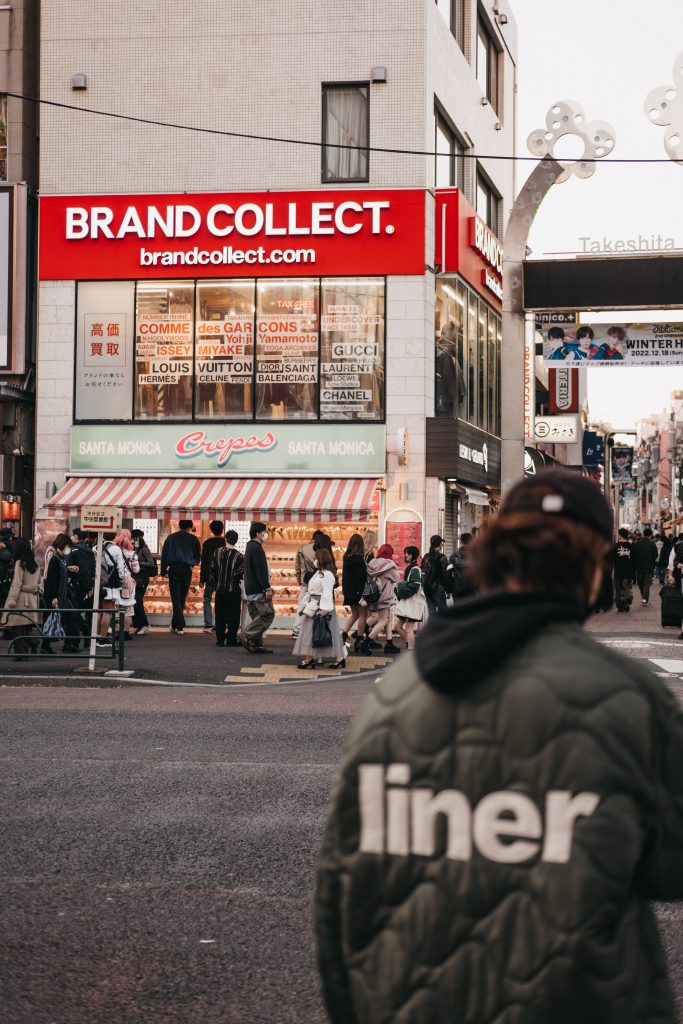
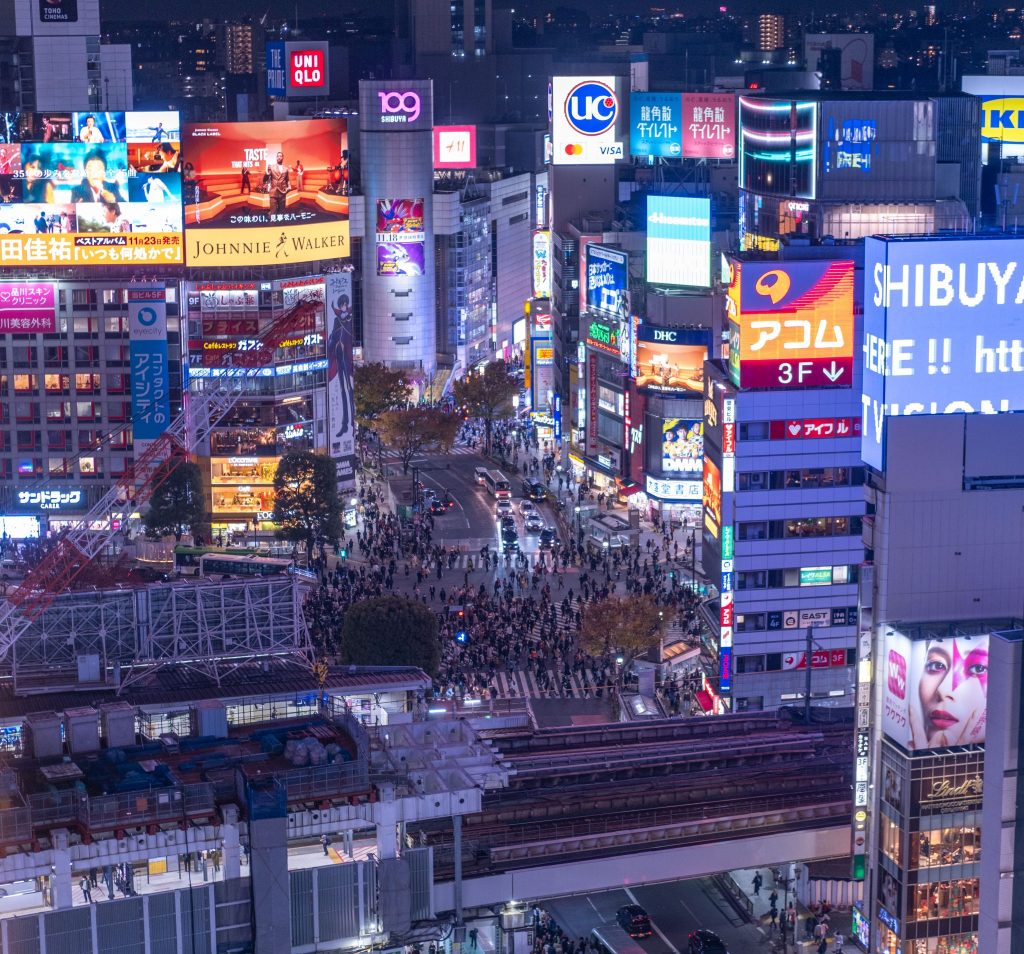
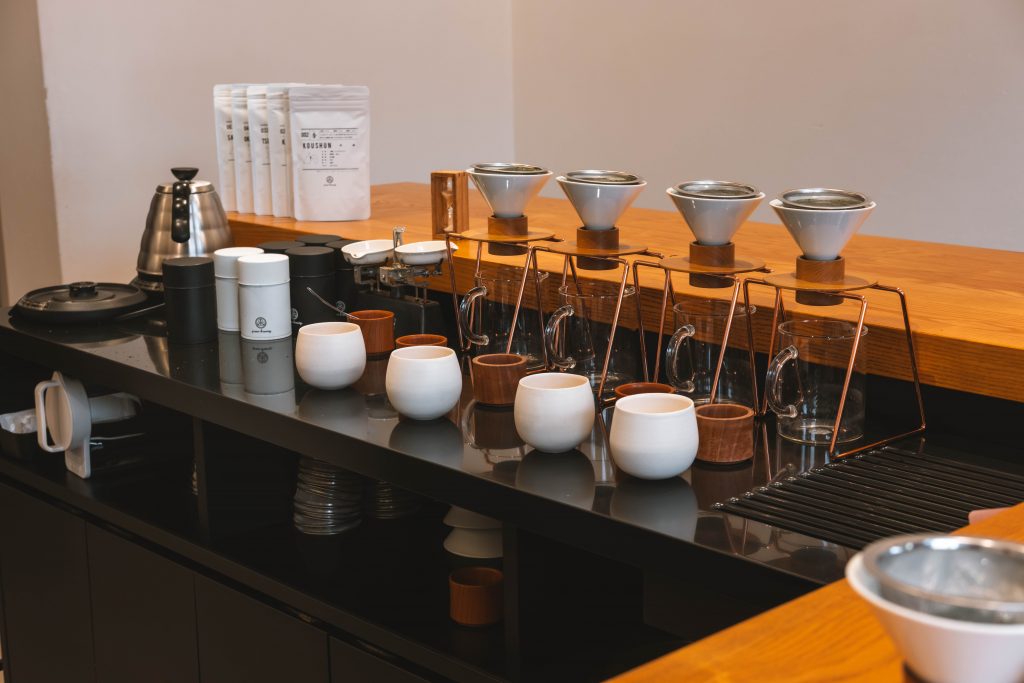
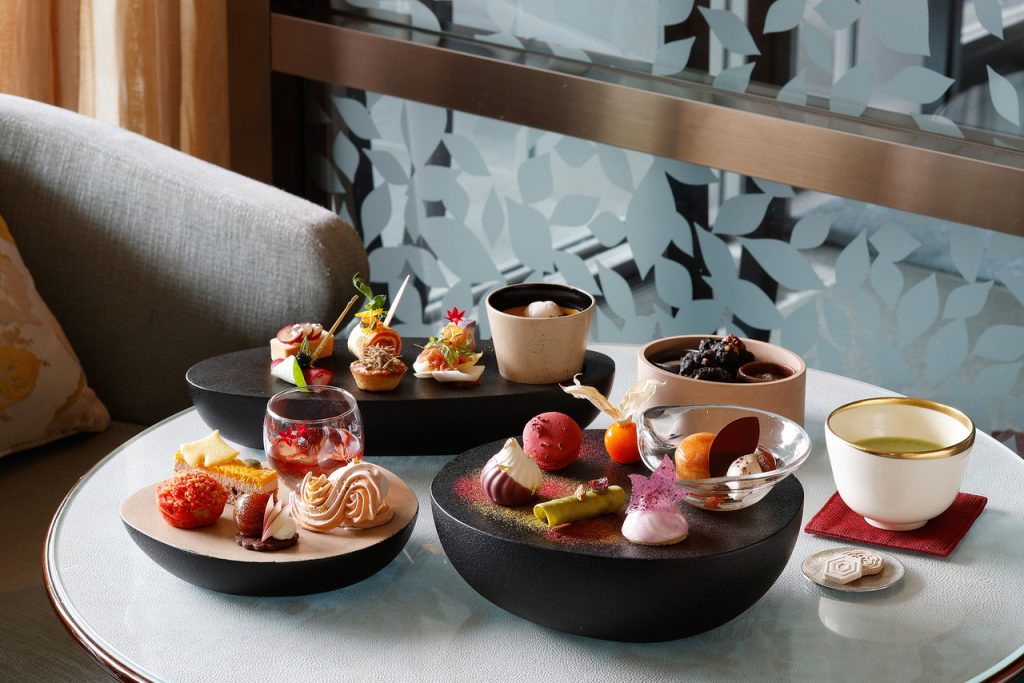
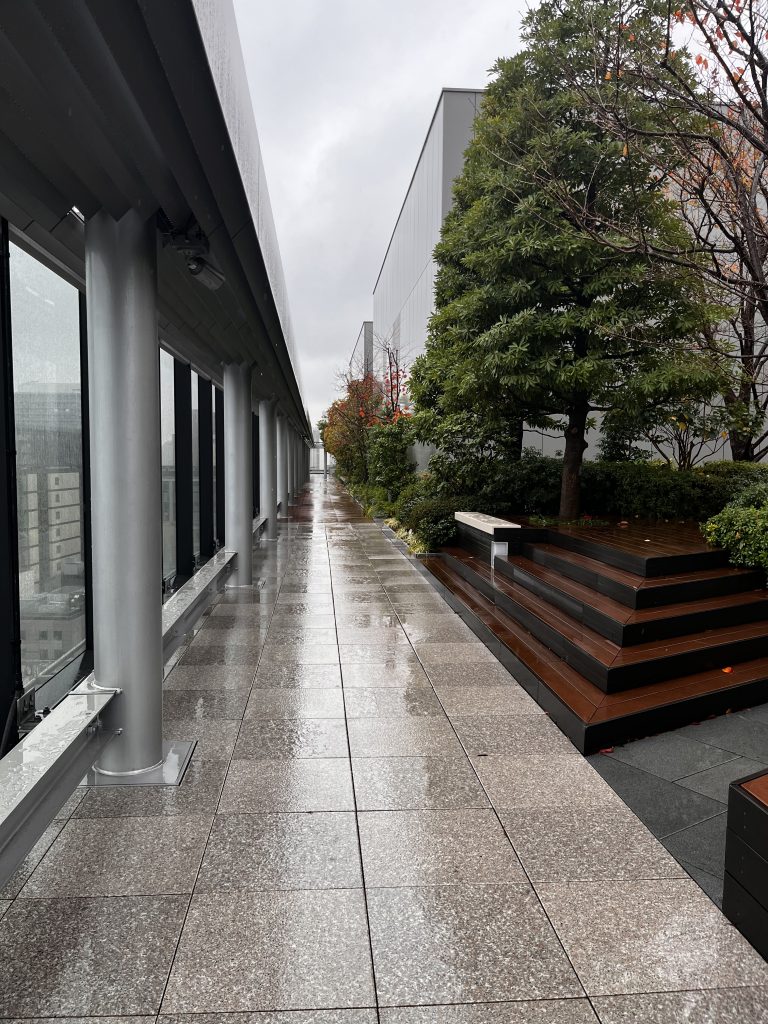
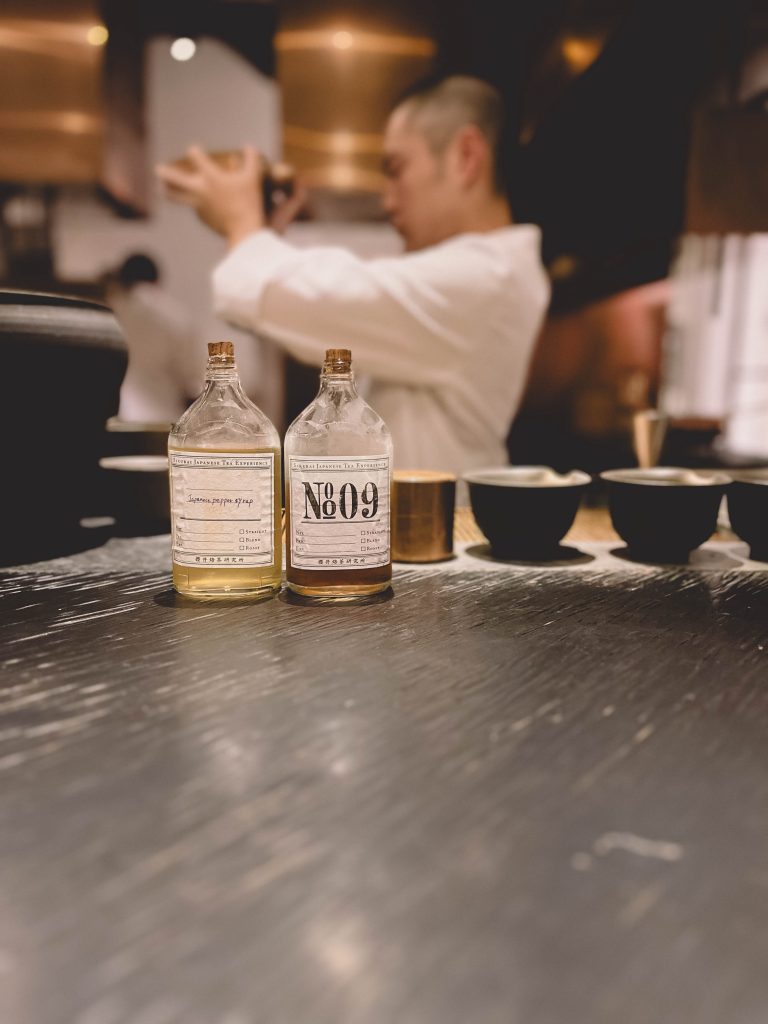


Leave a Reply